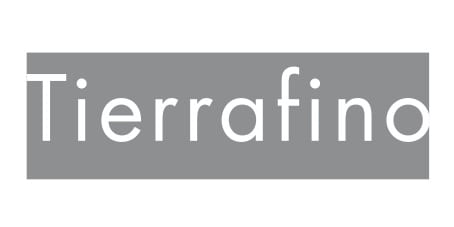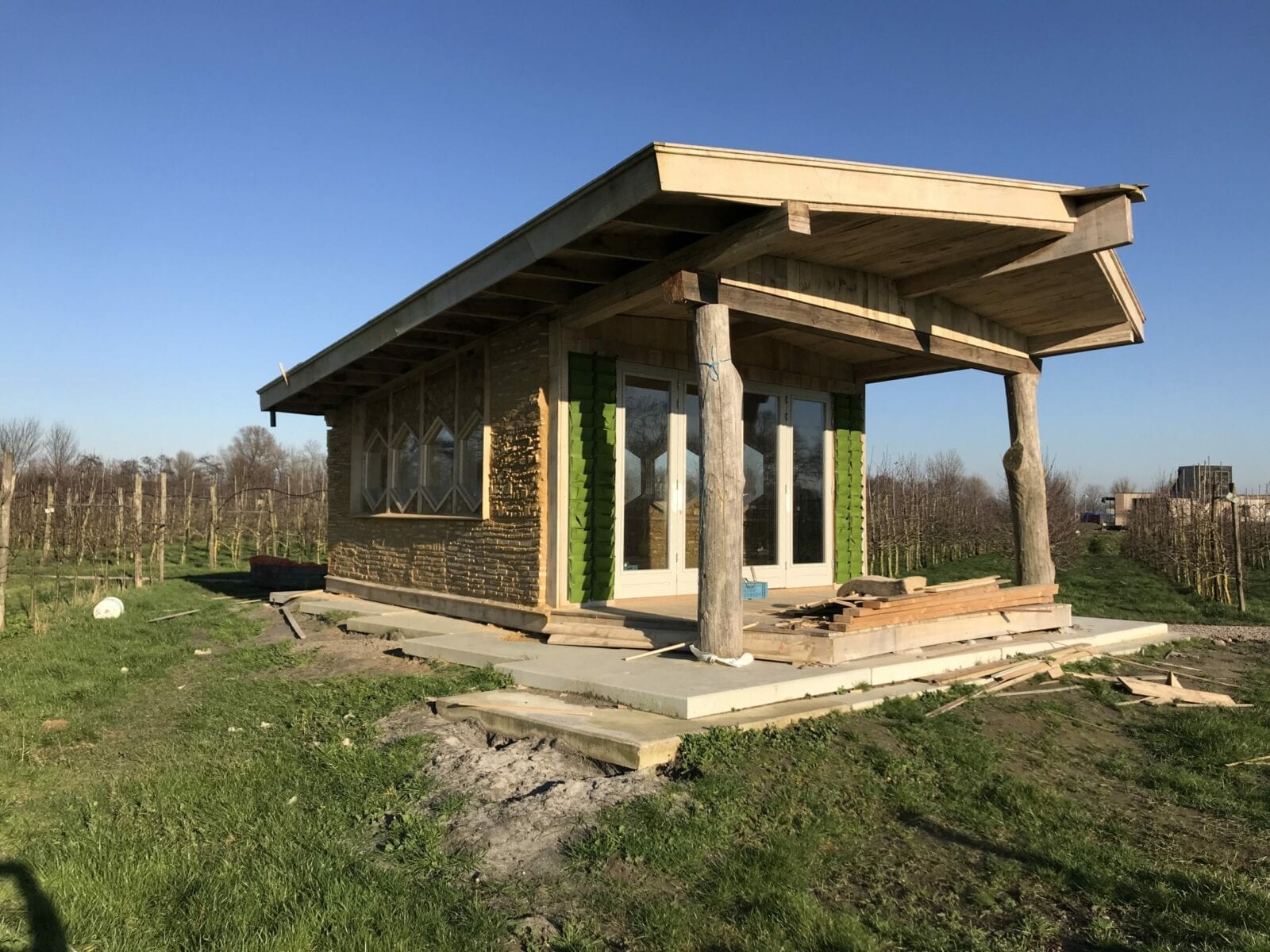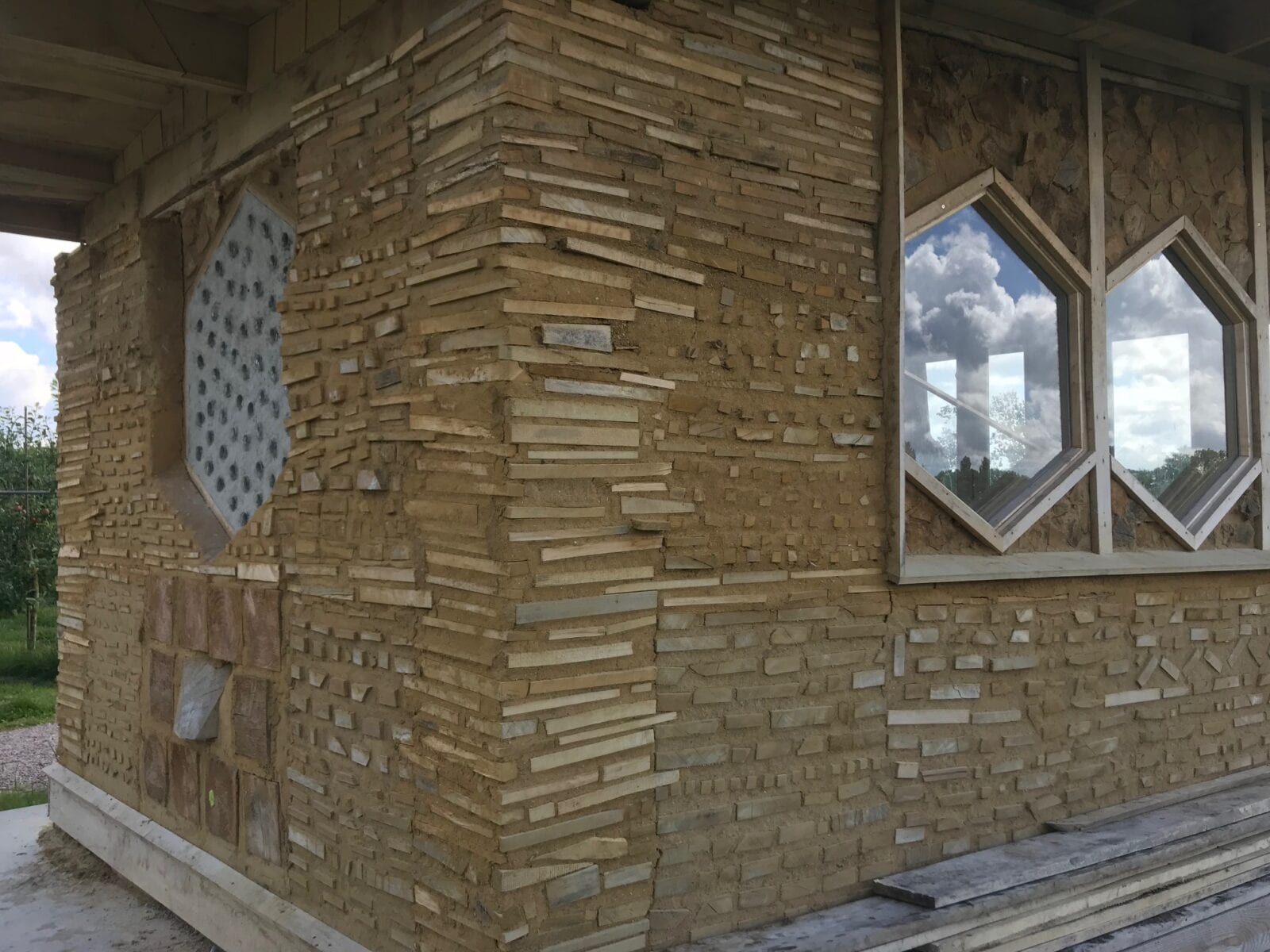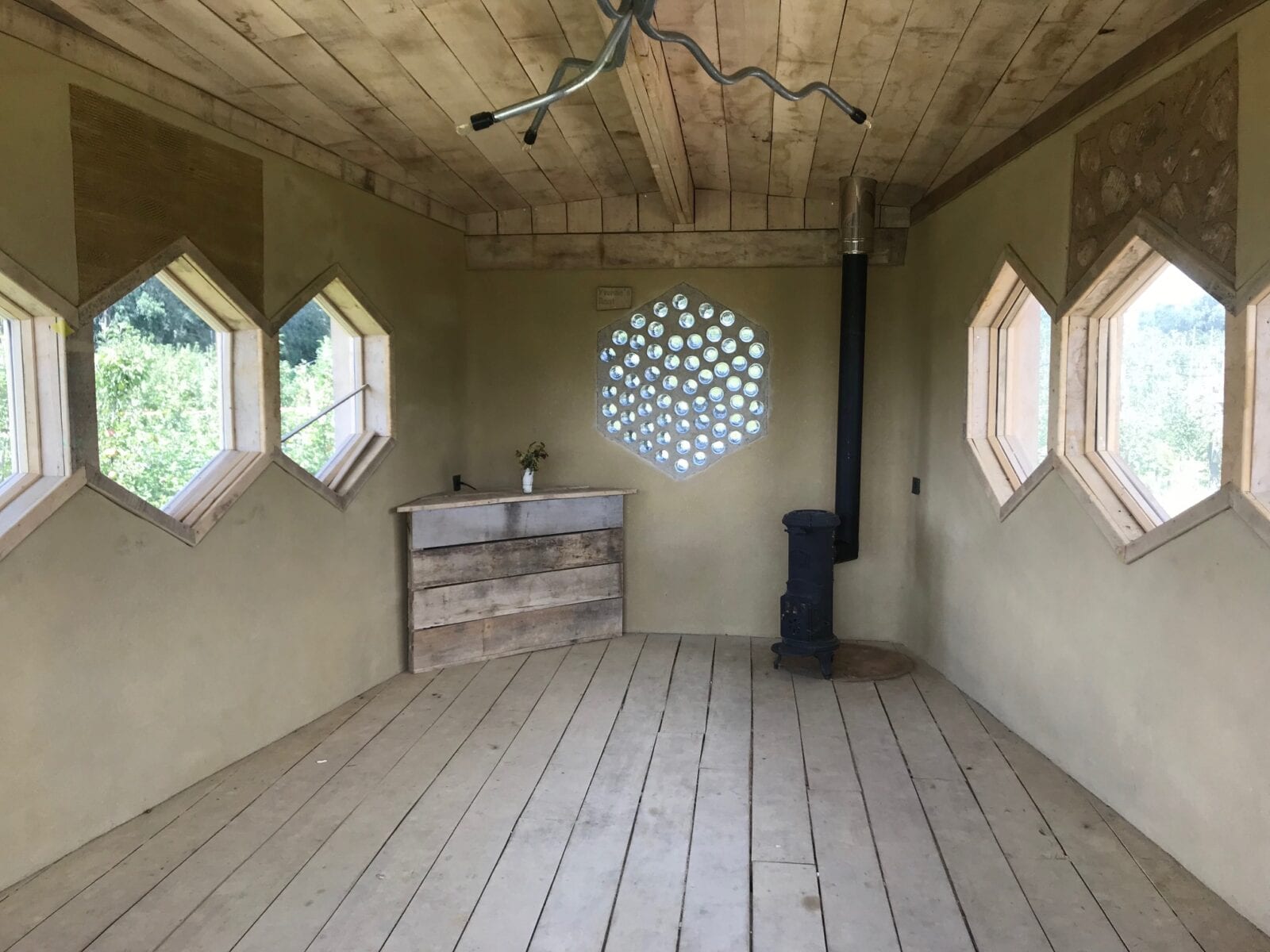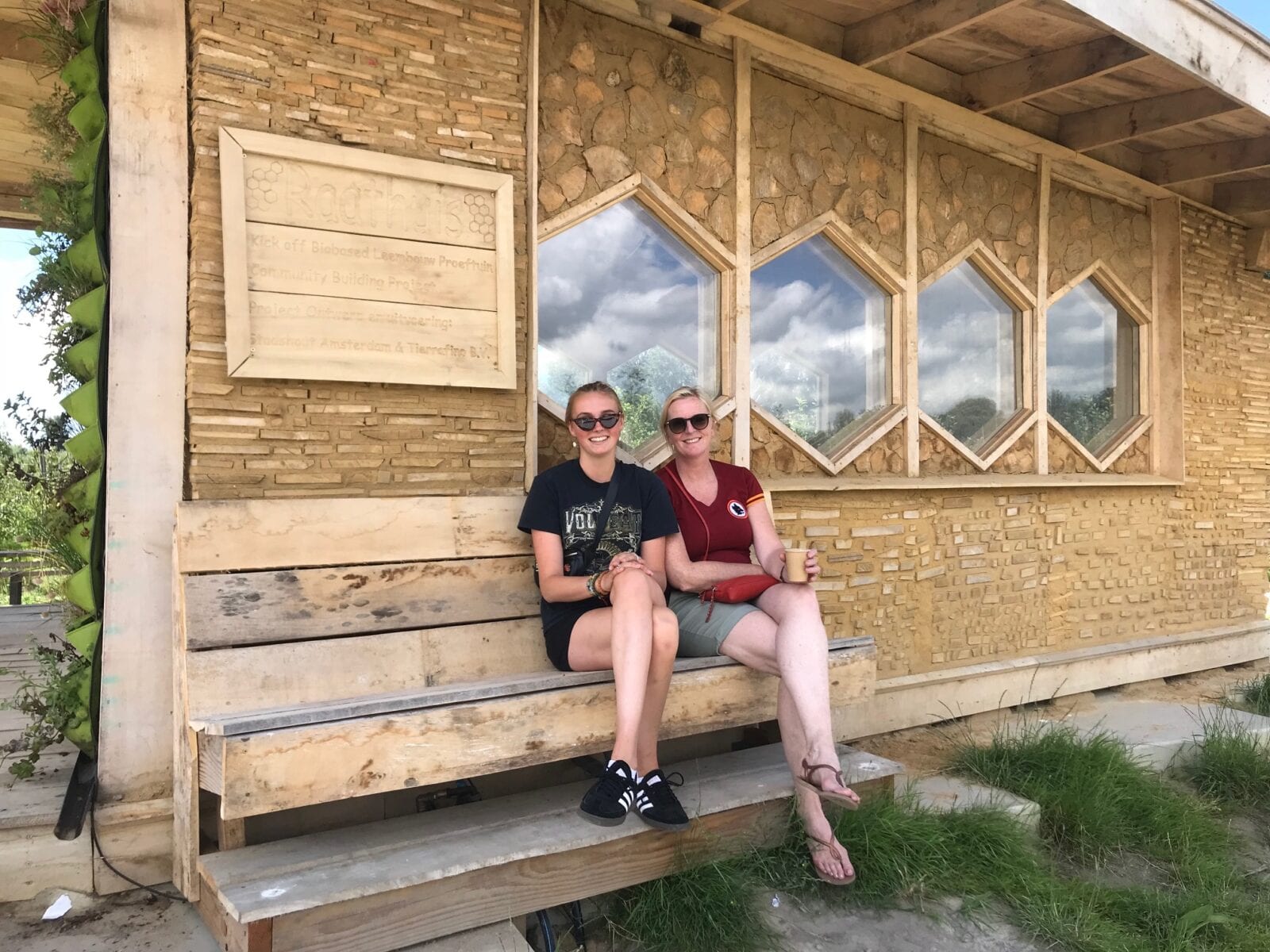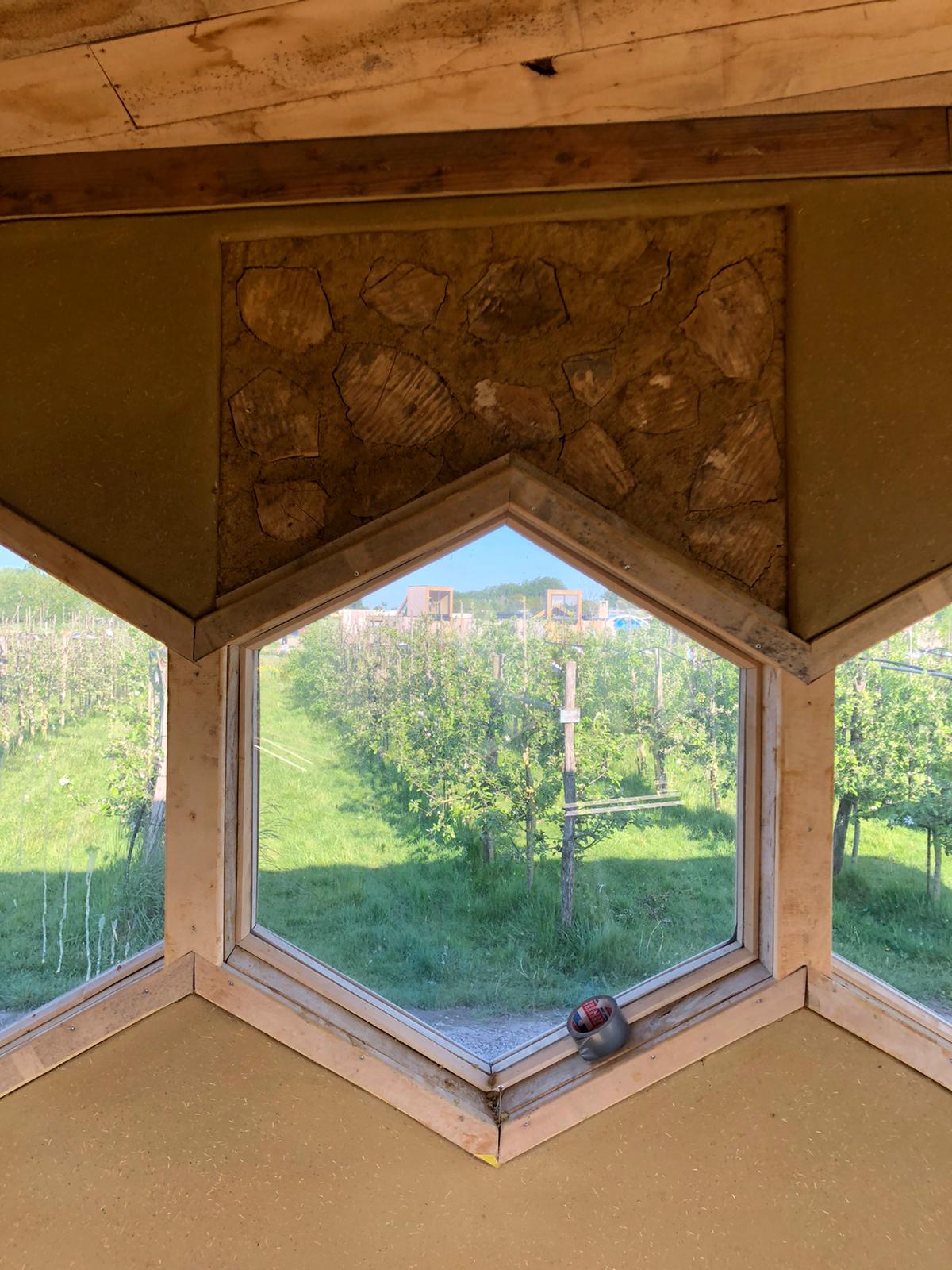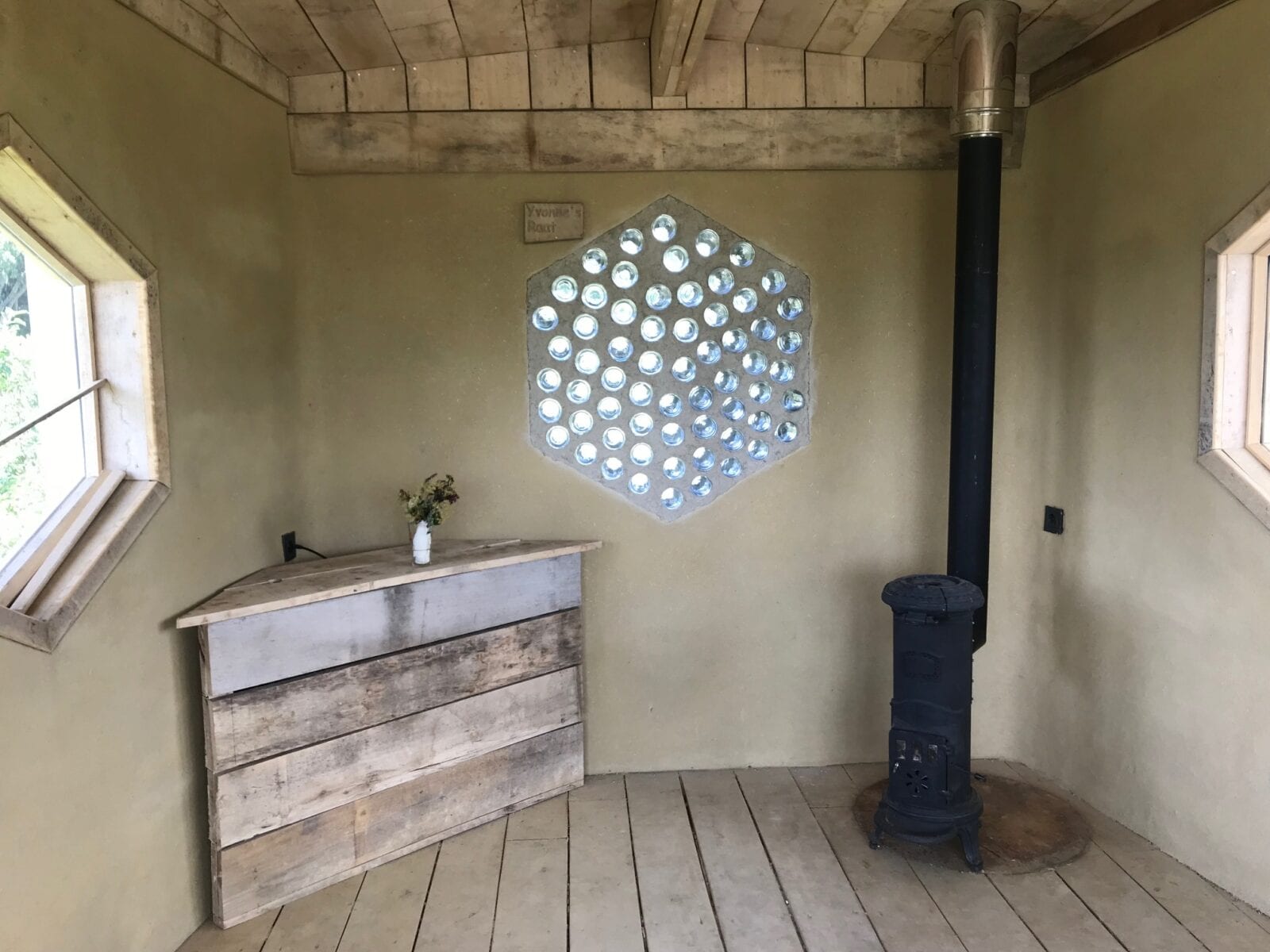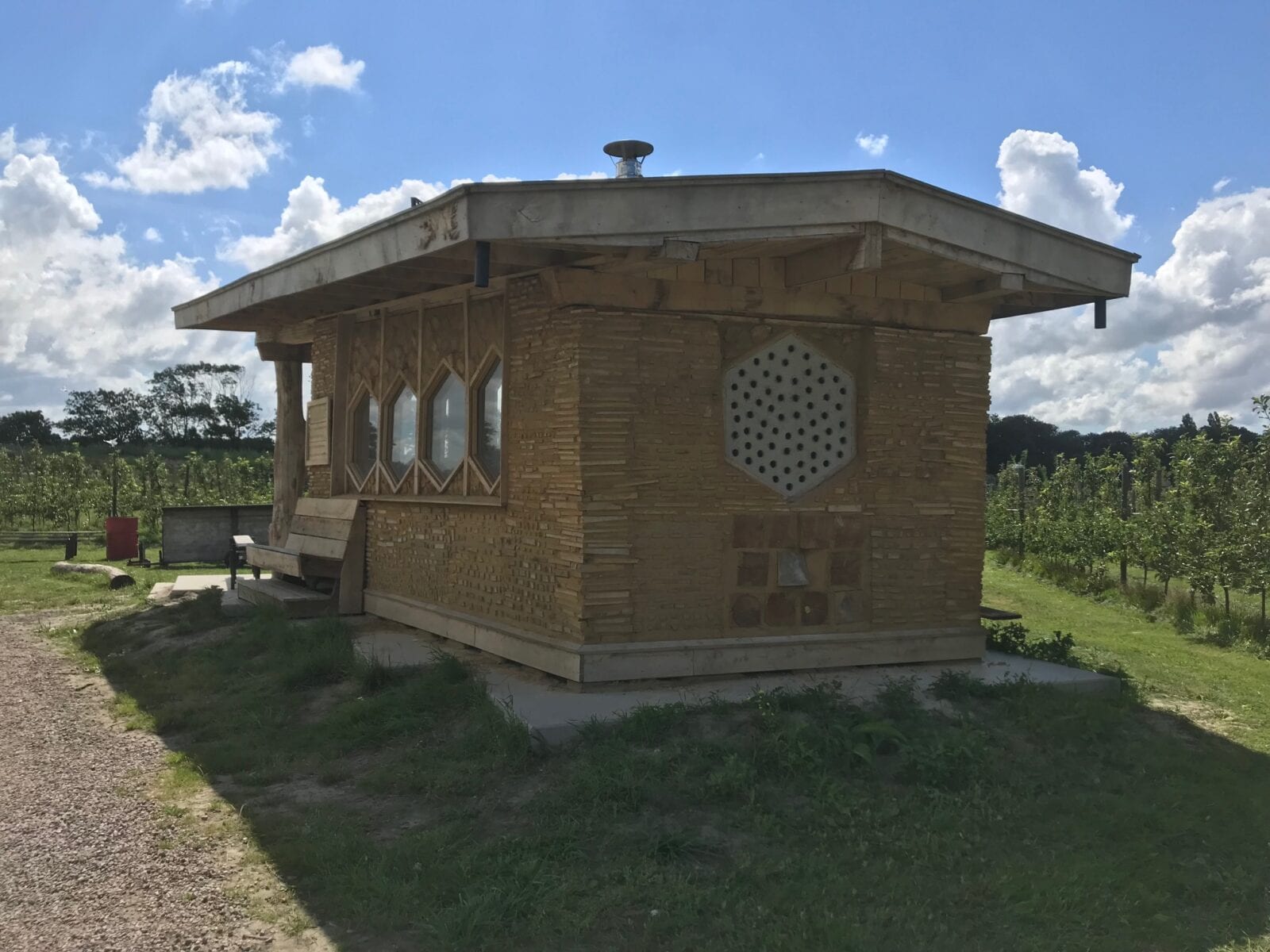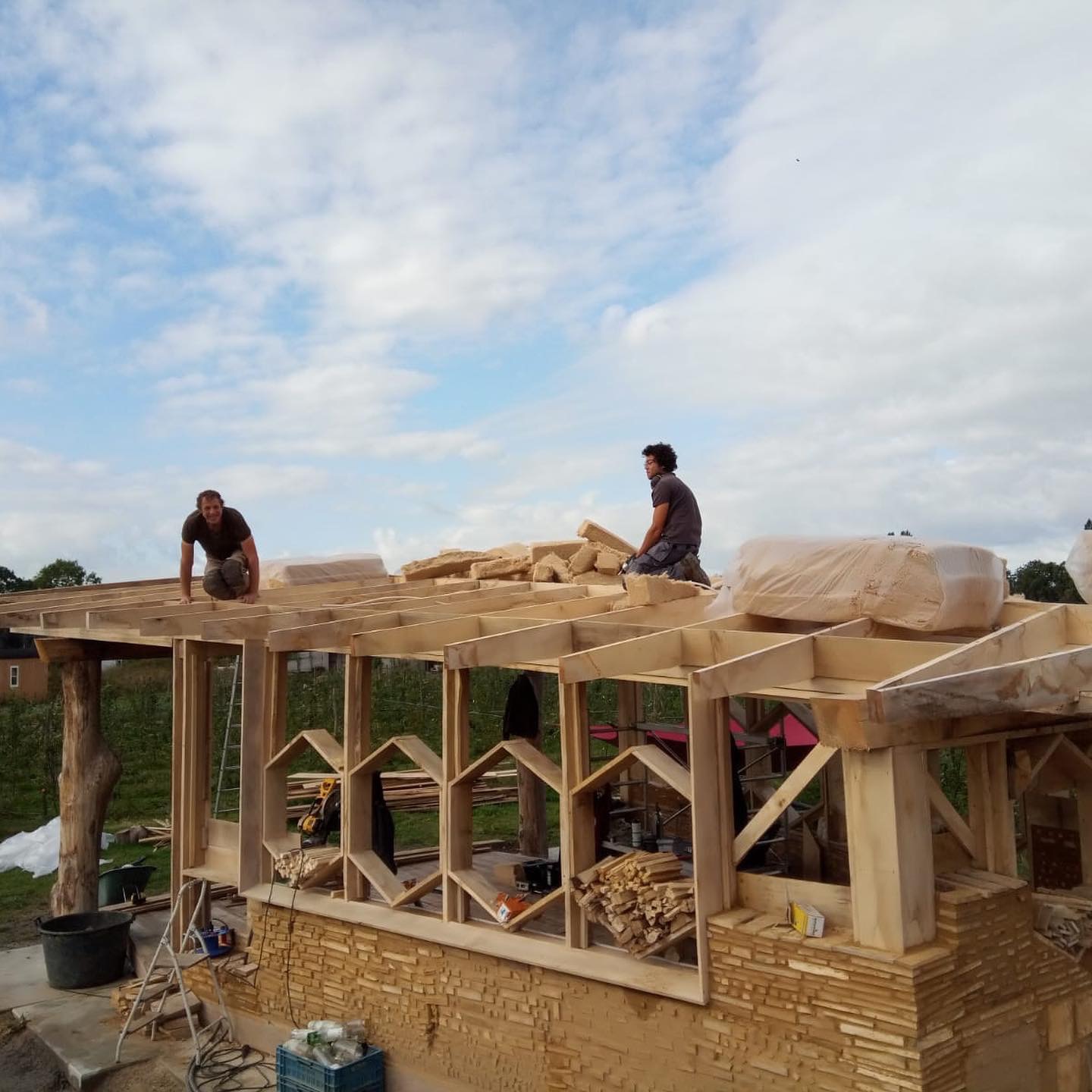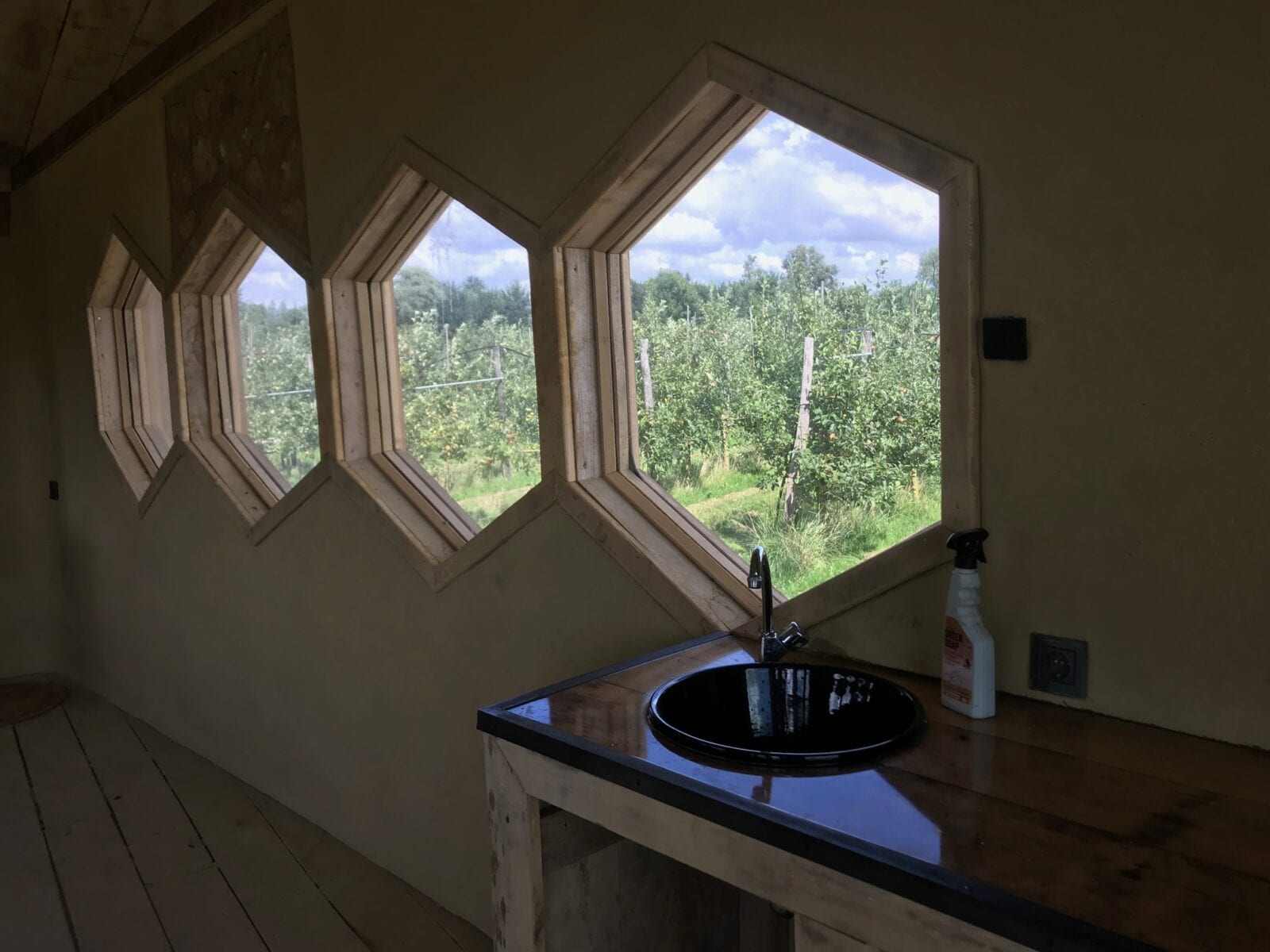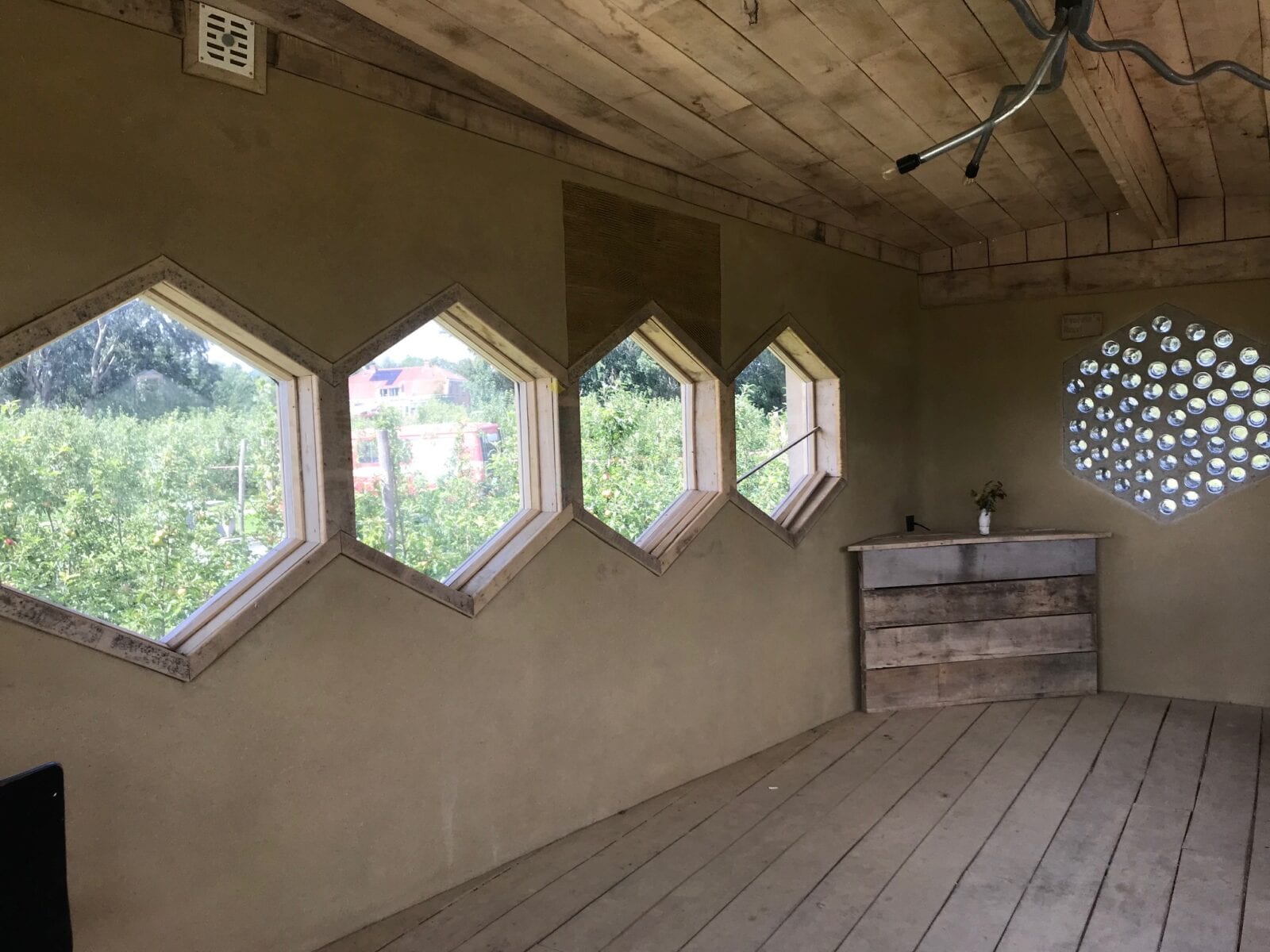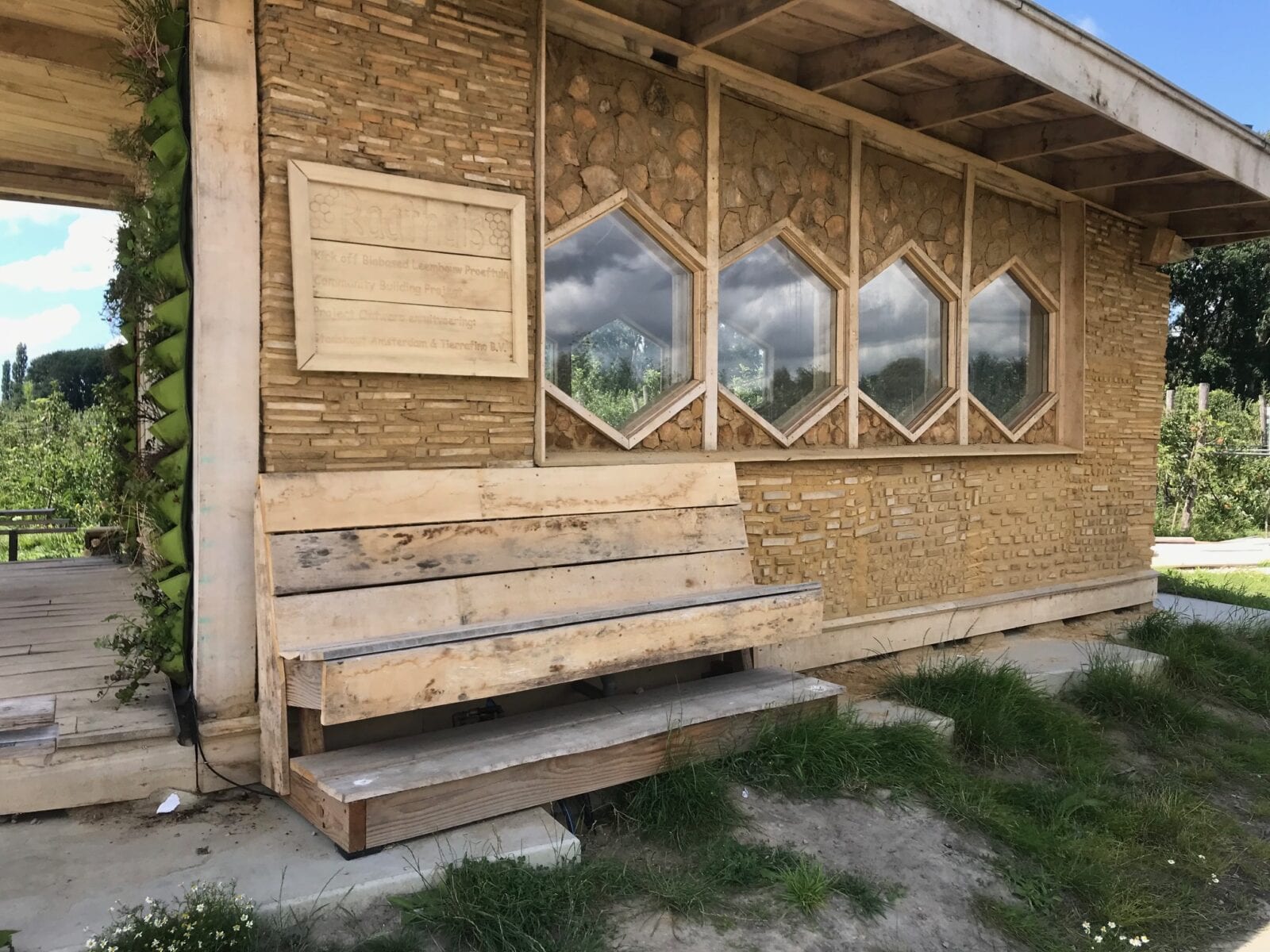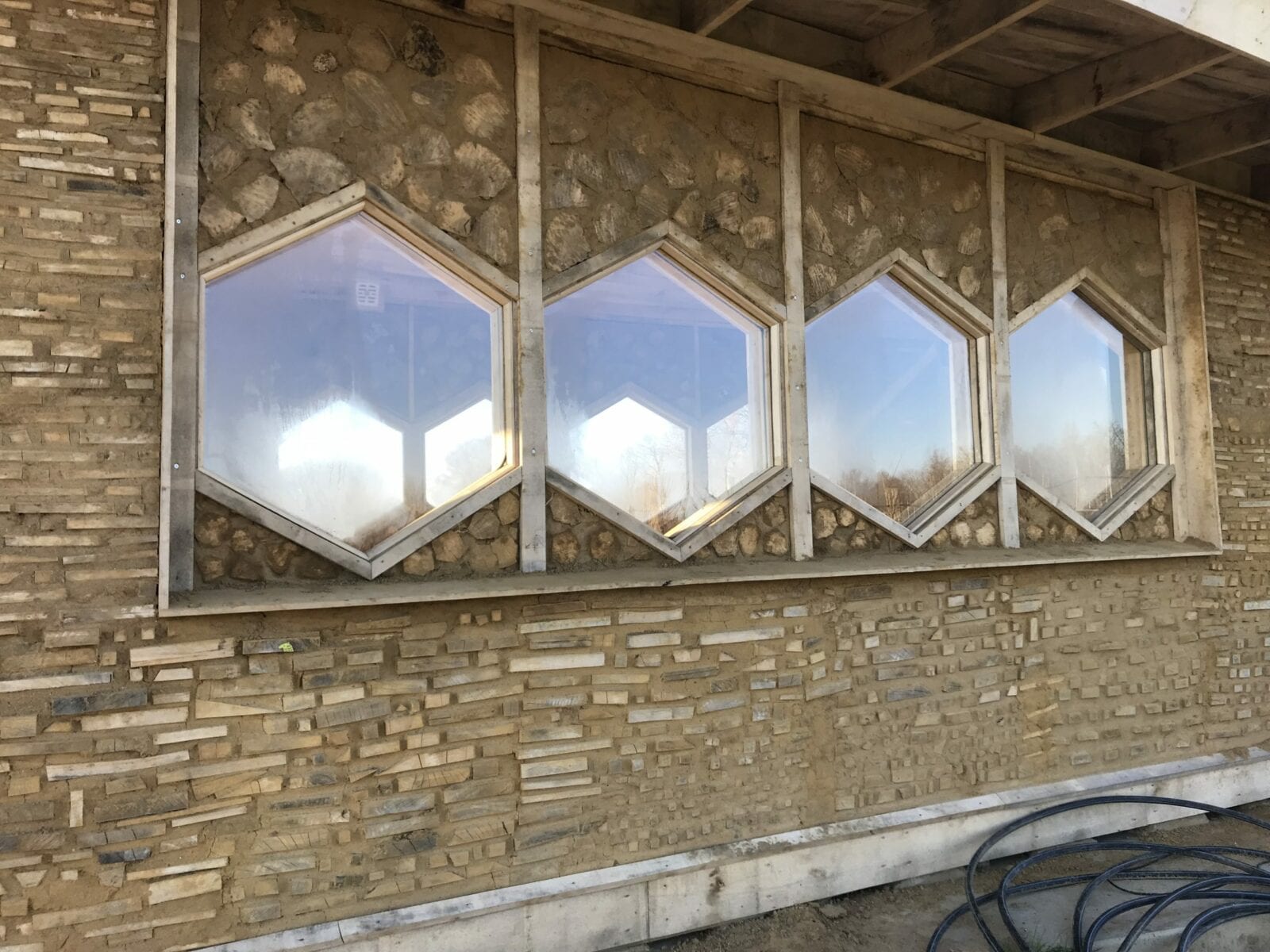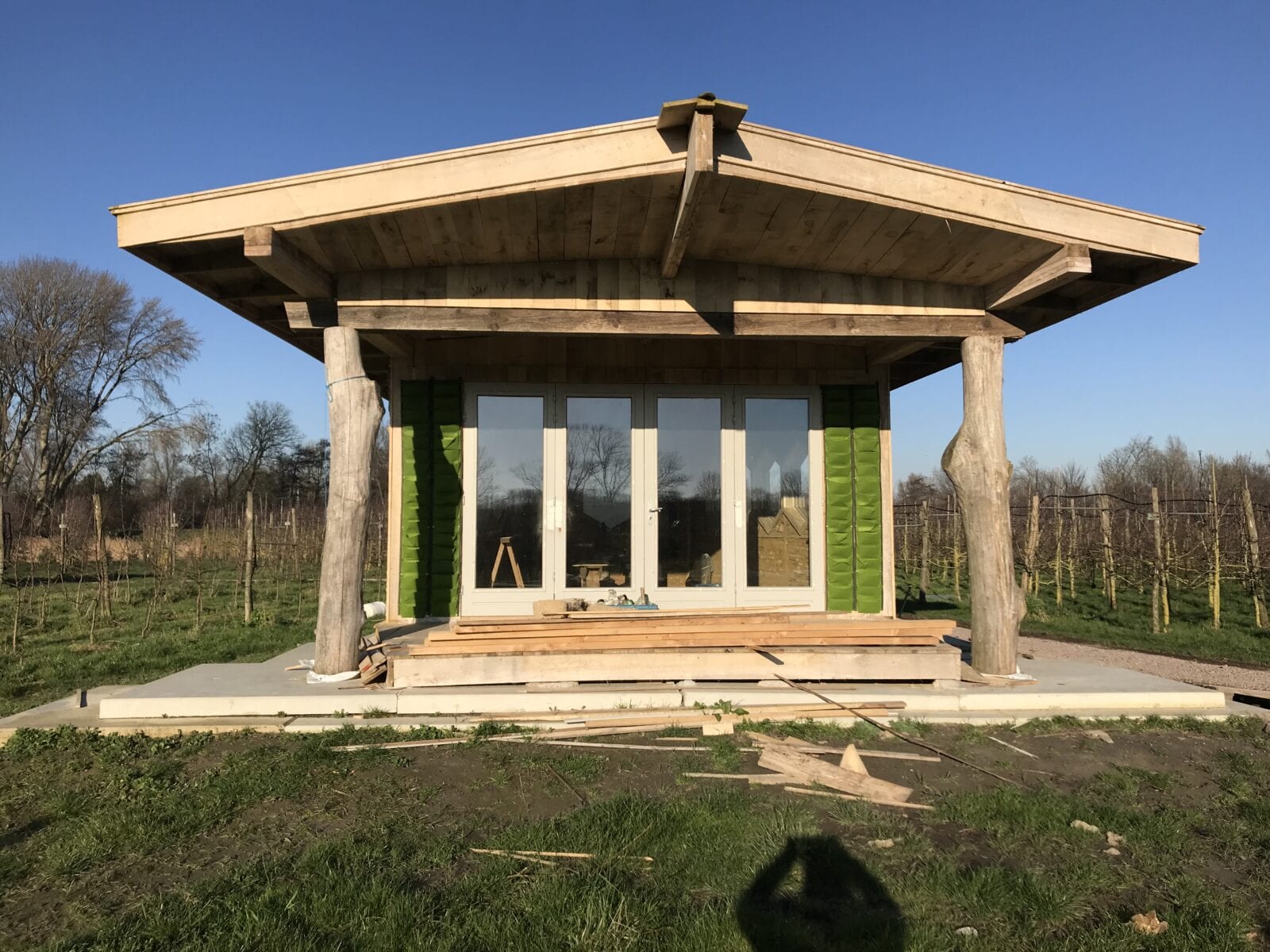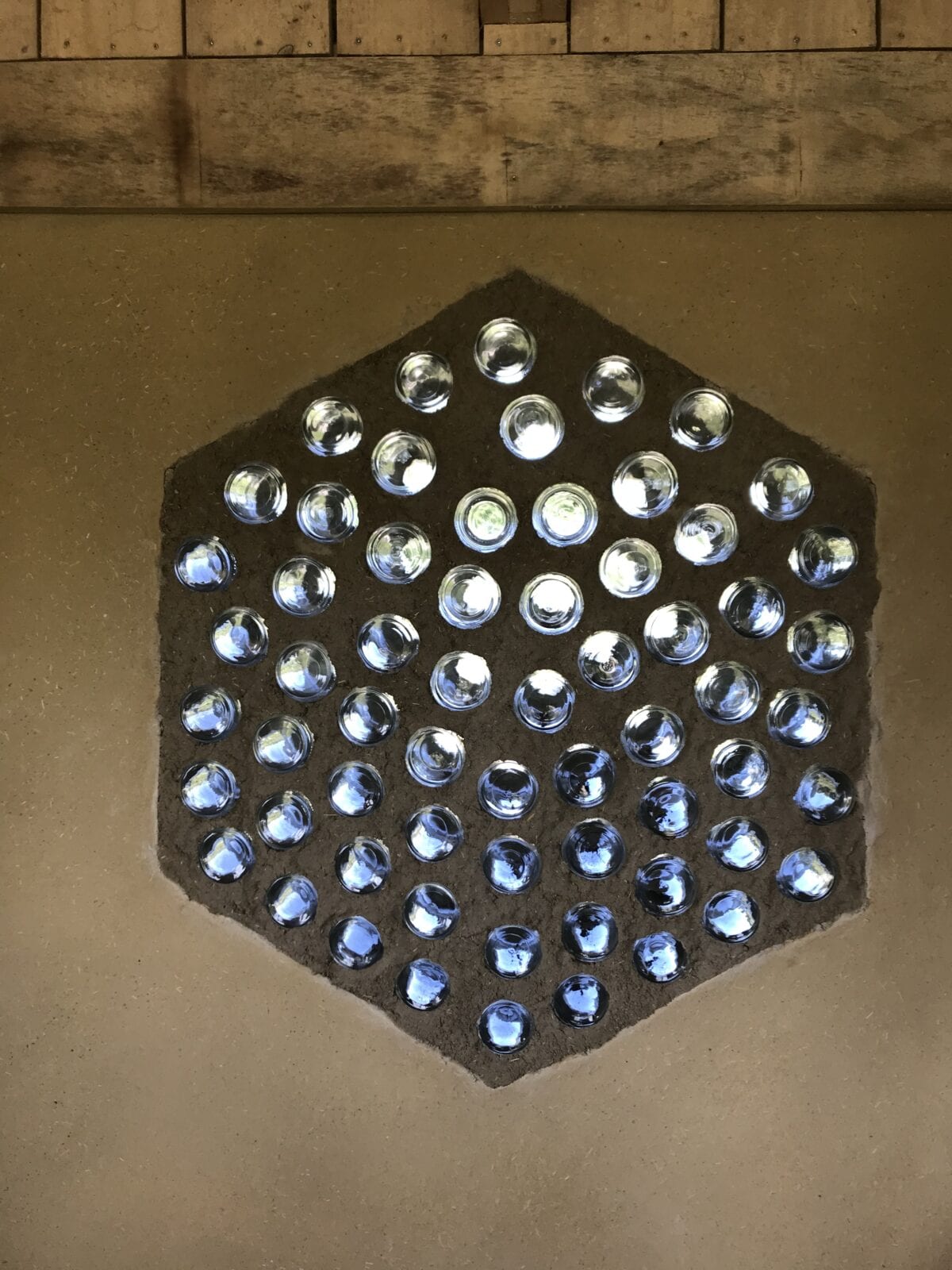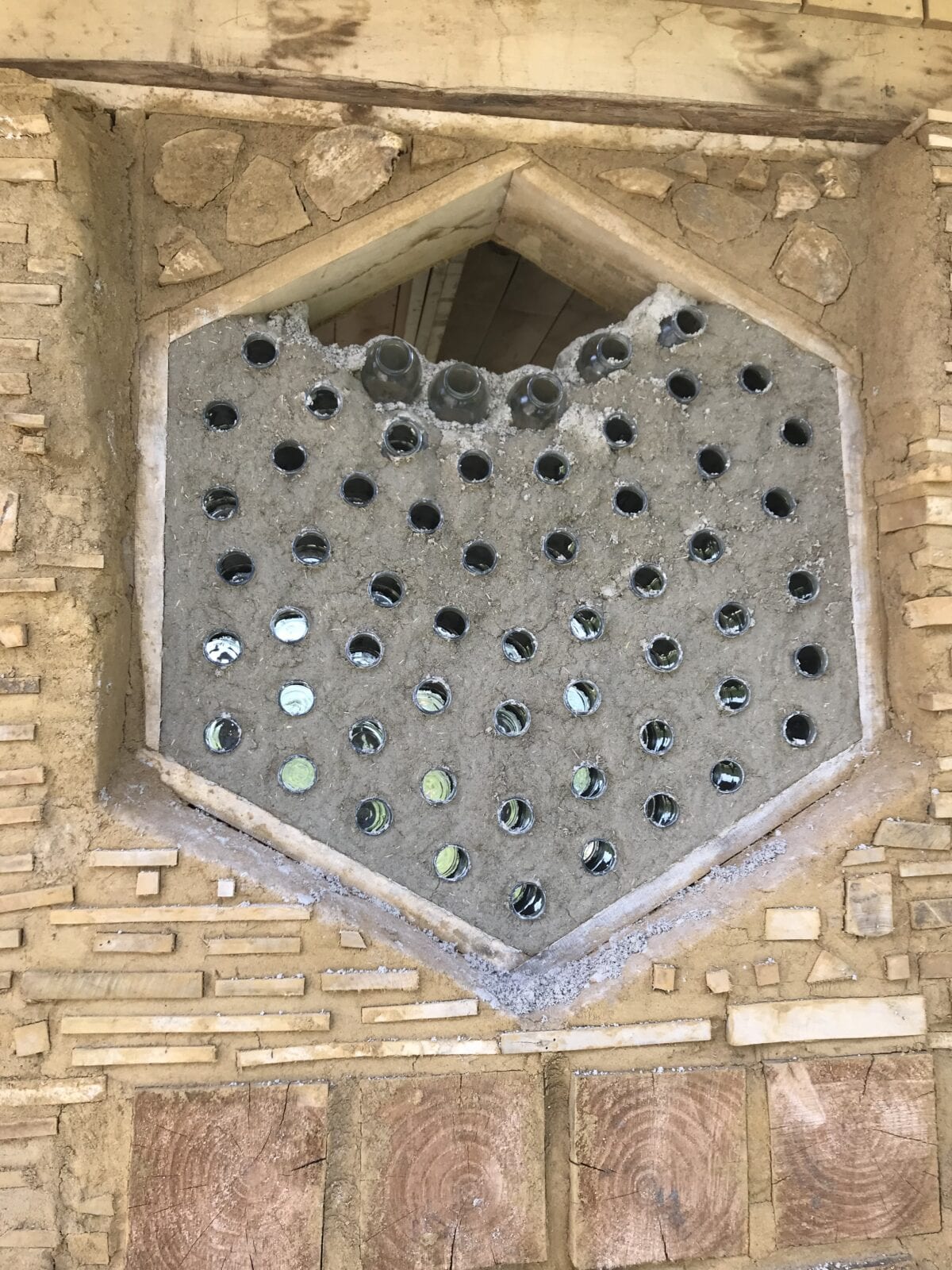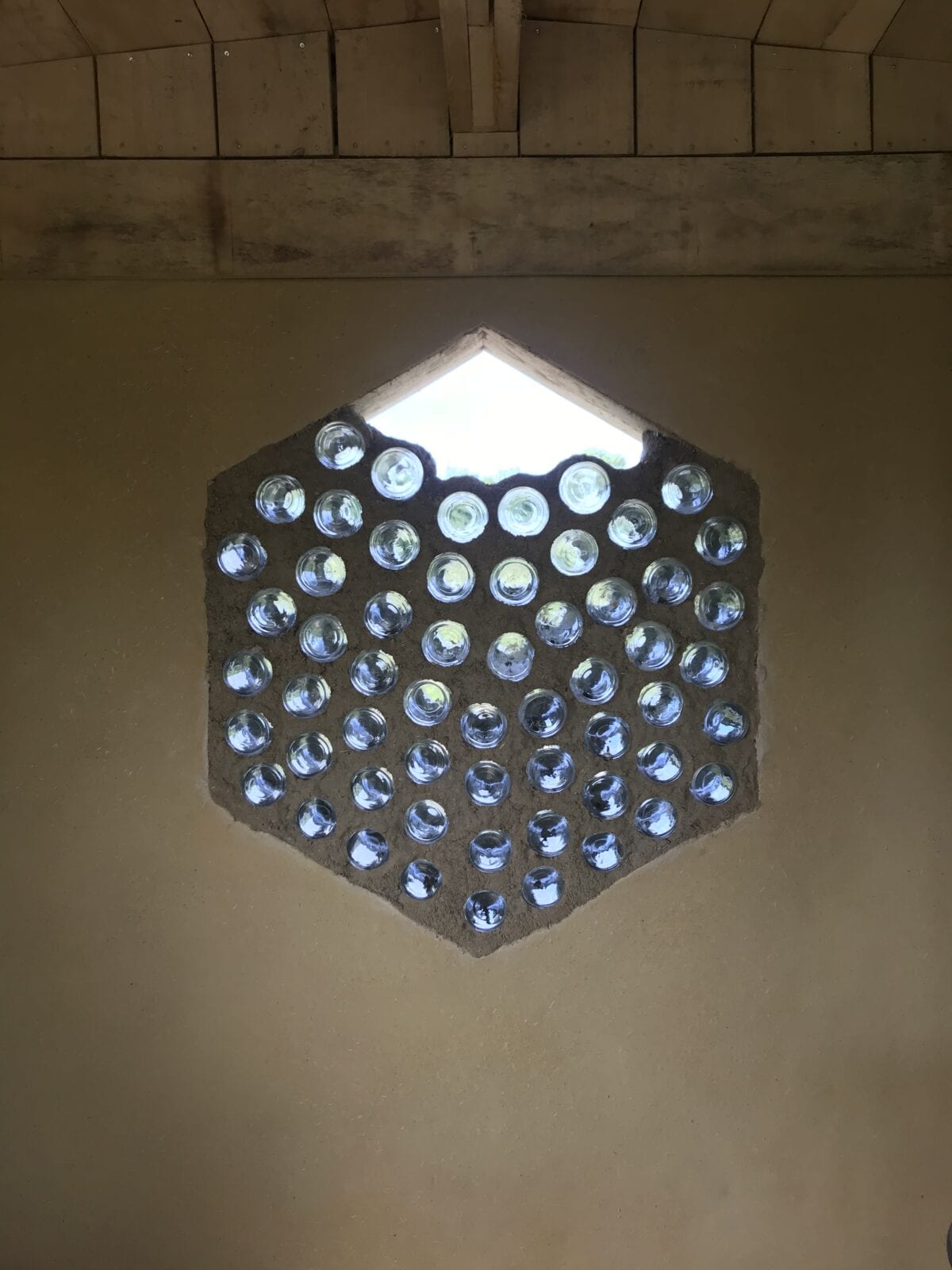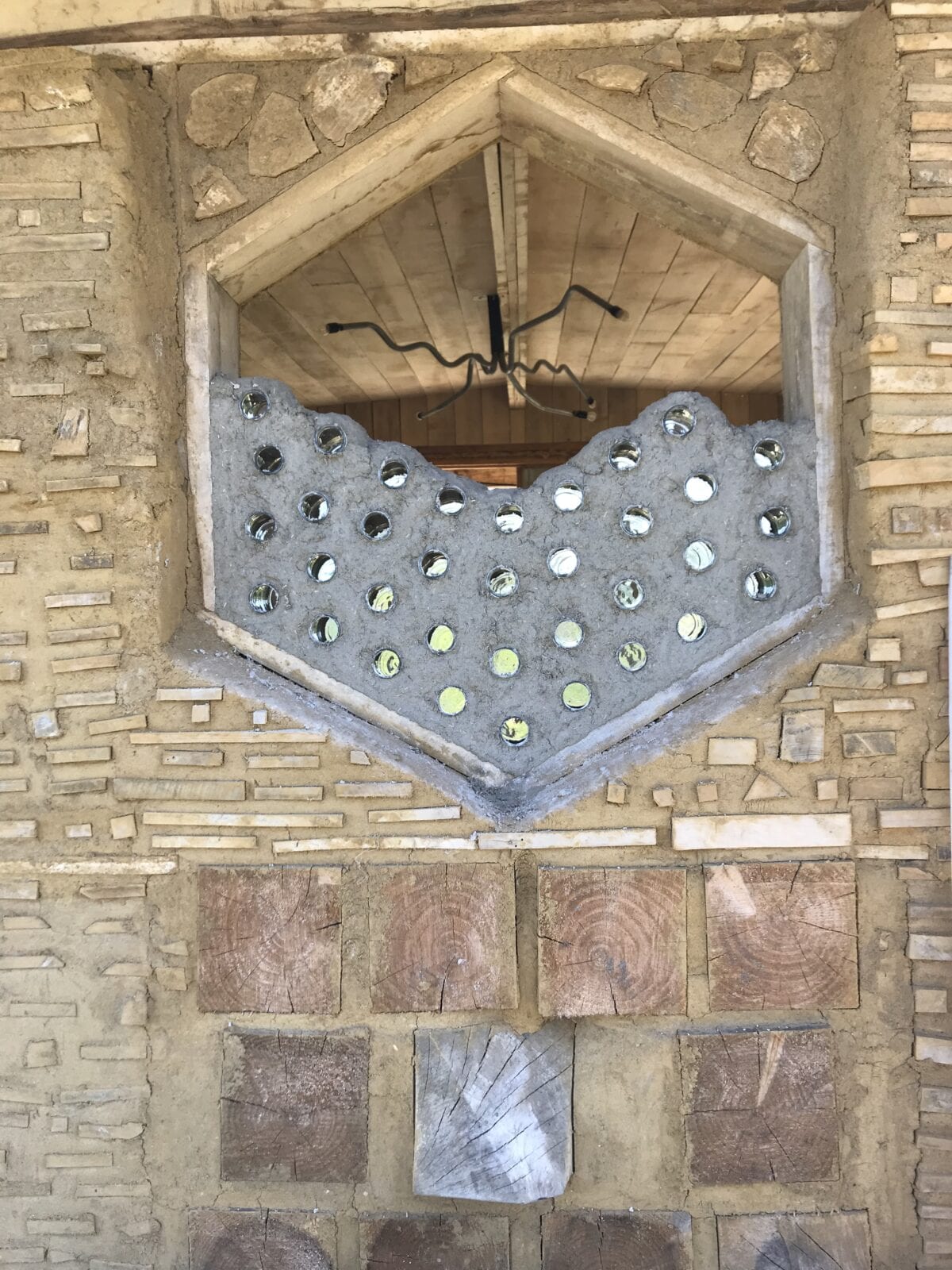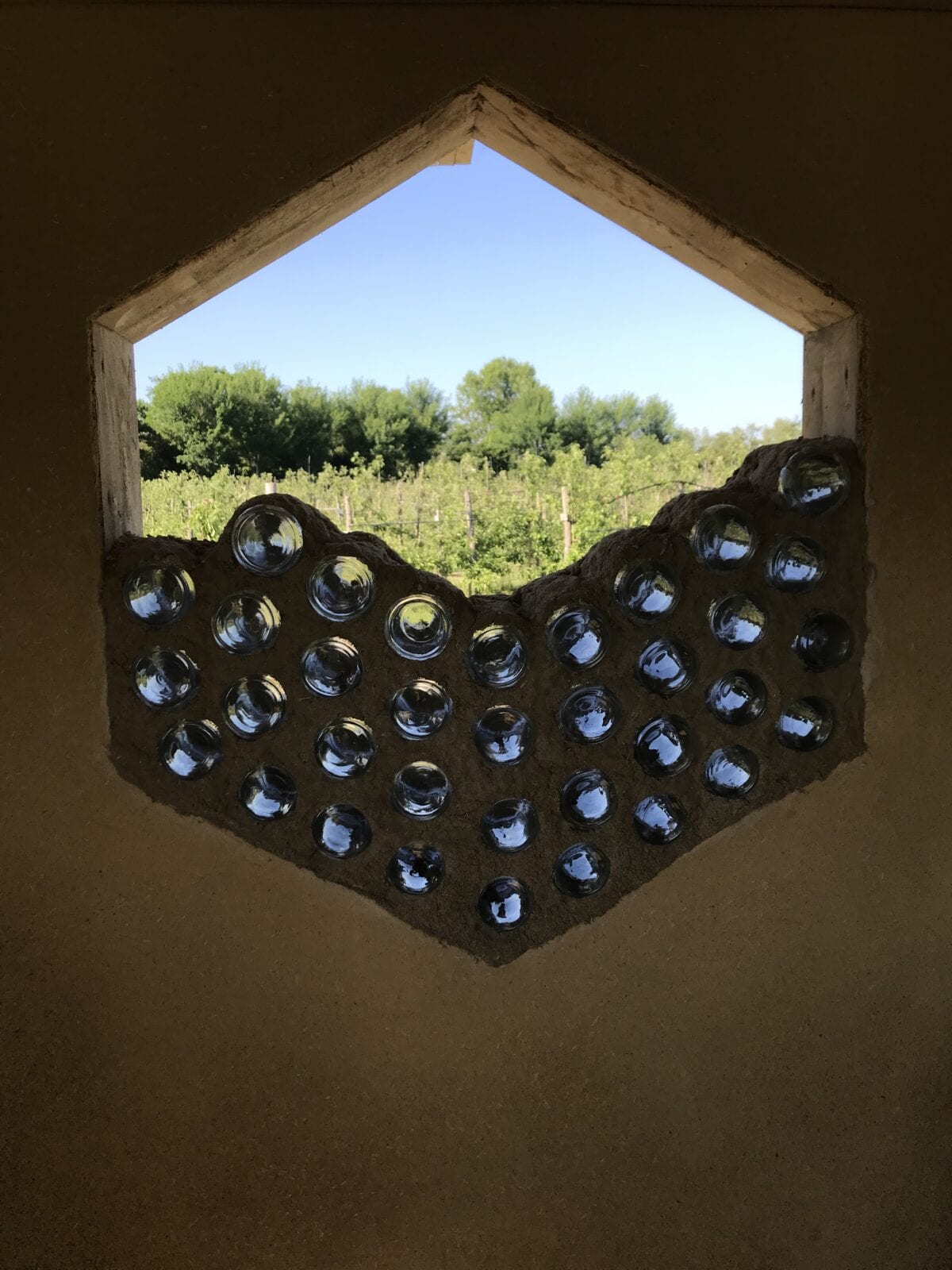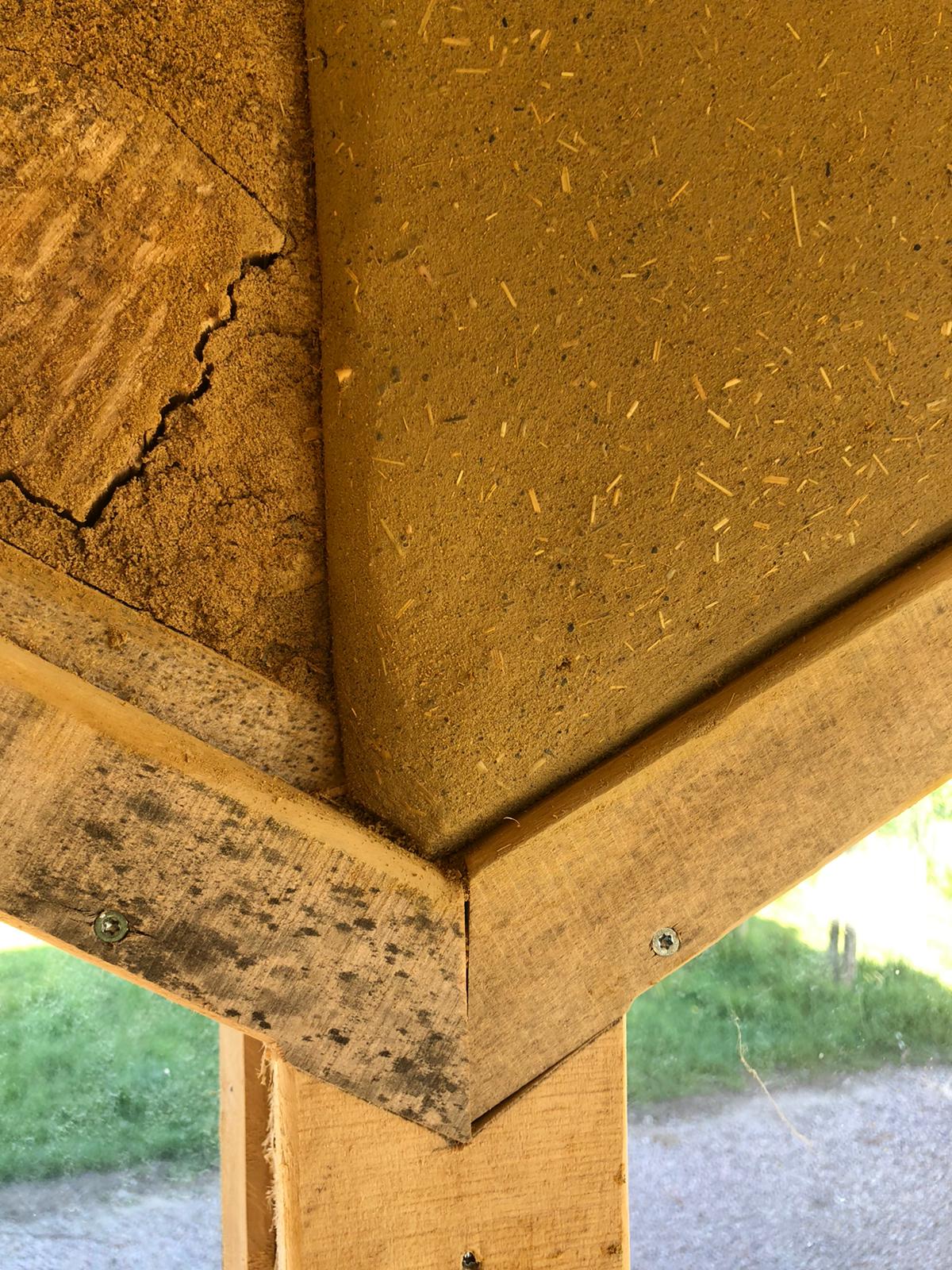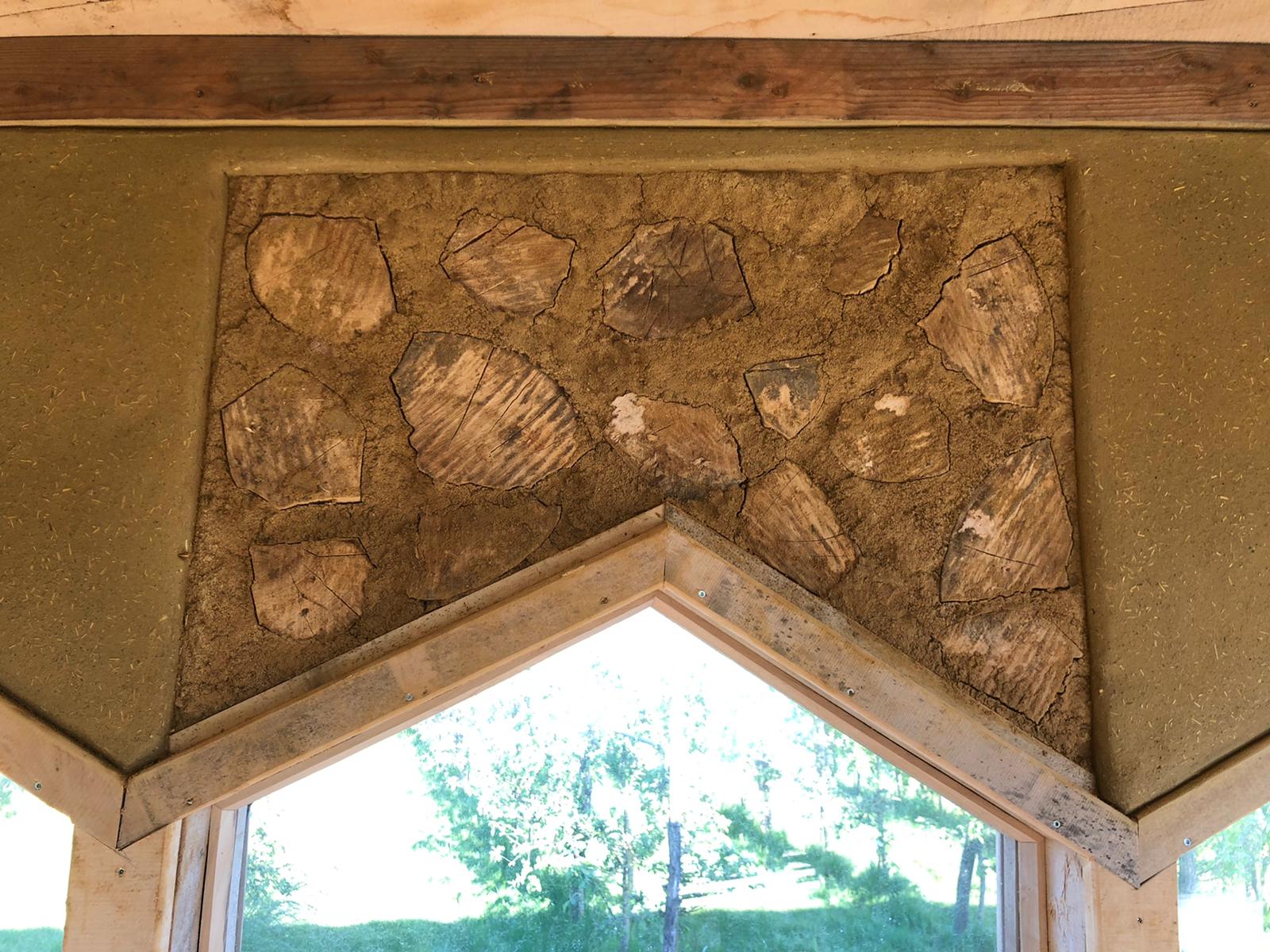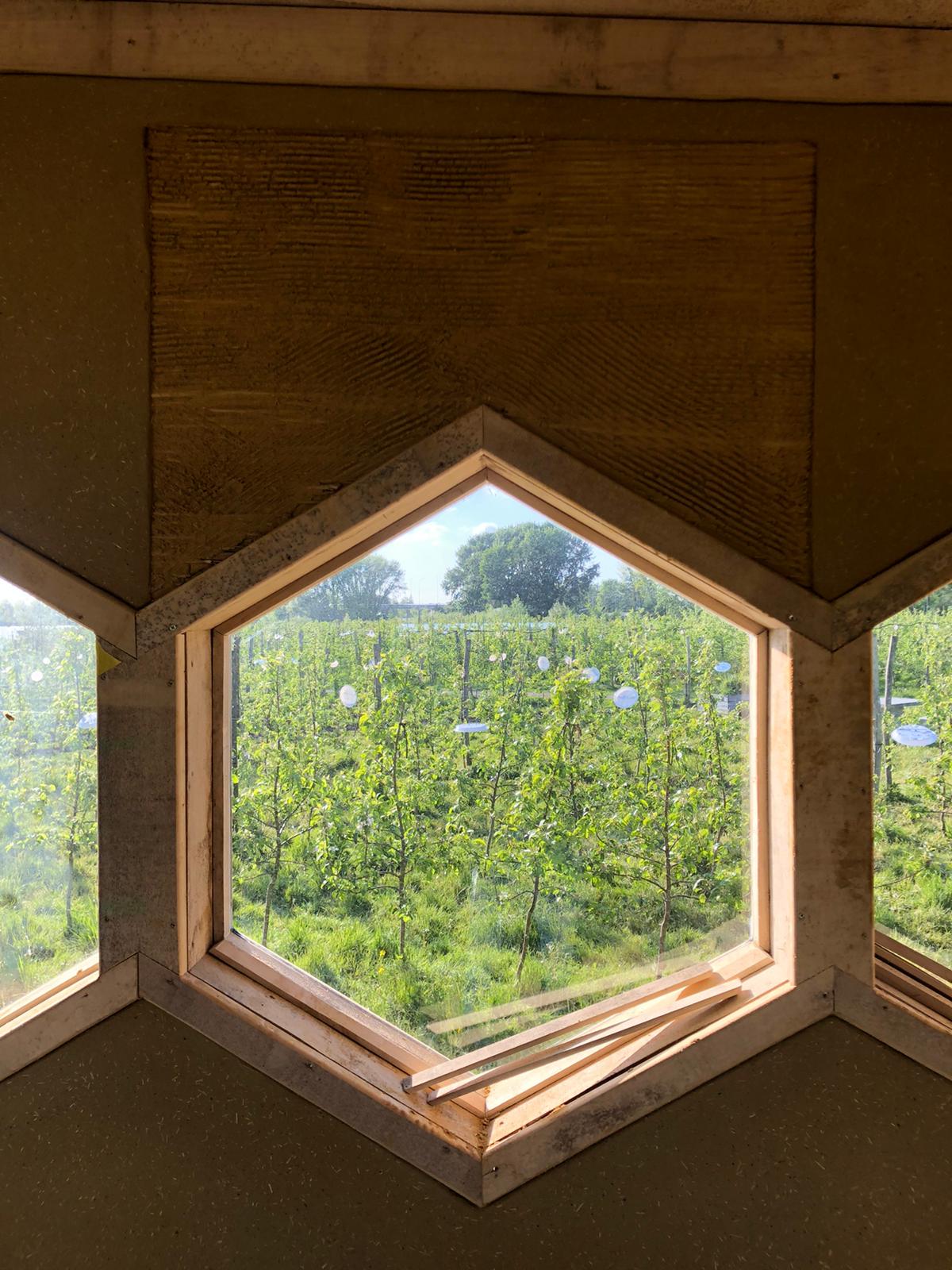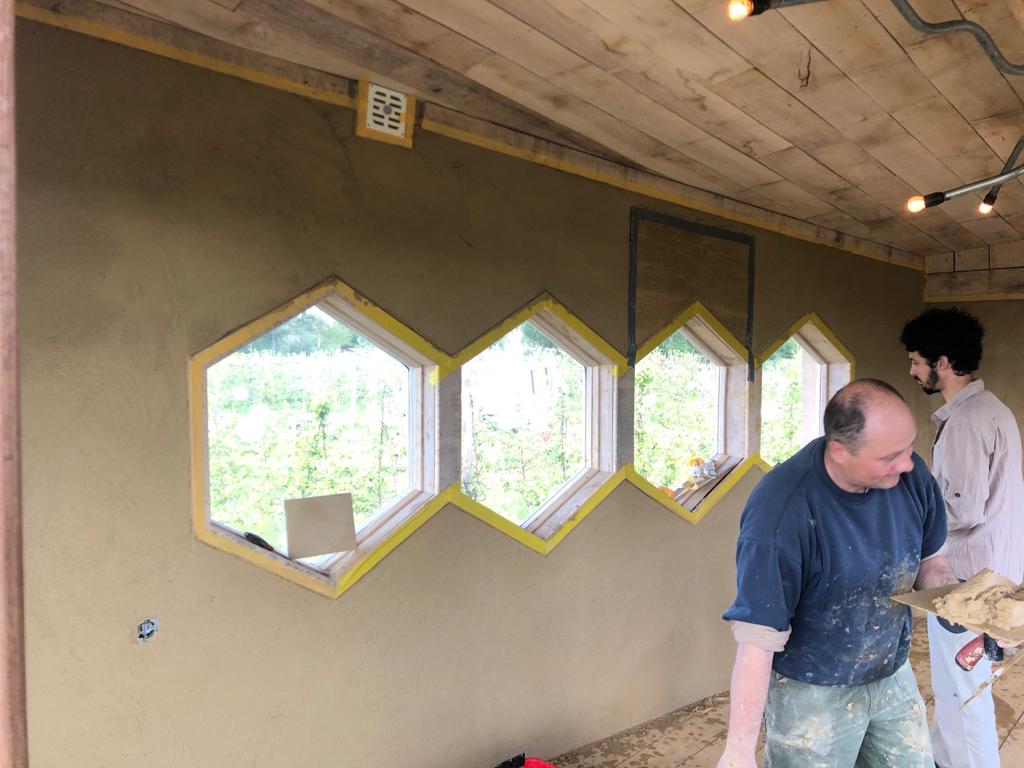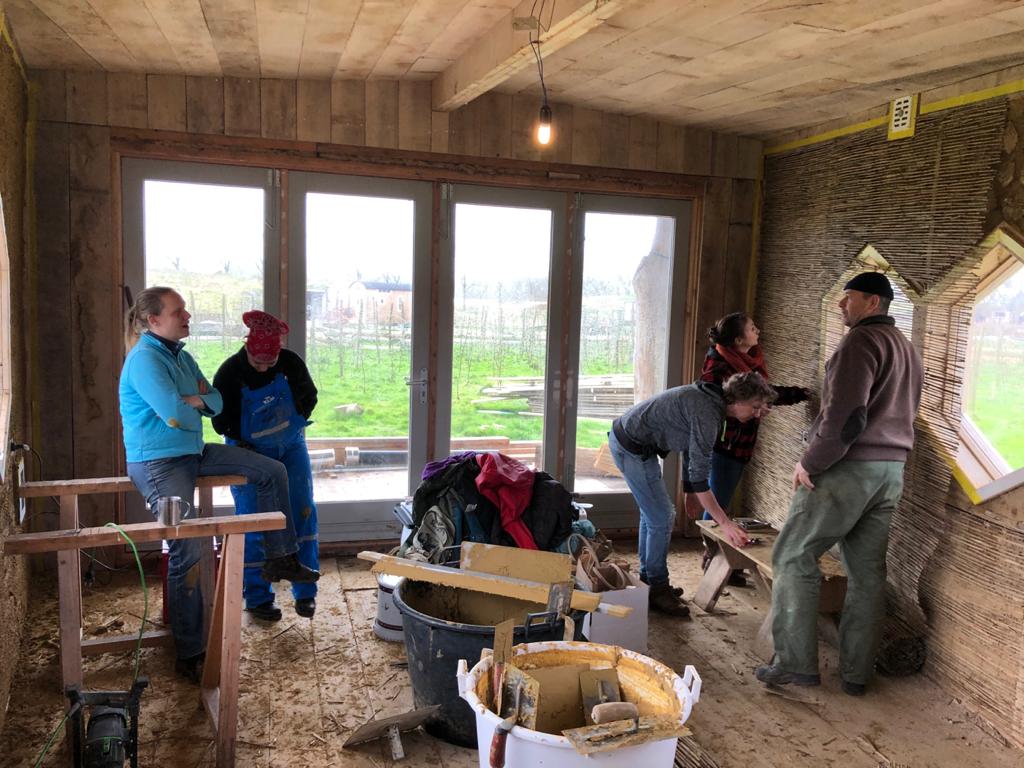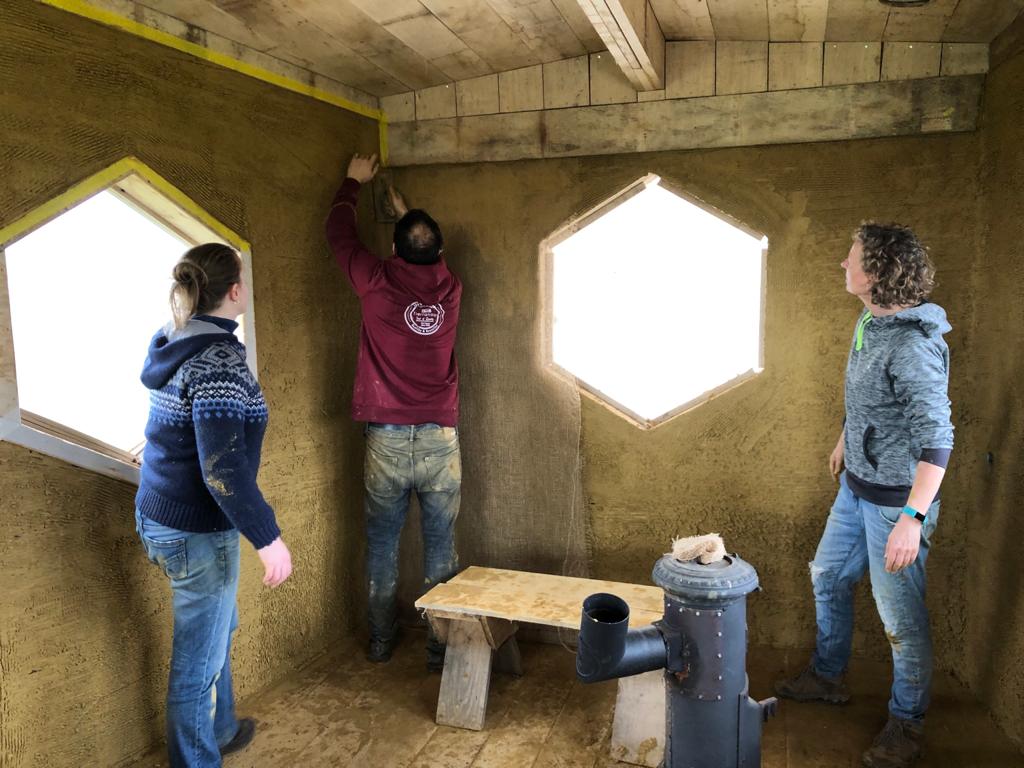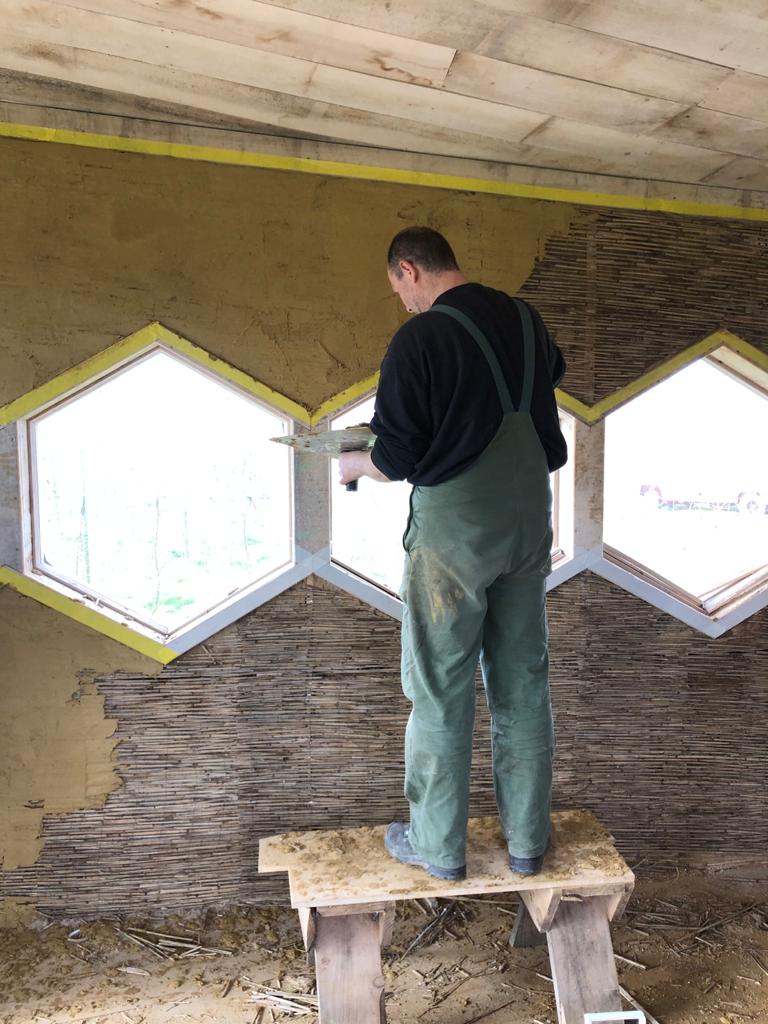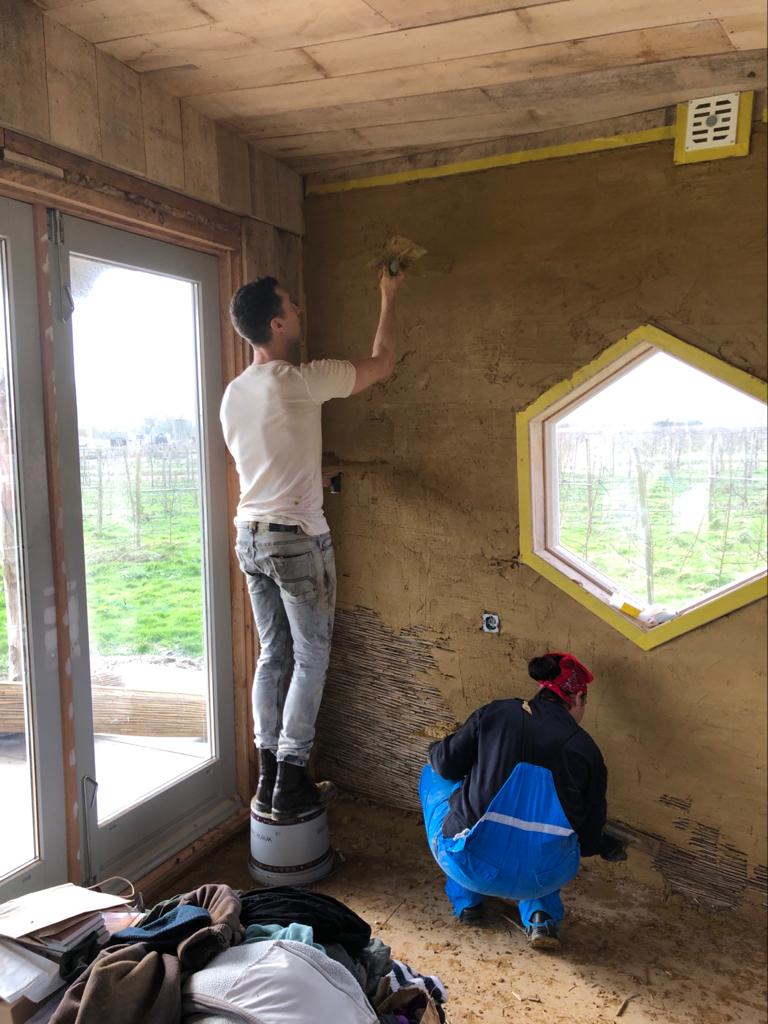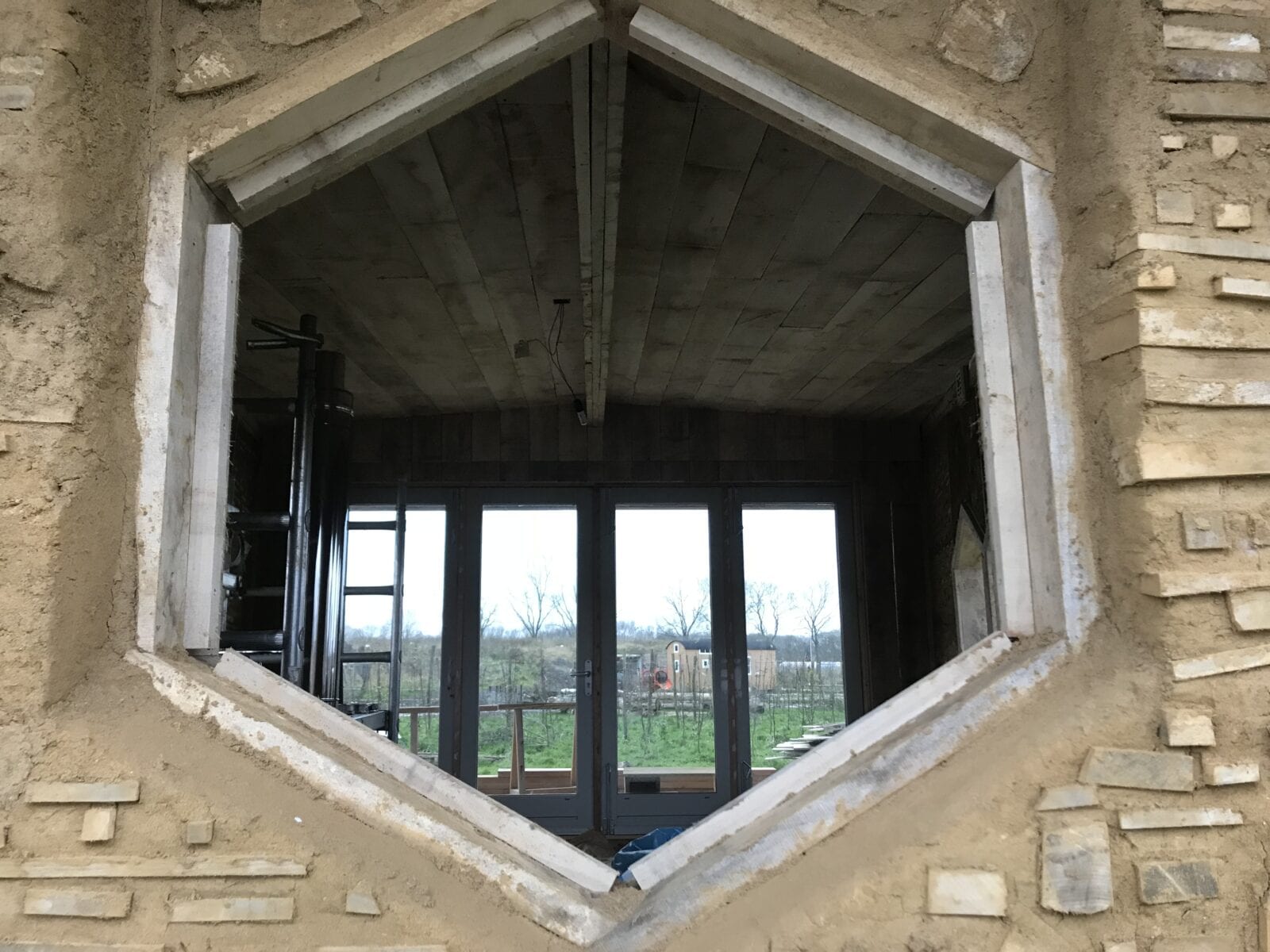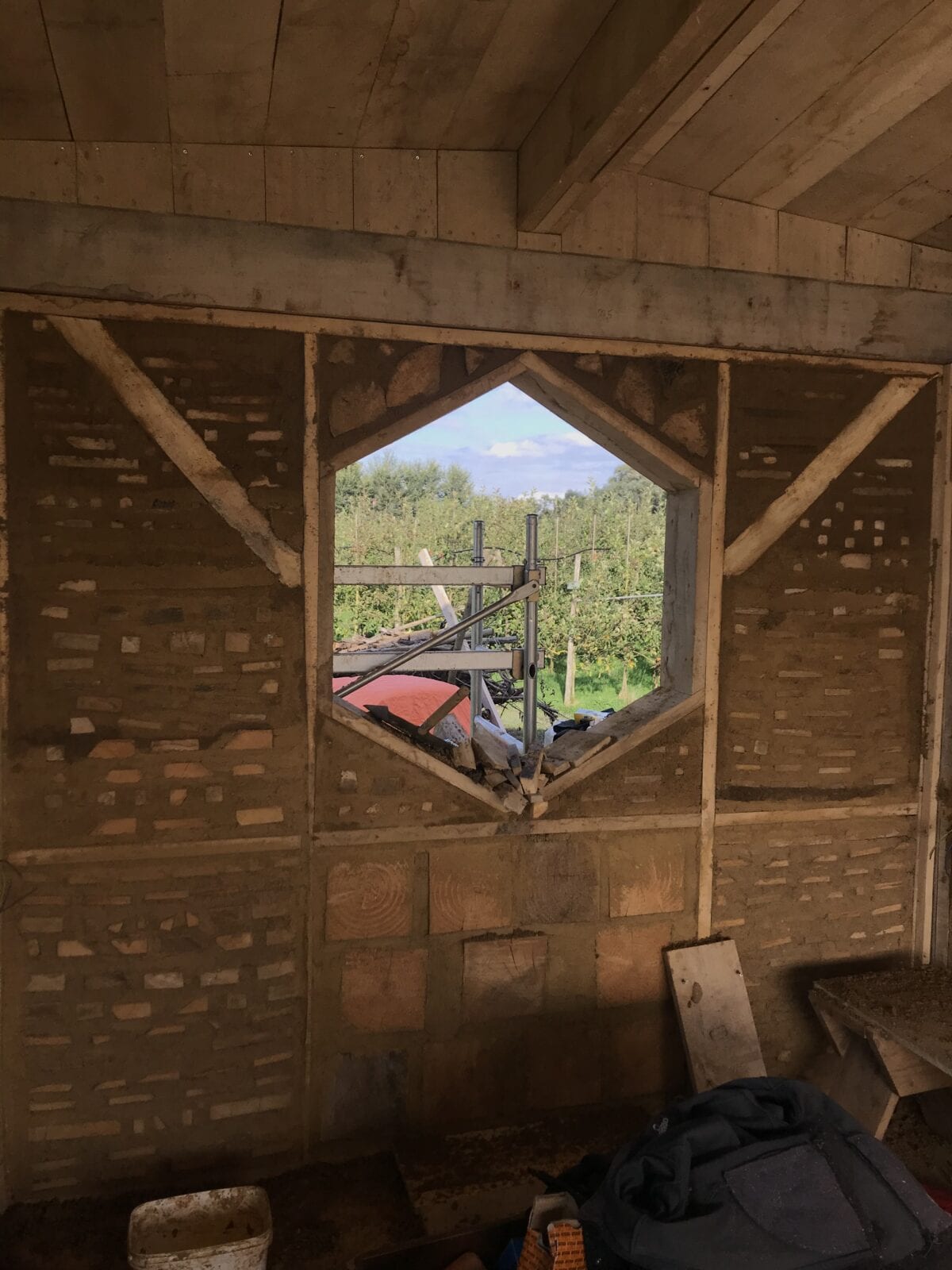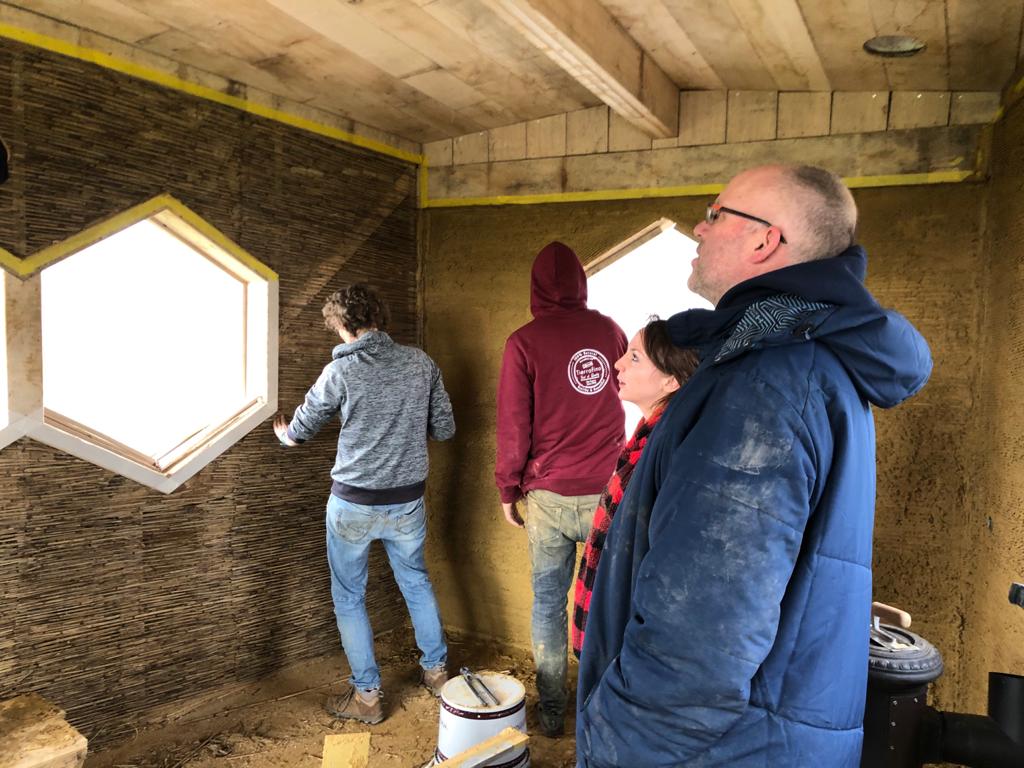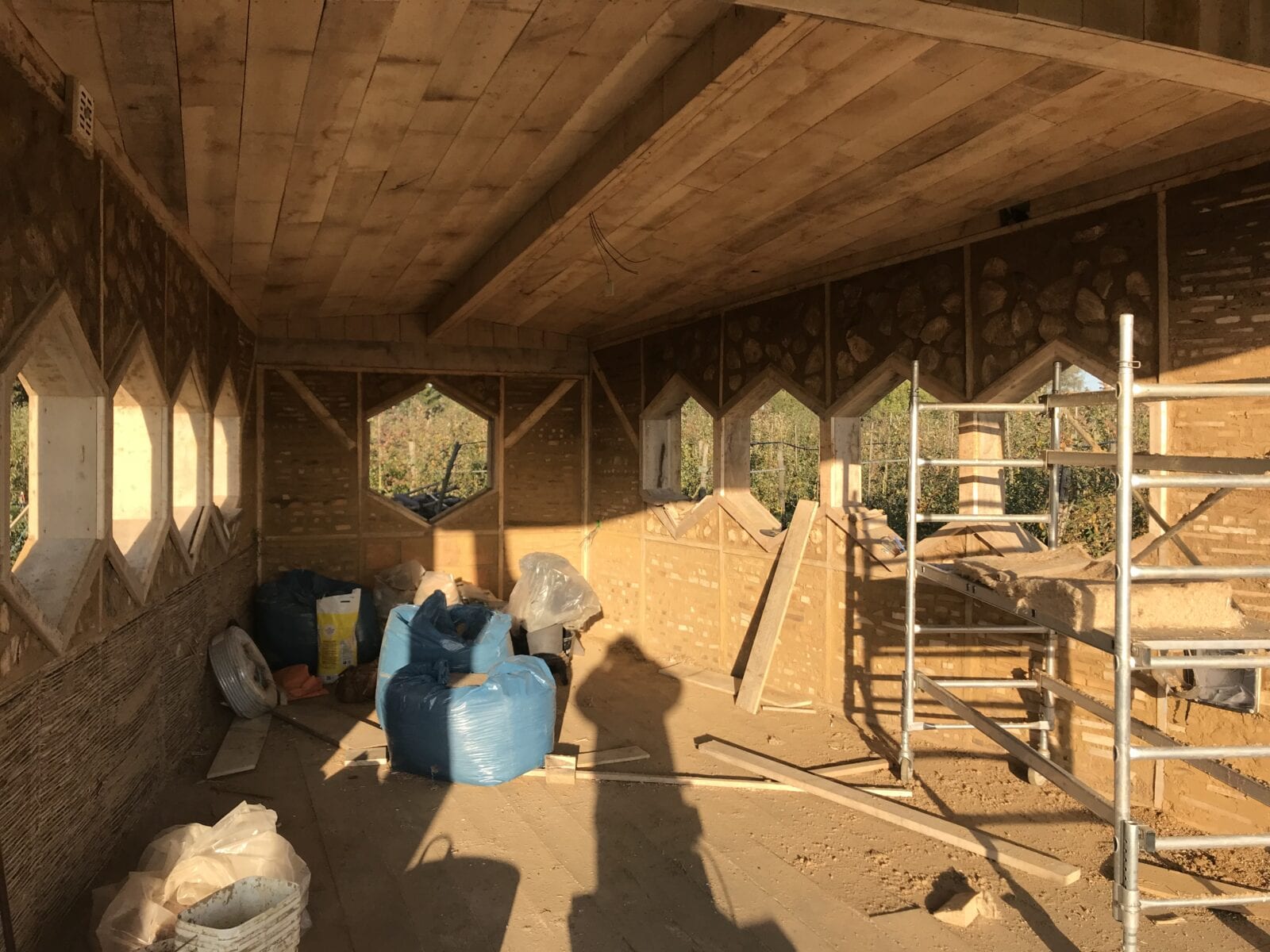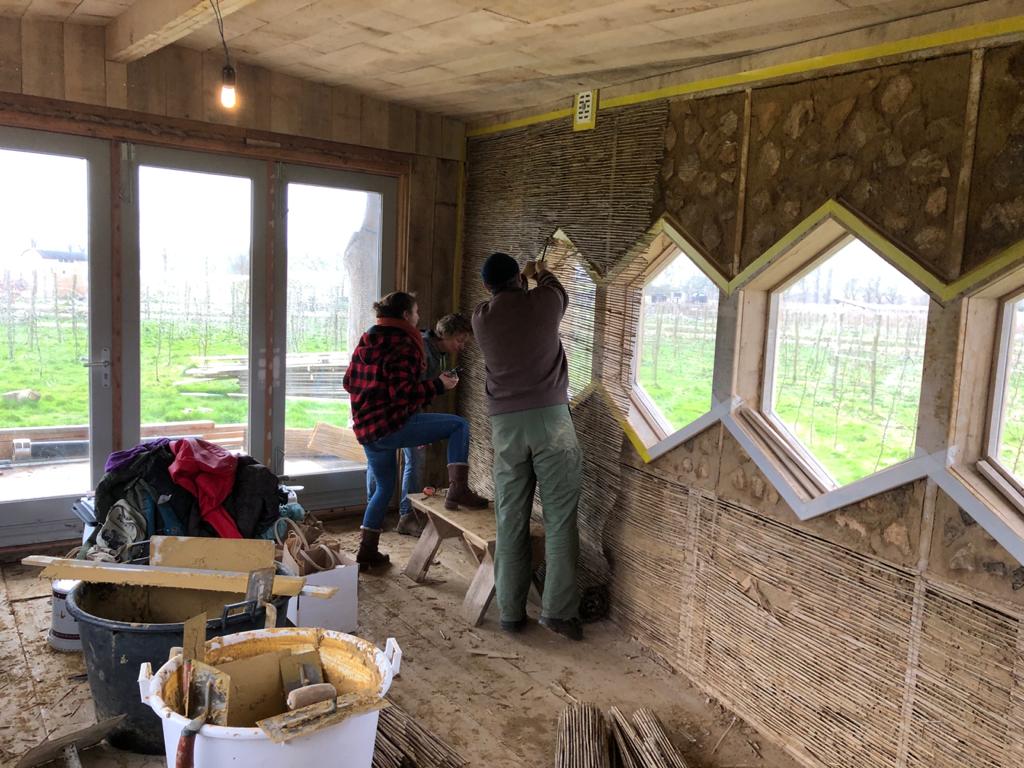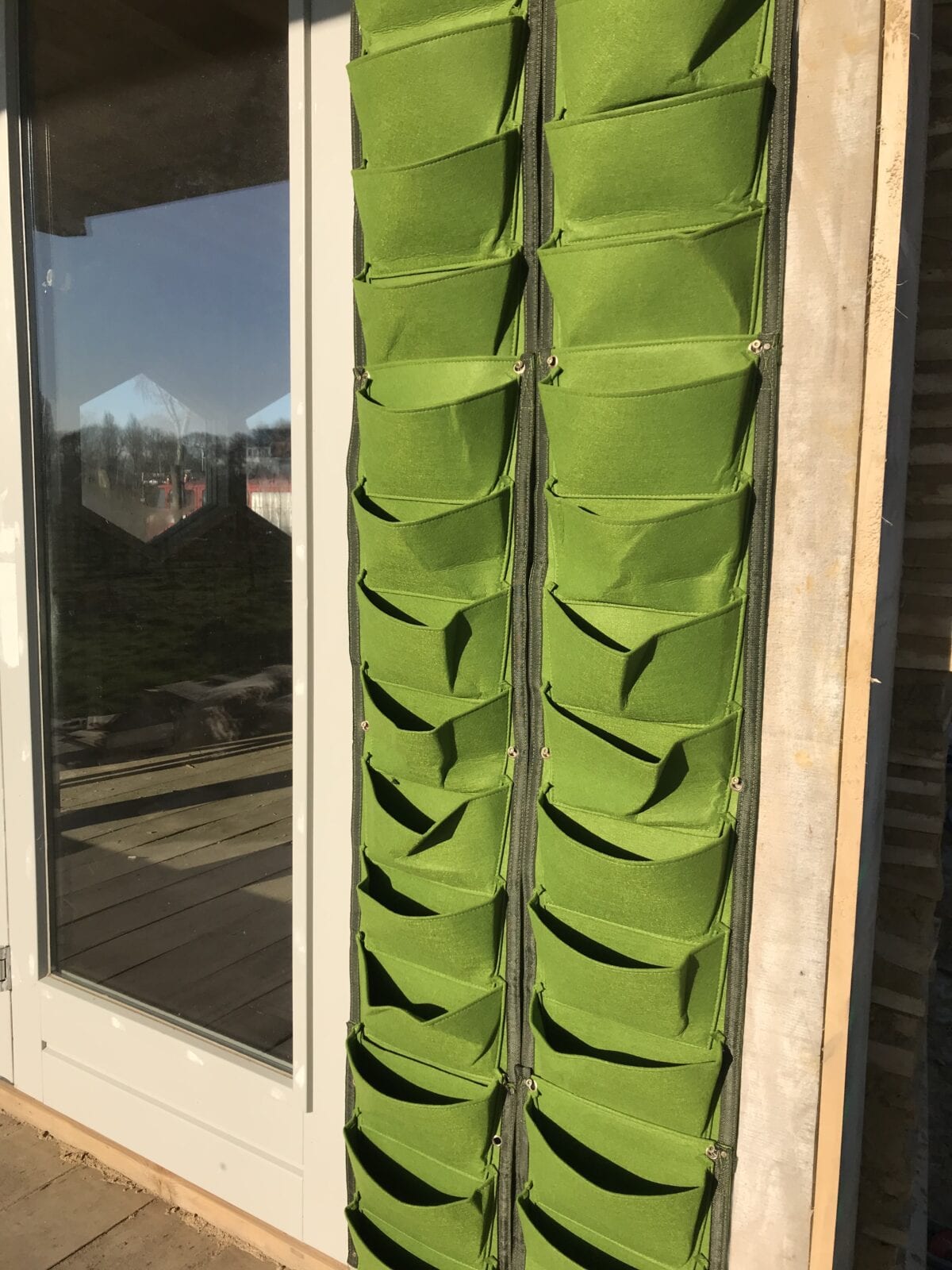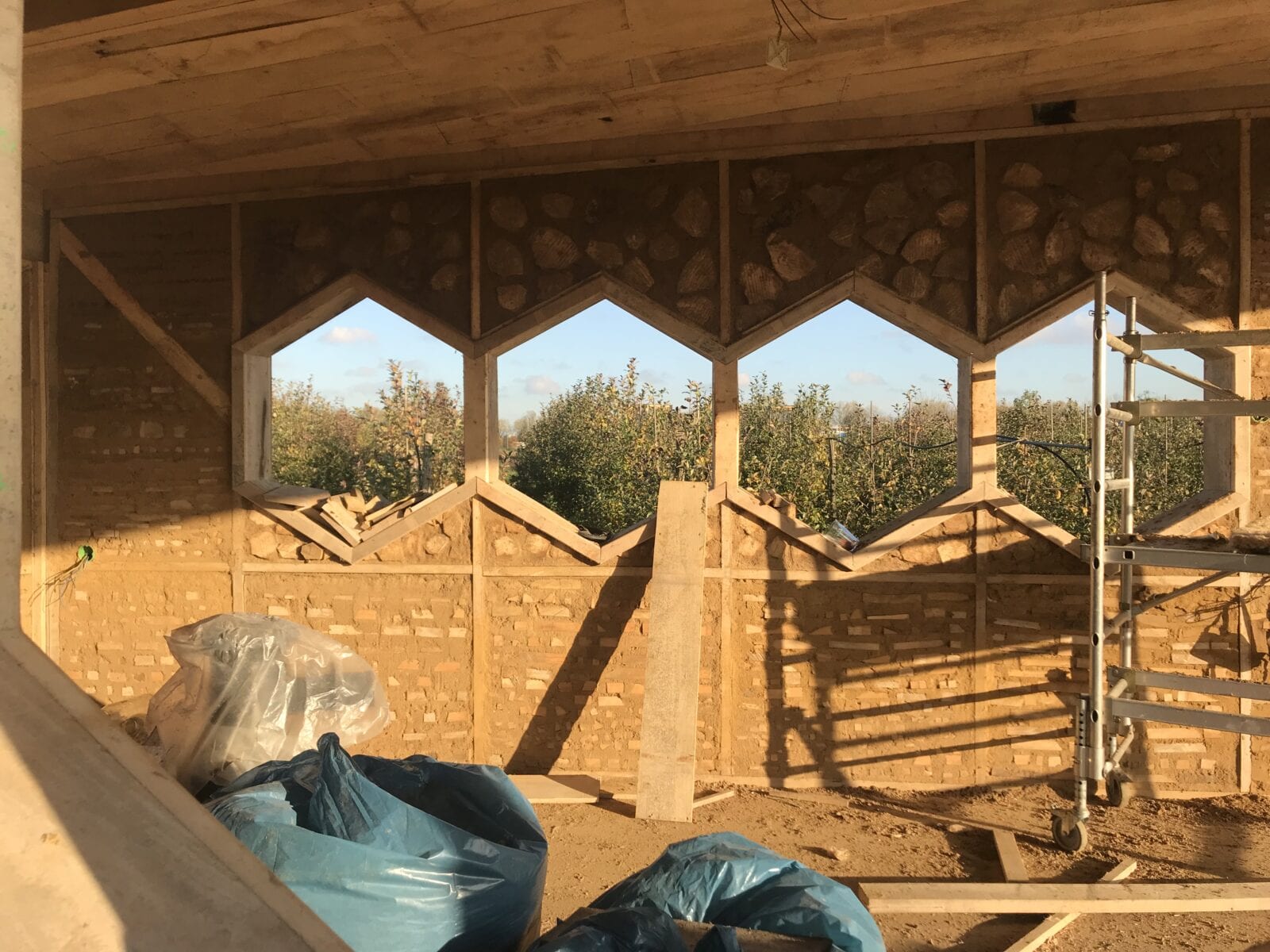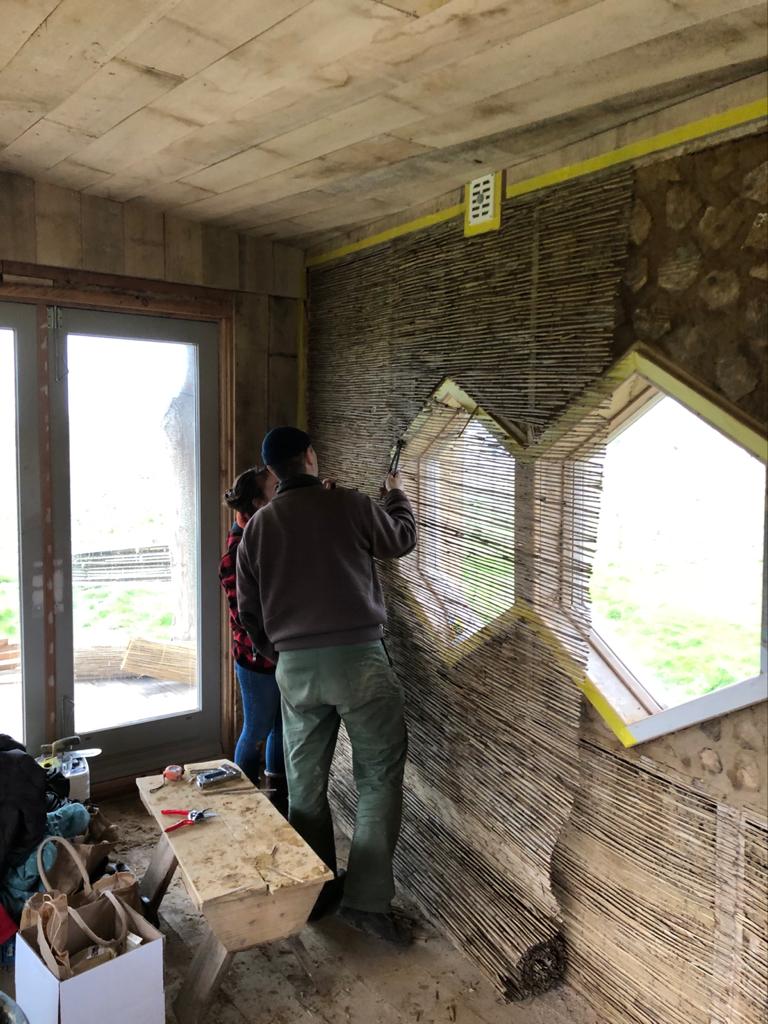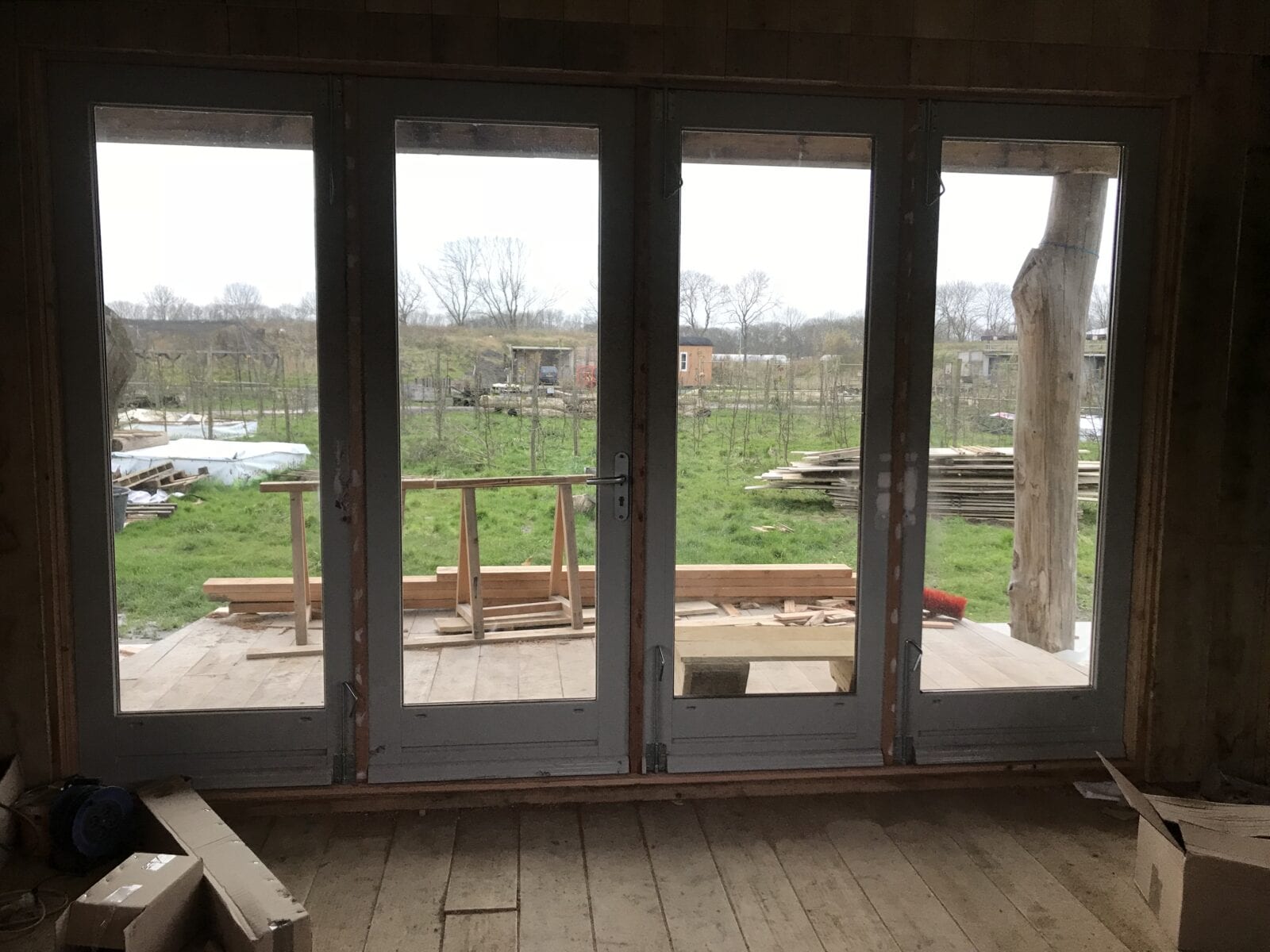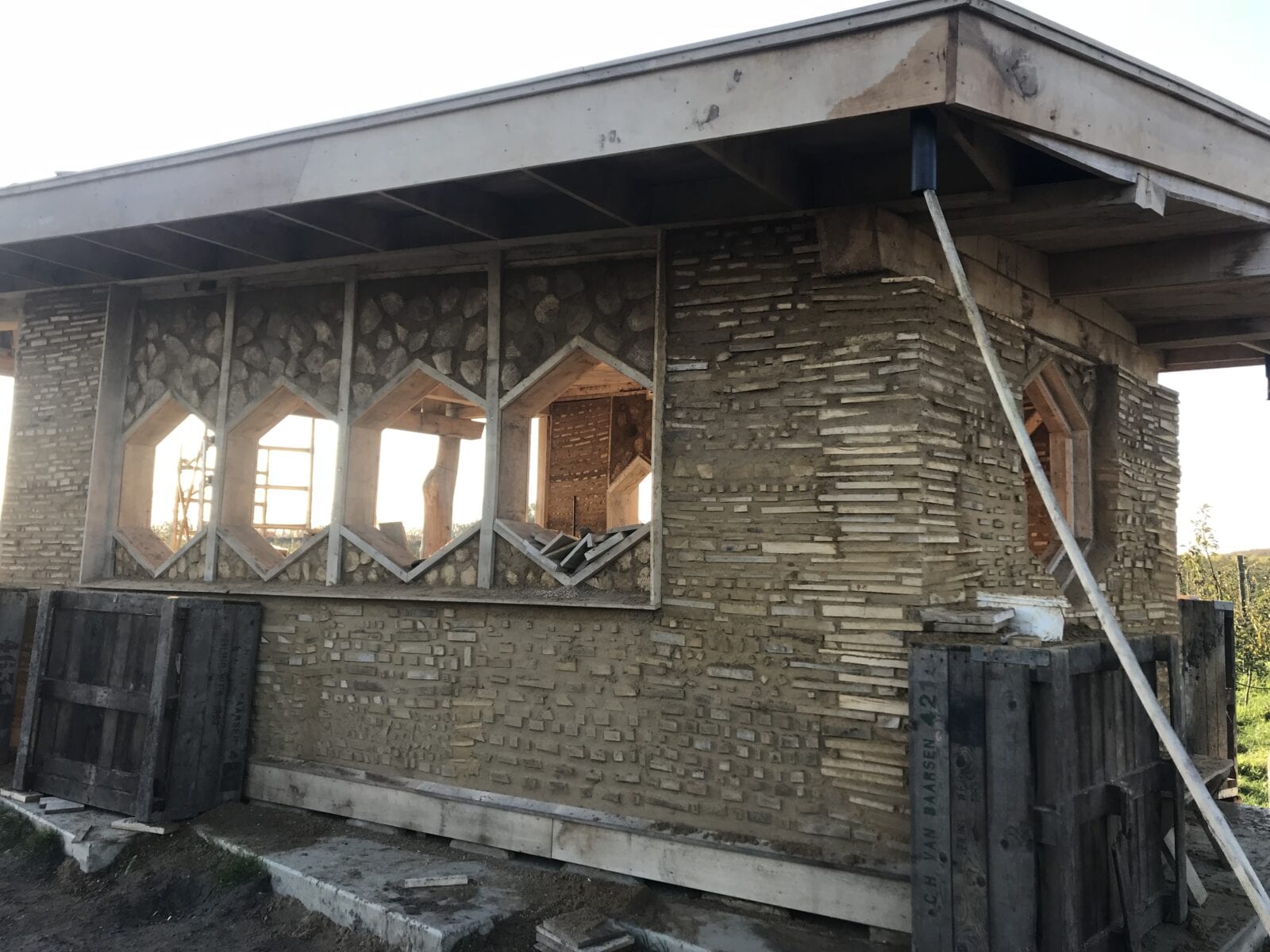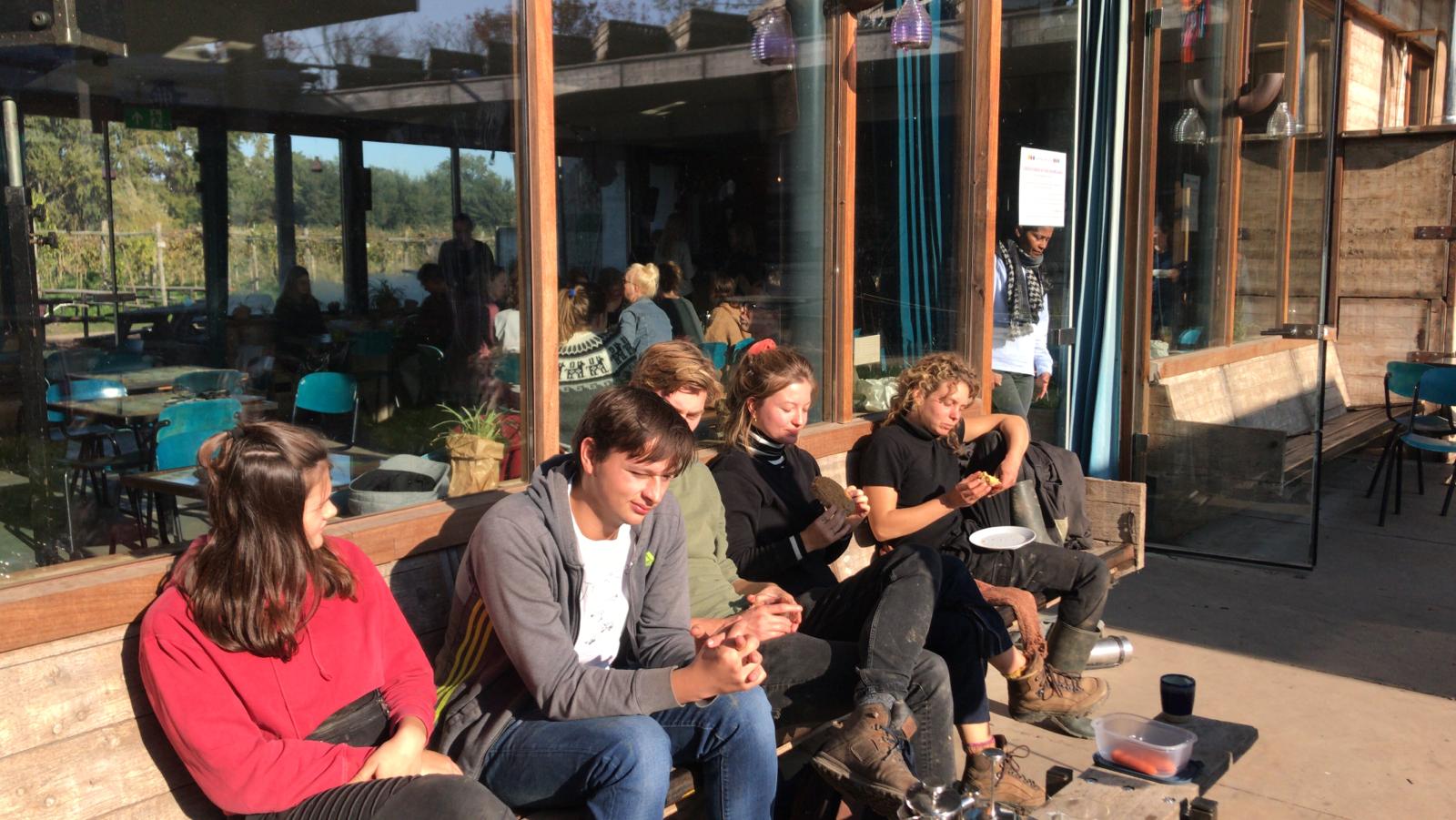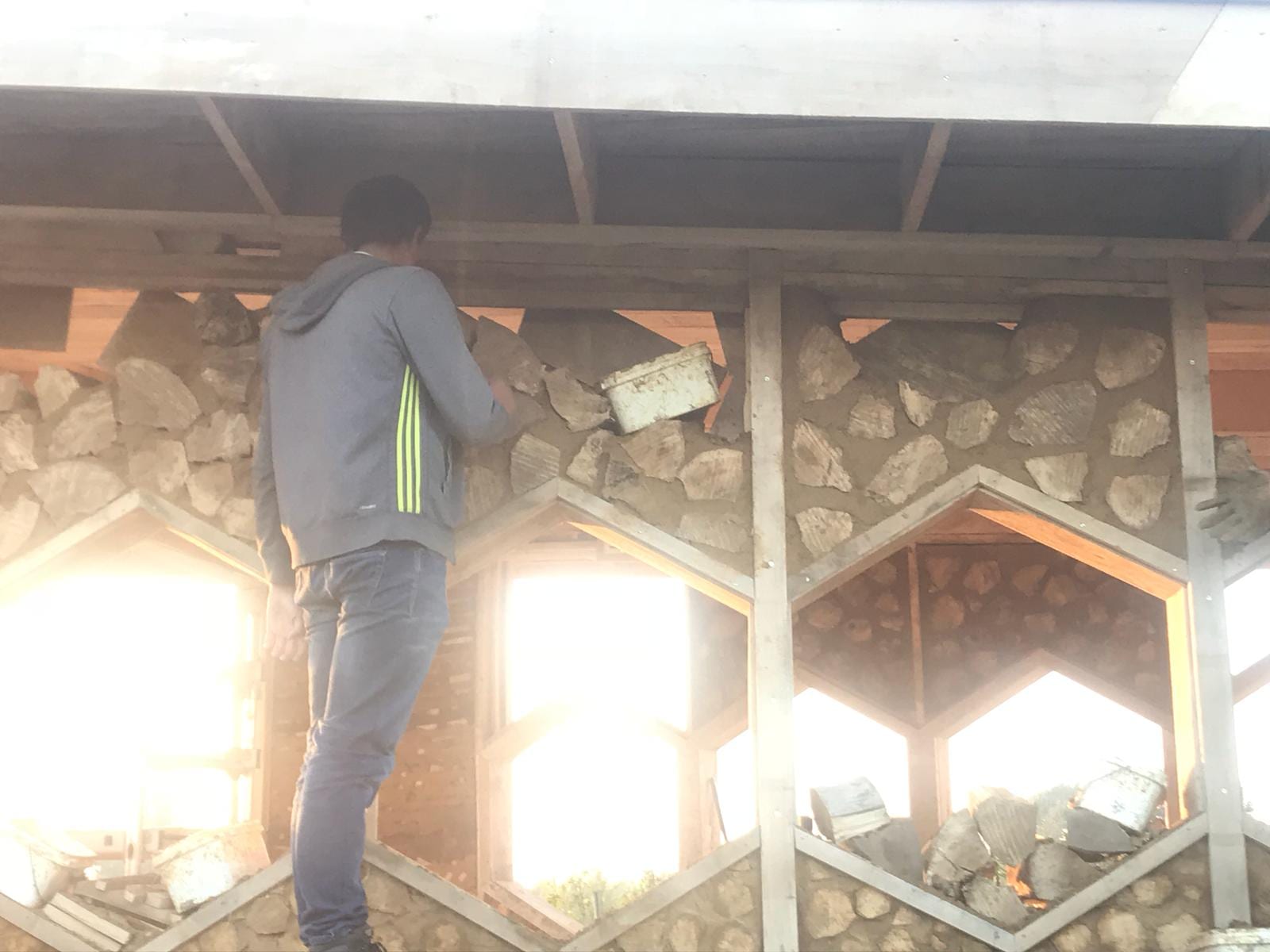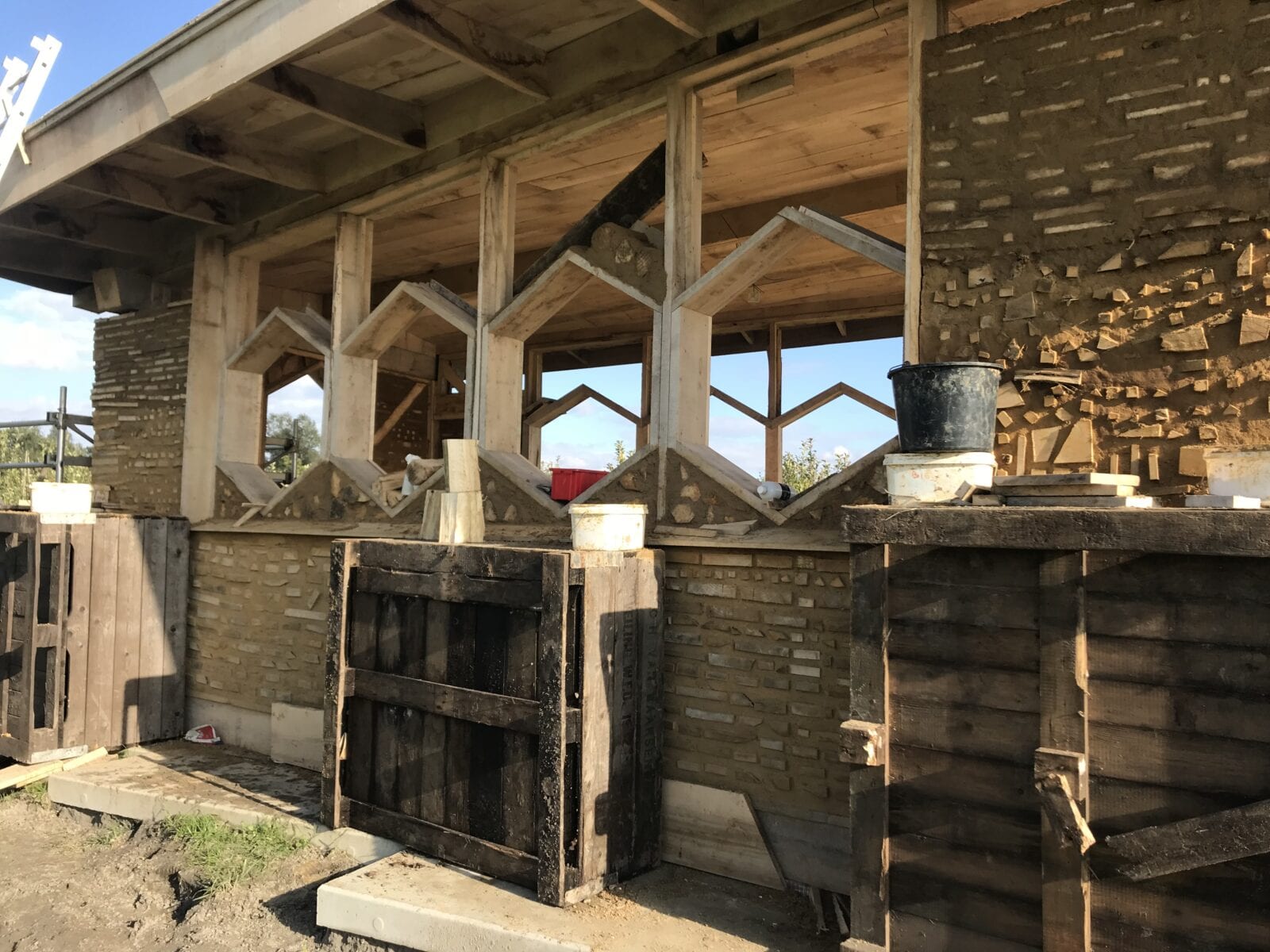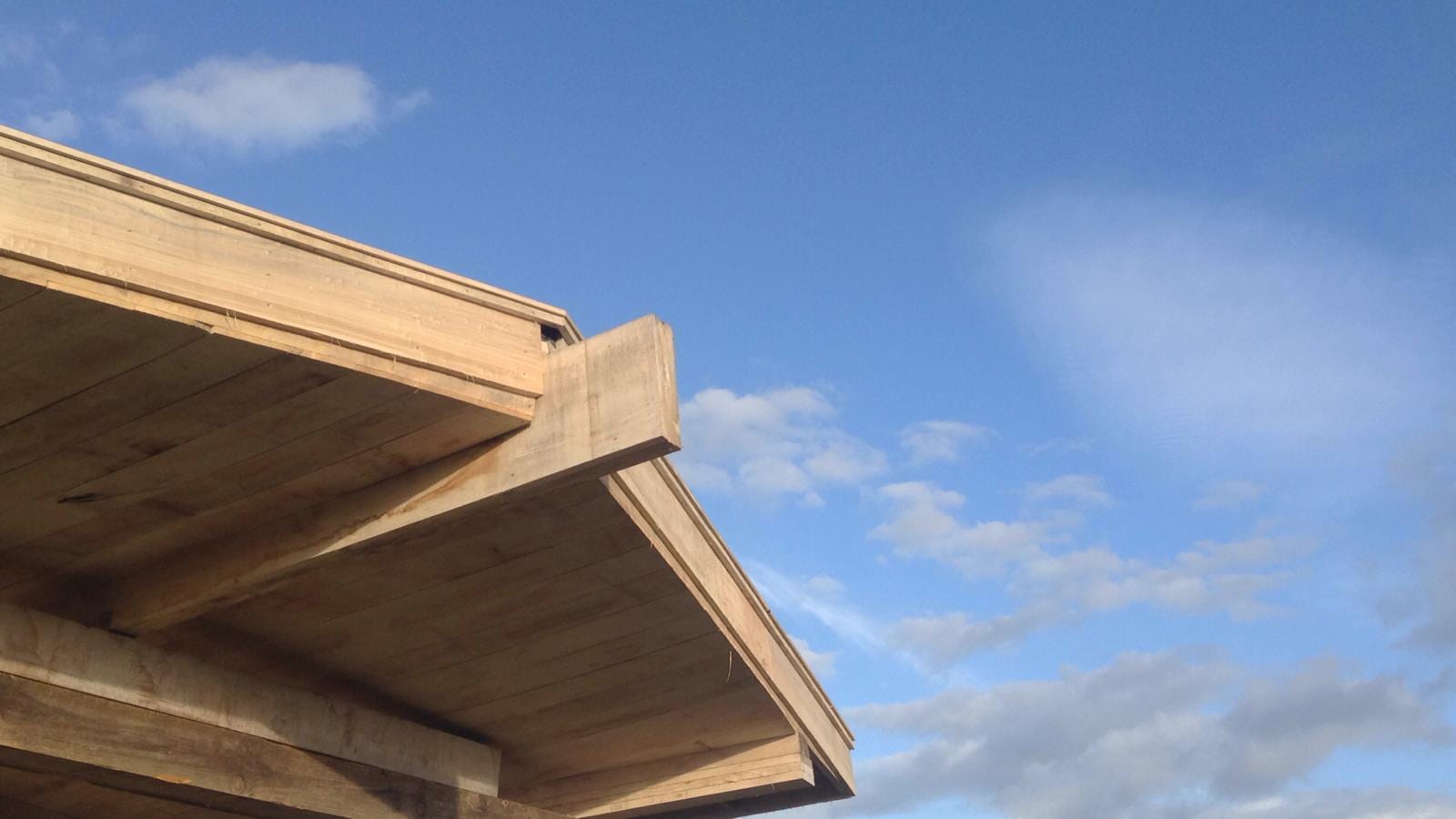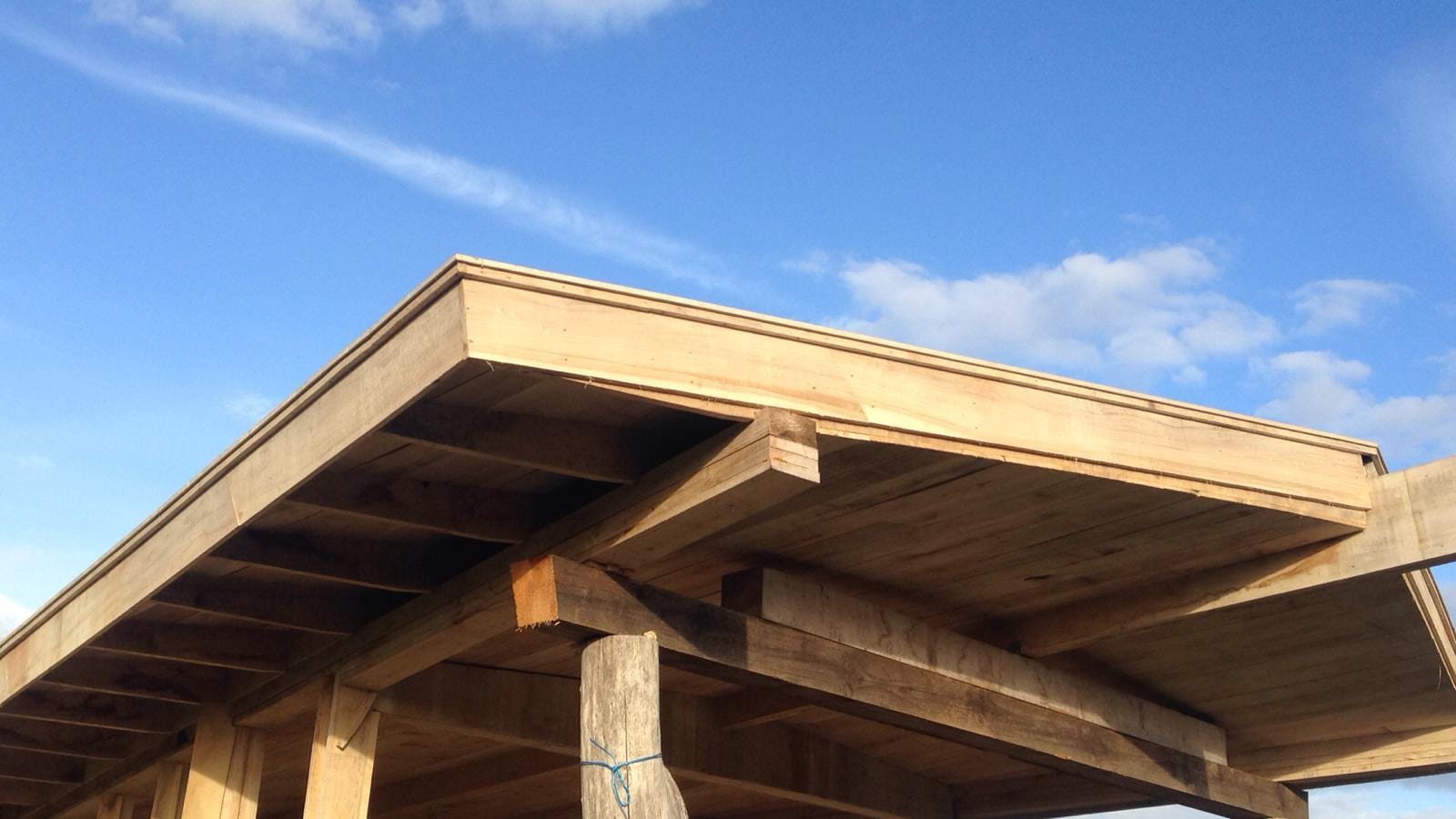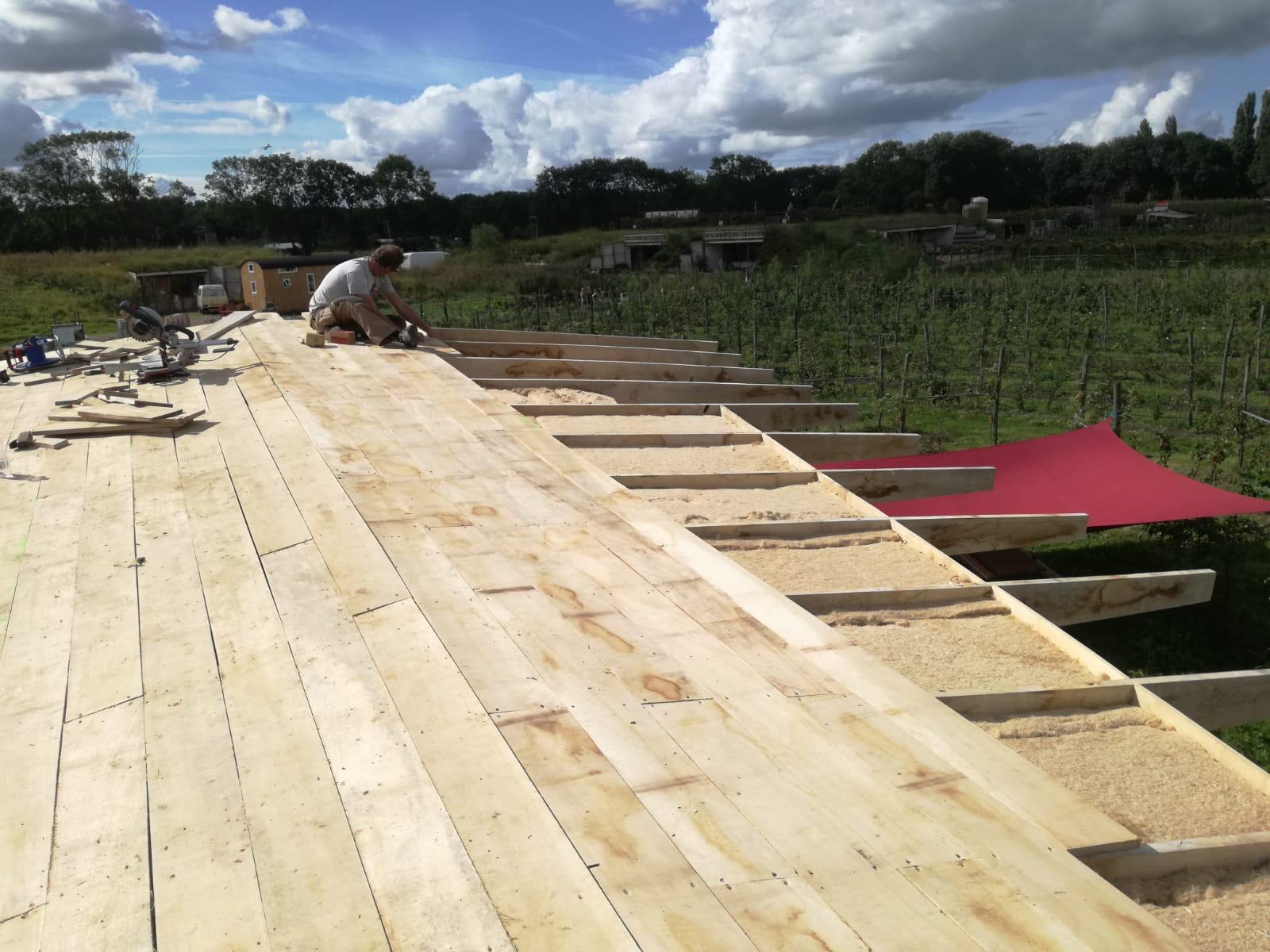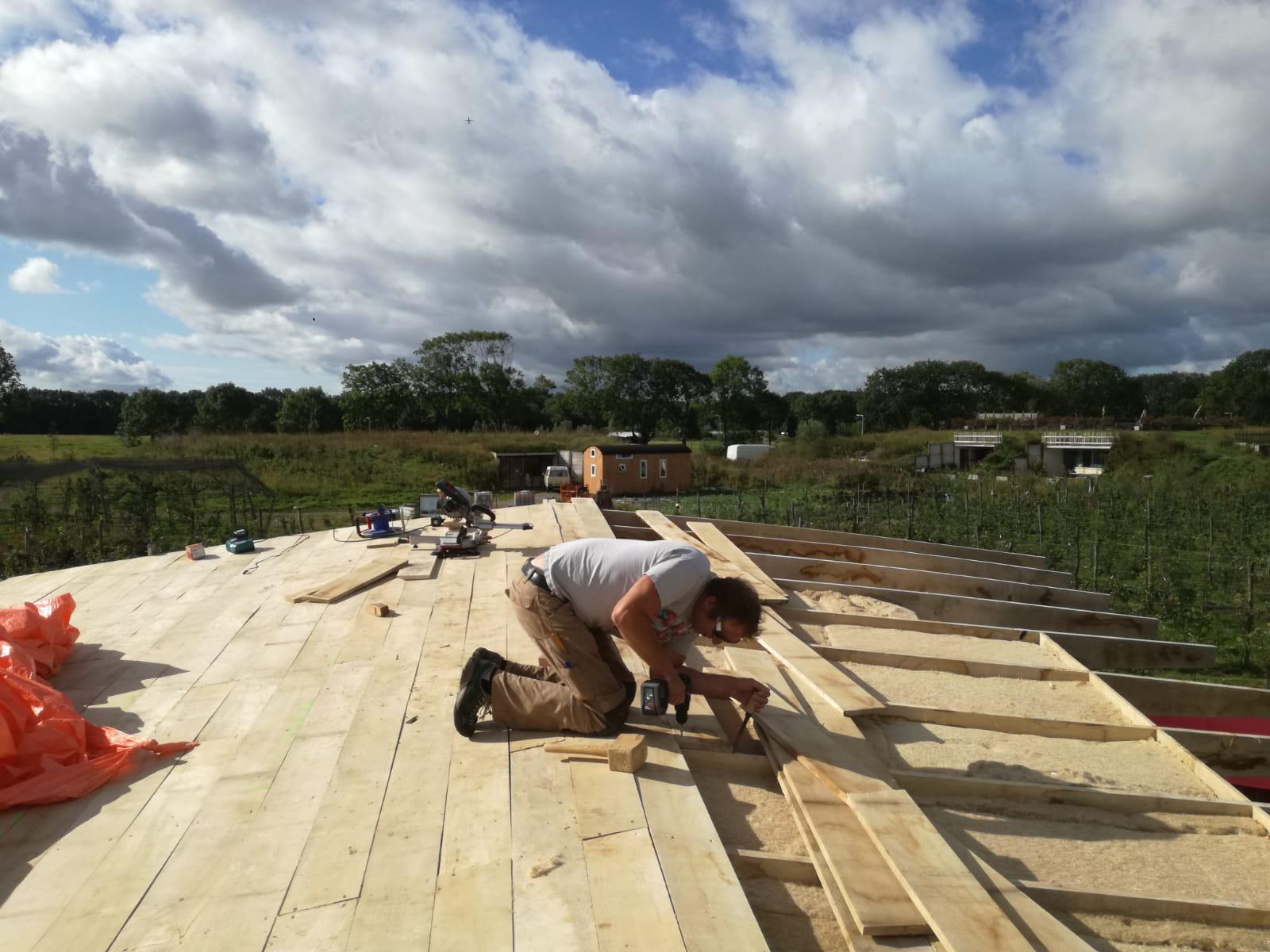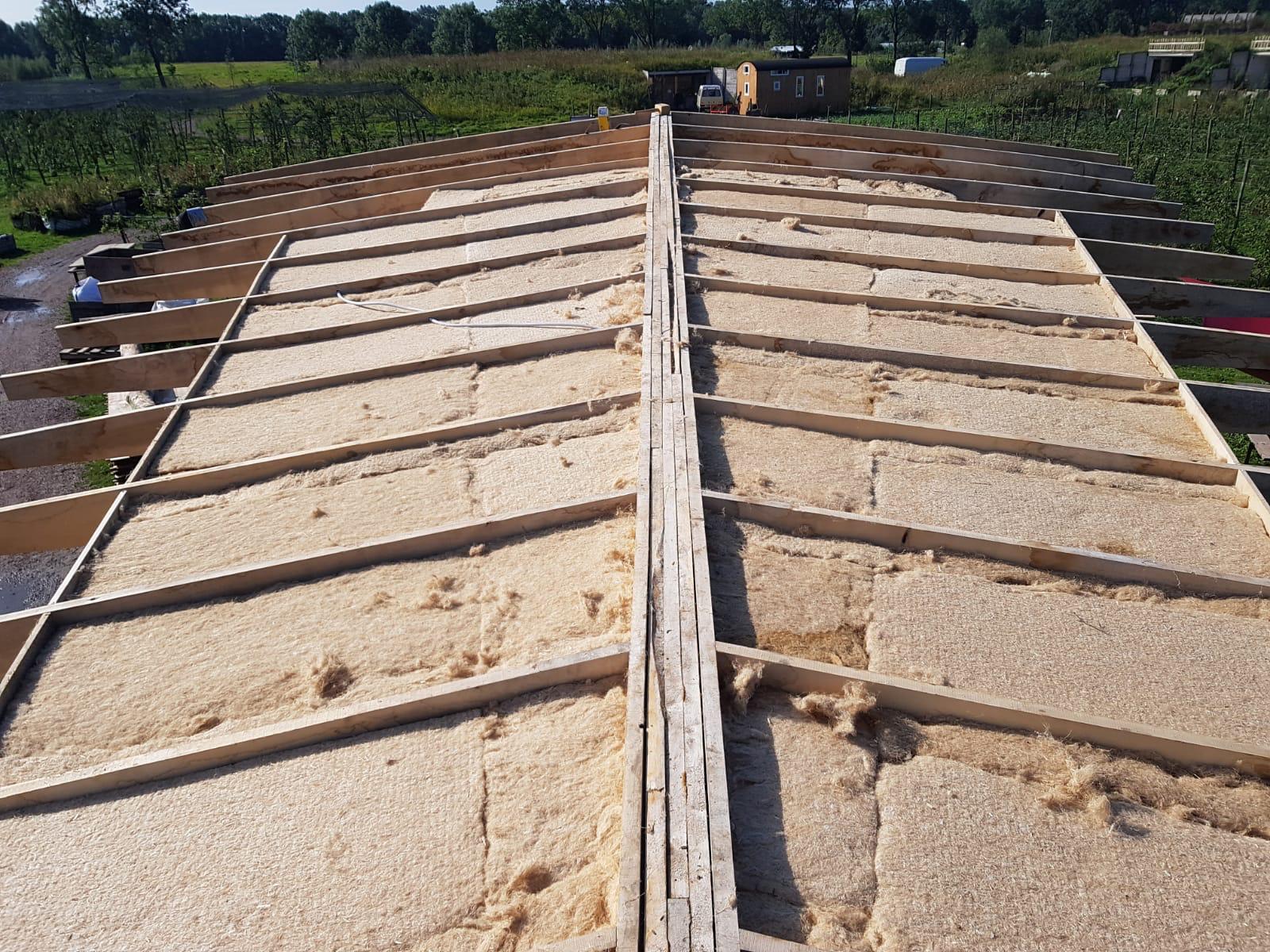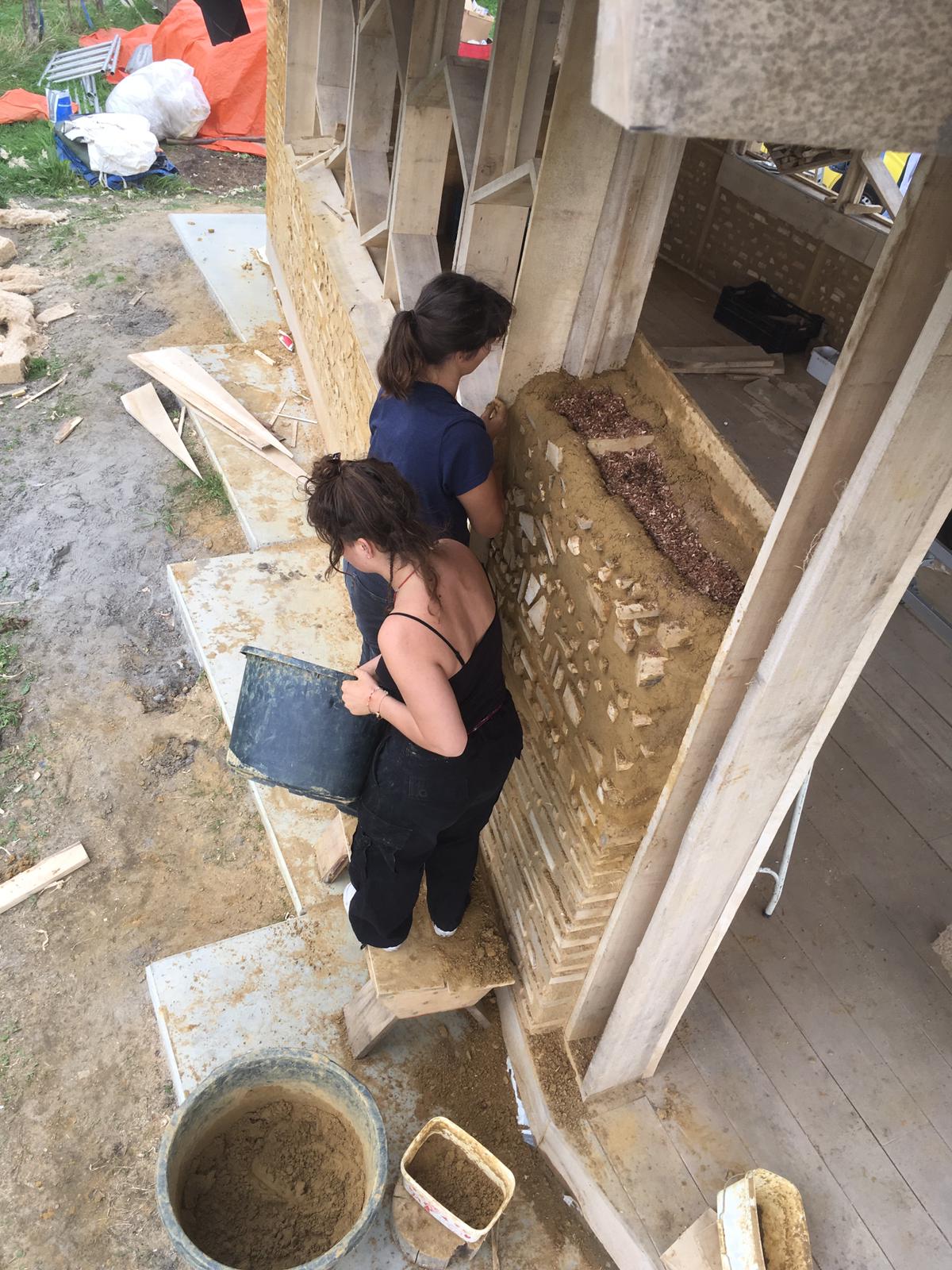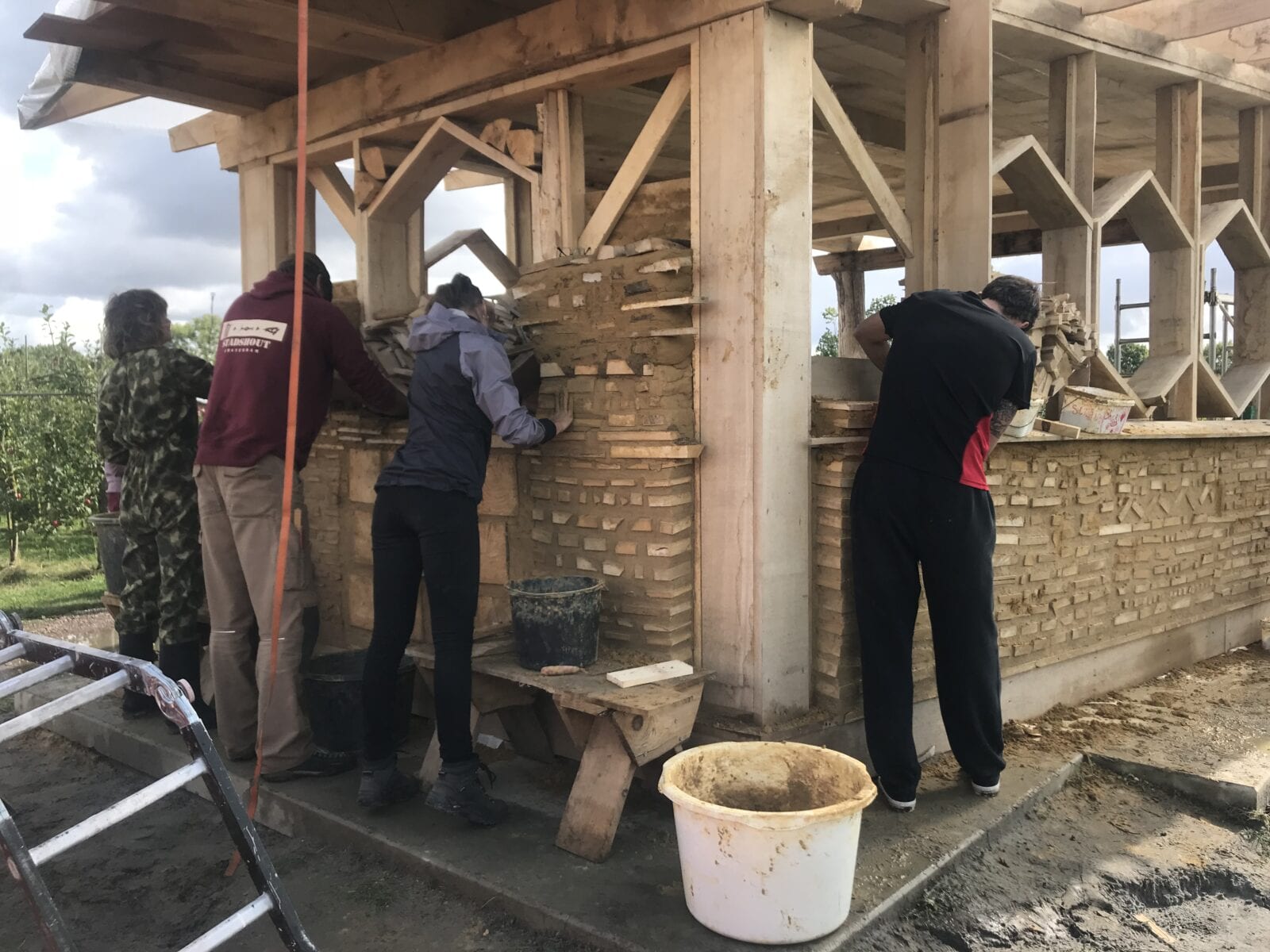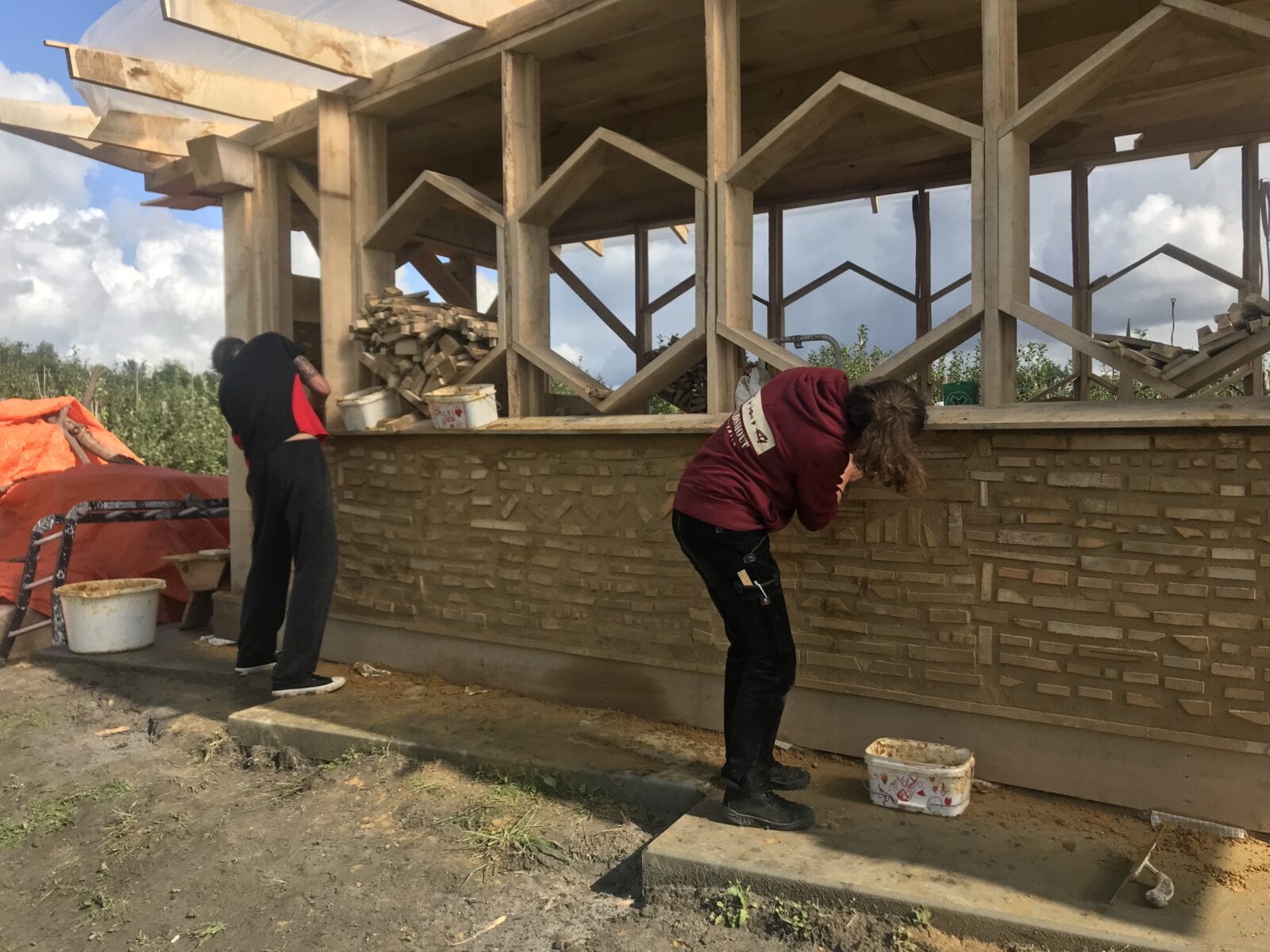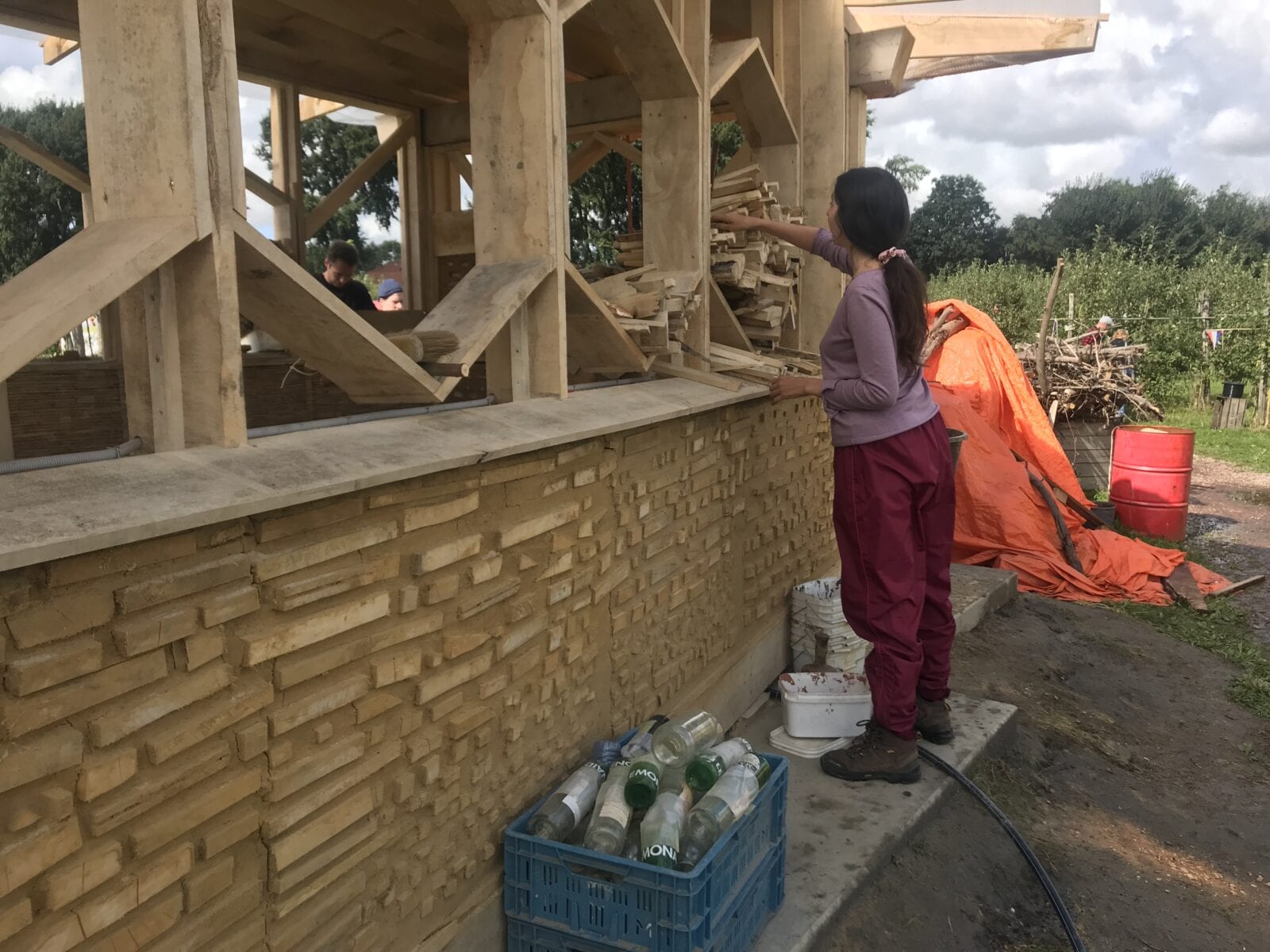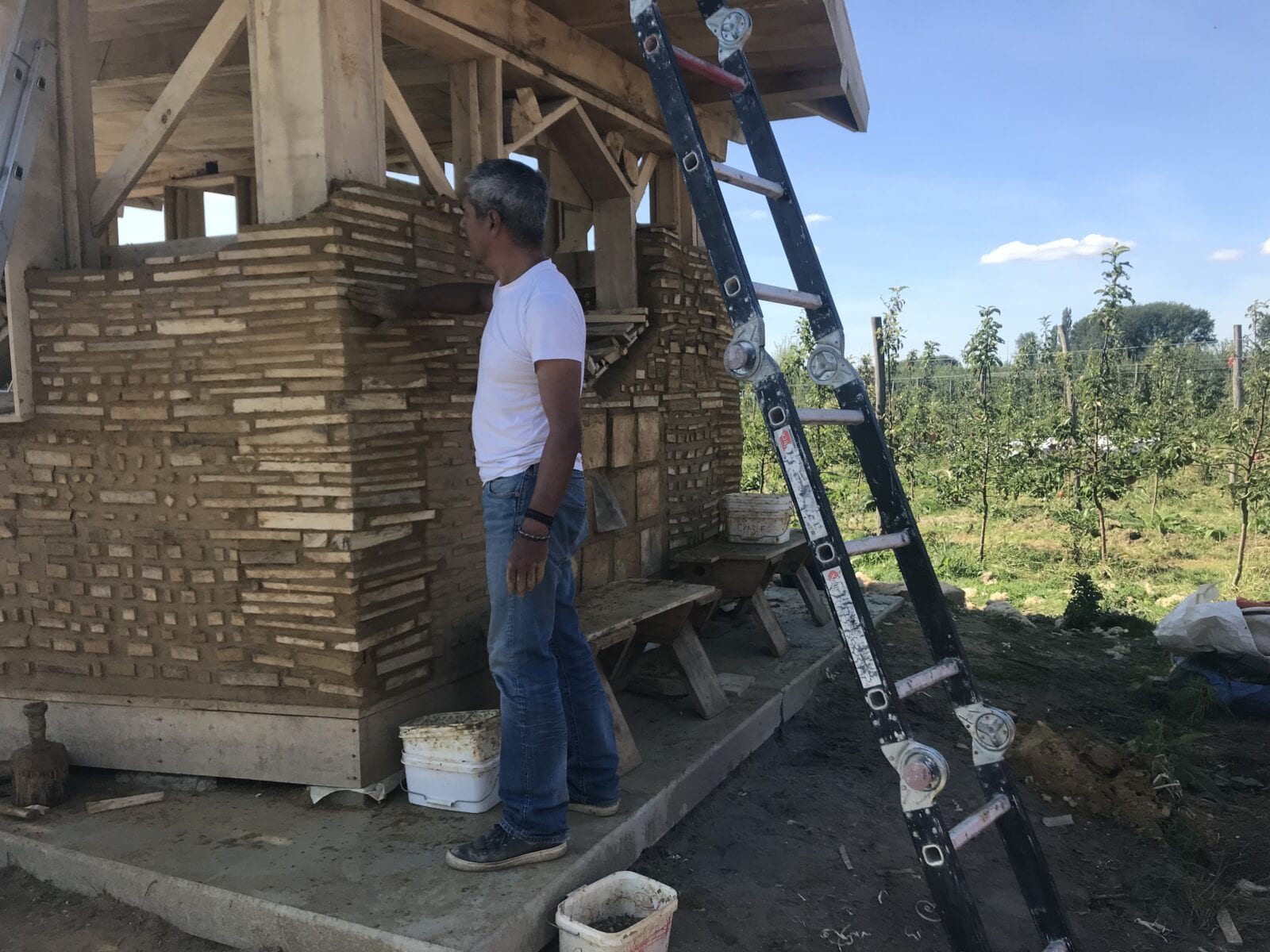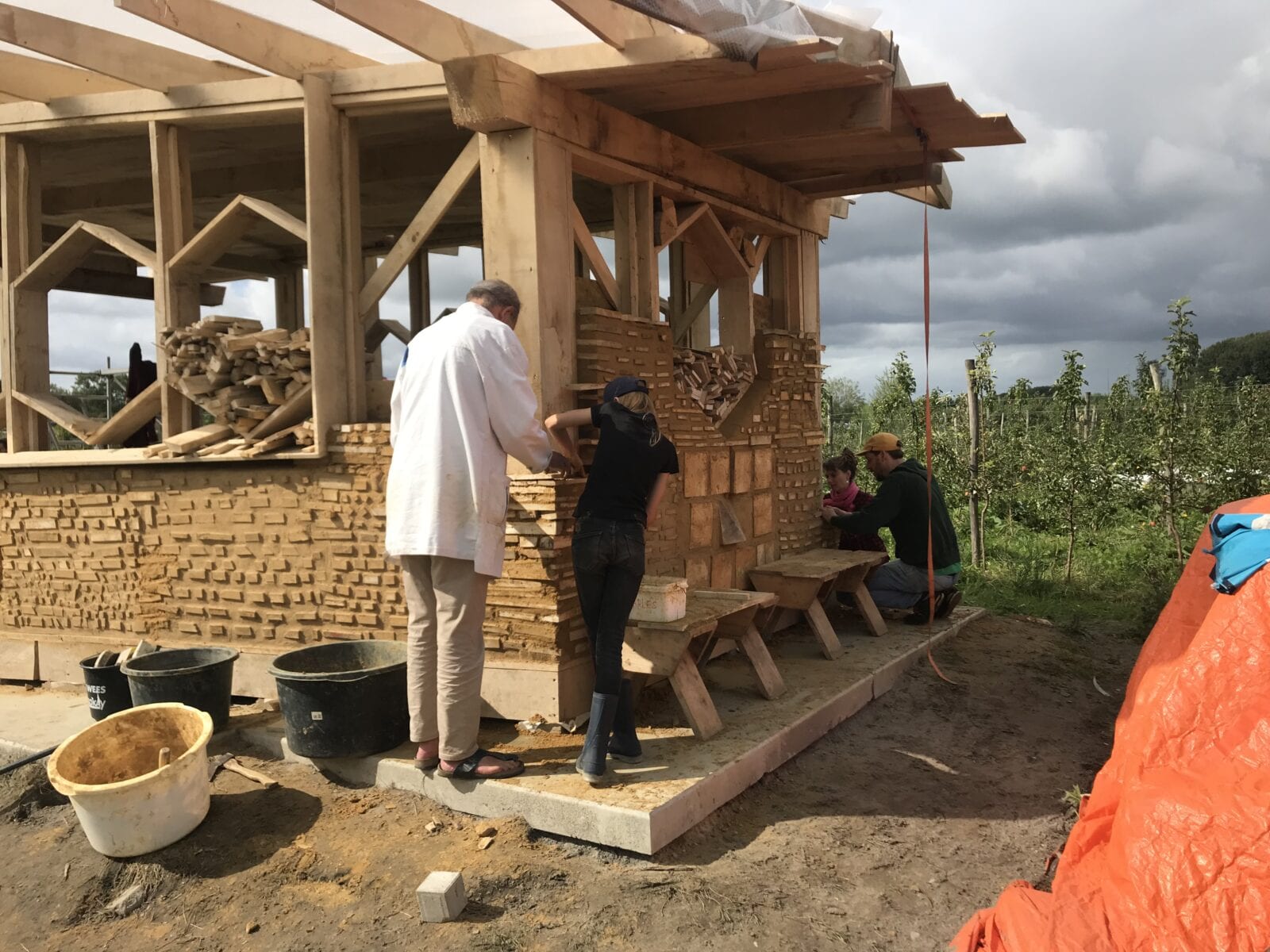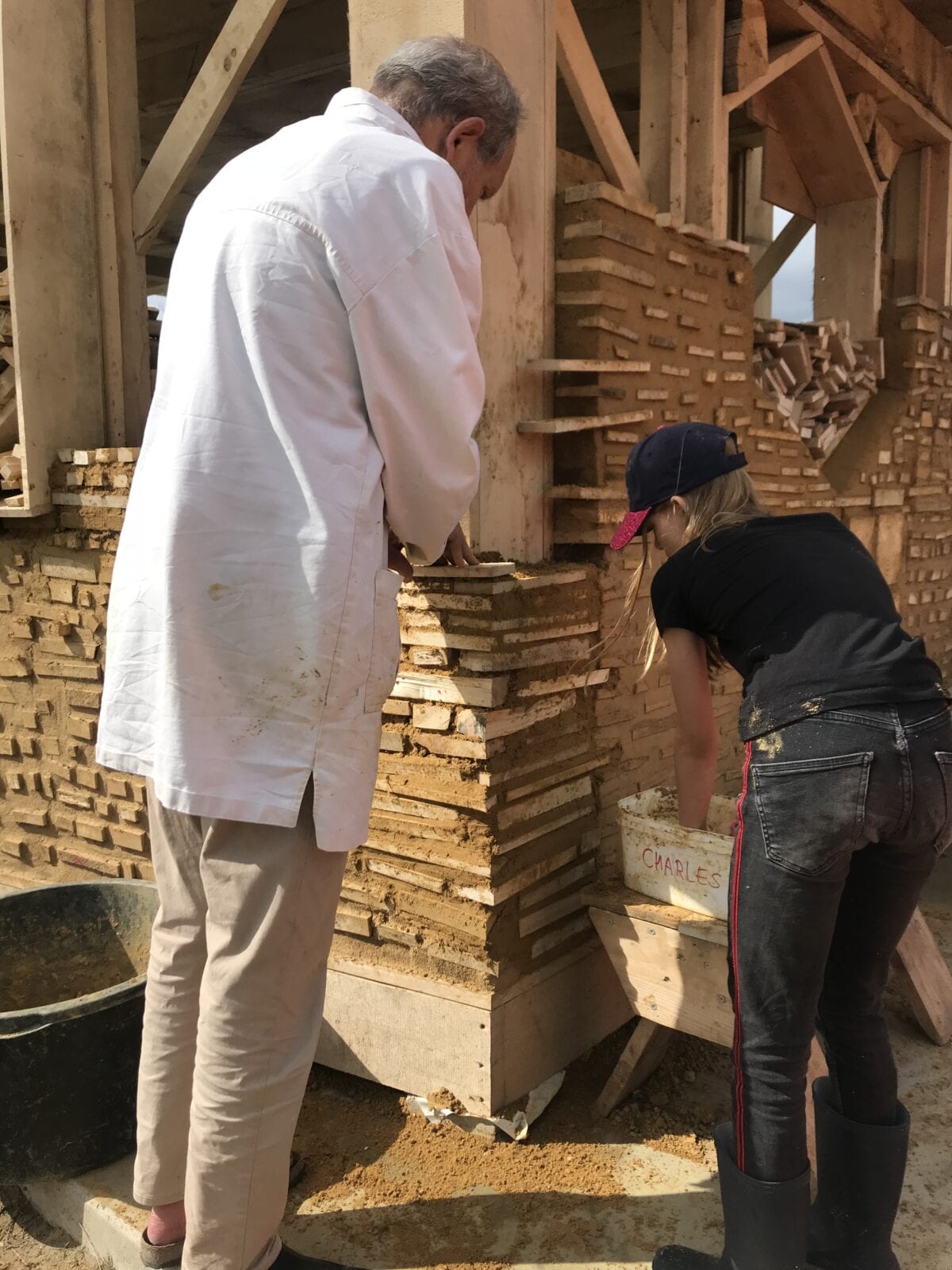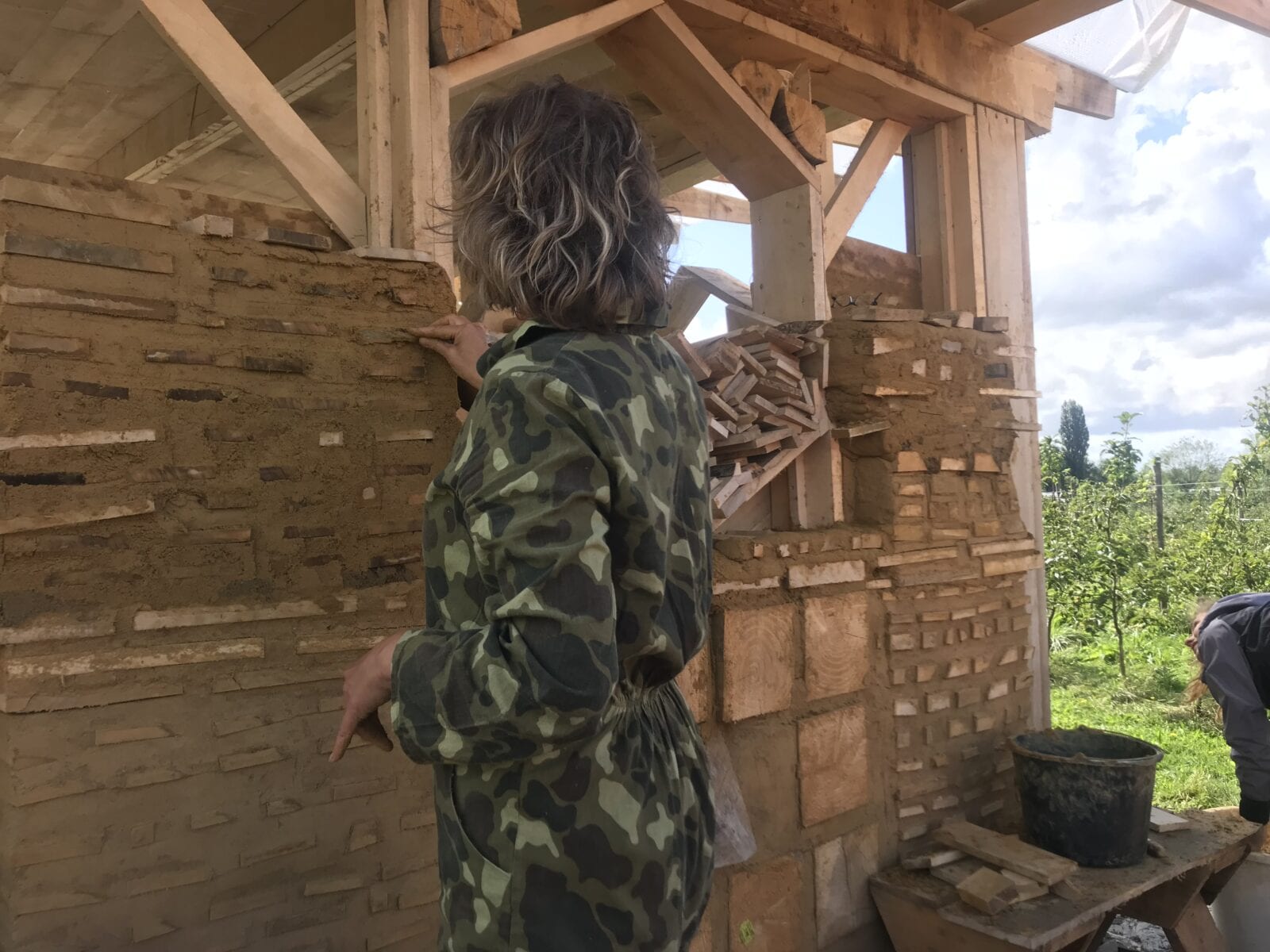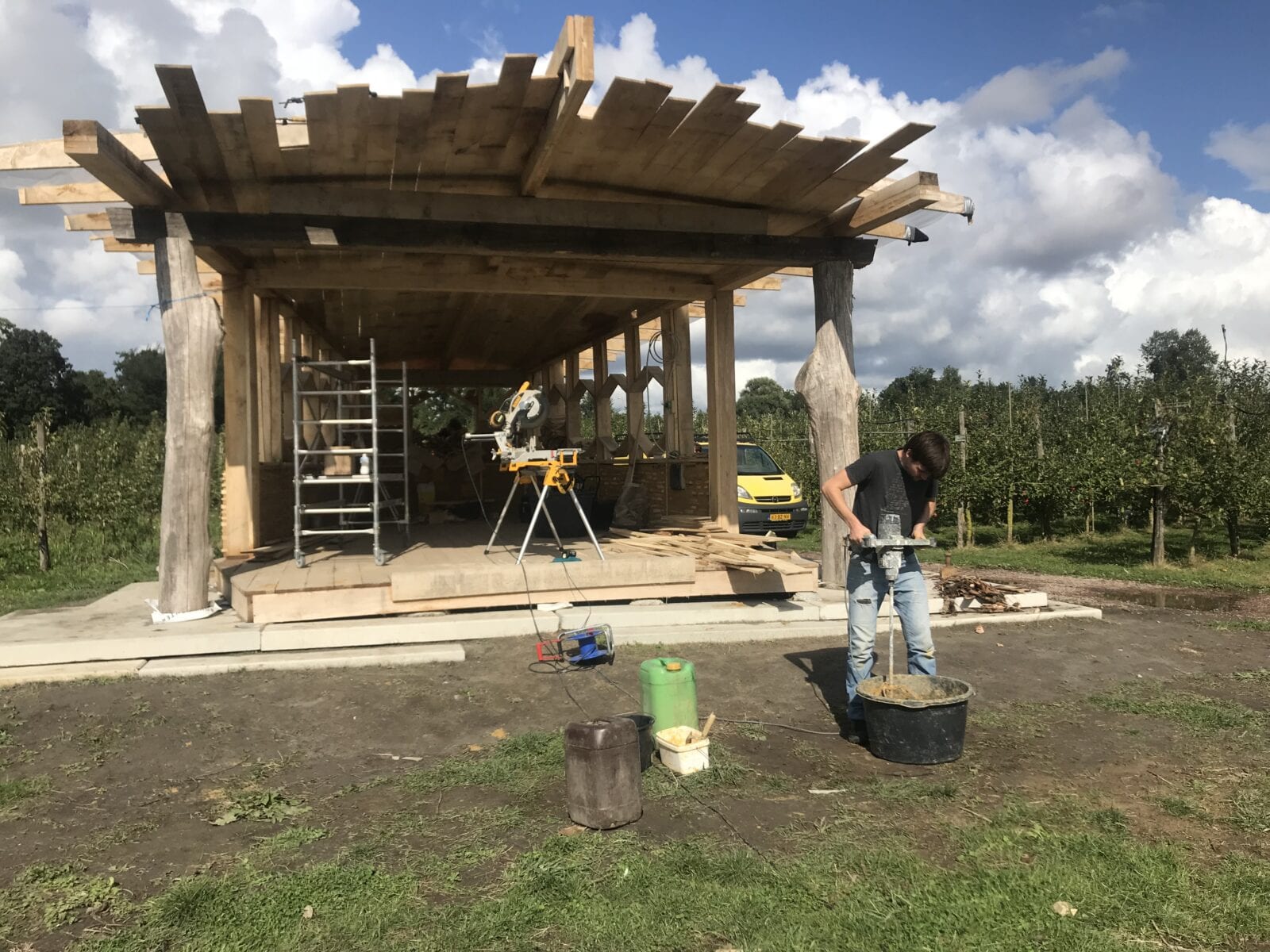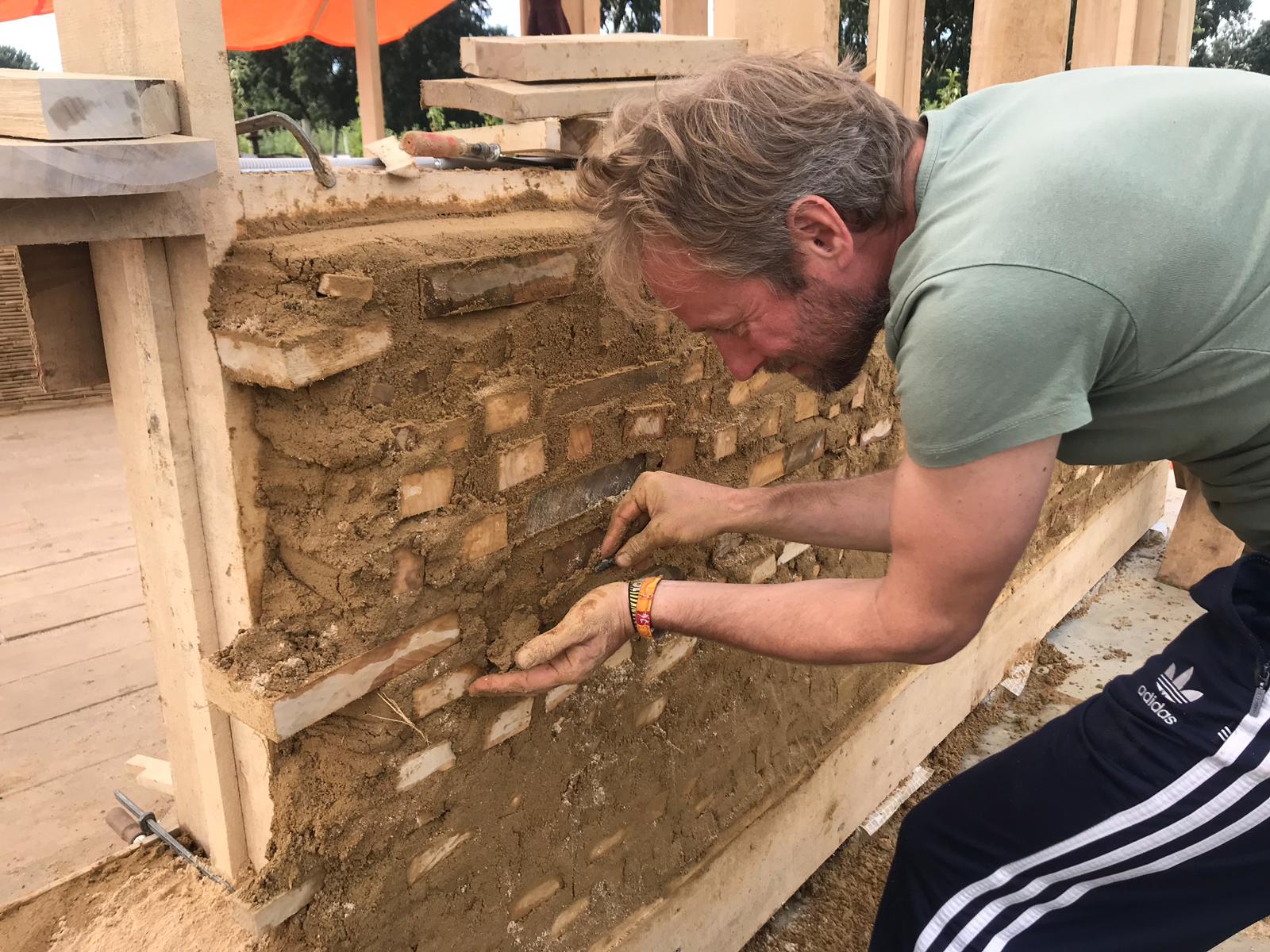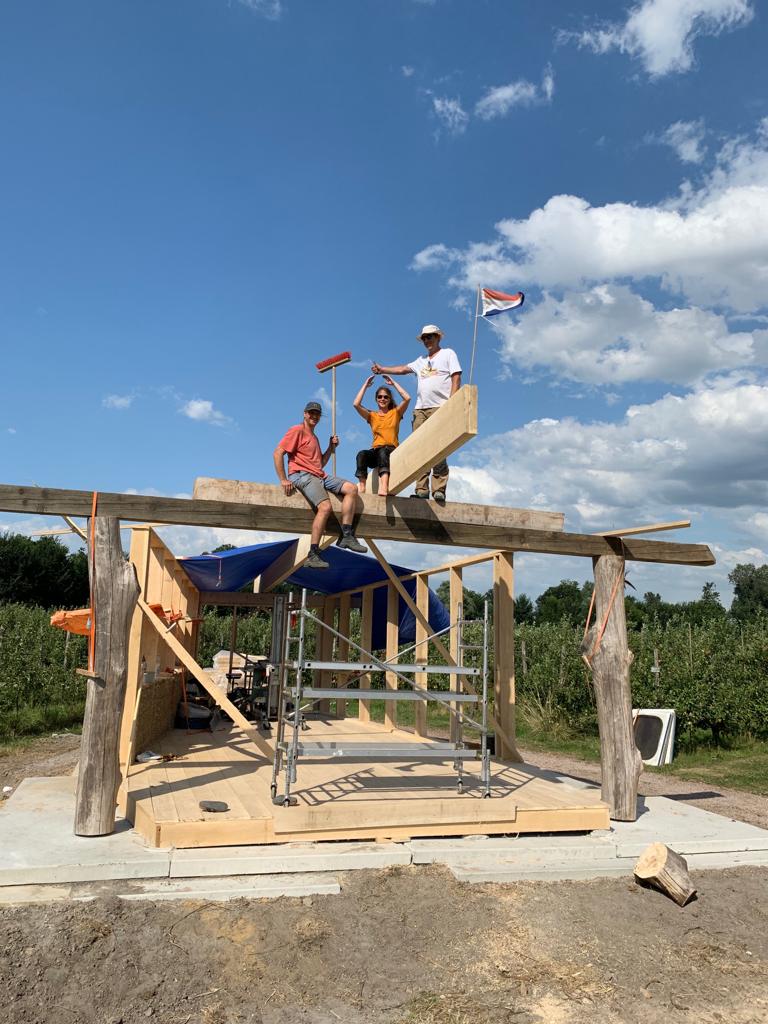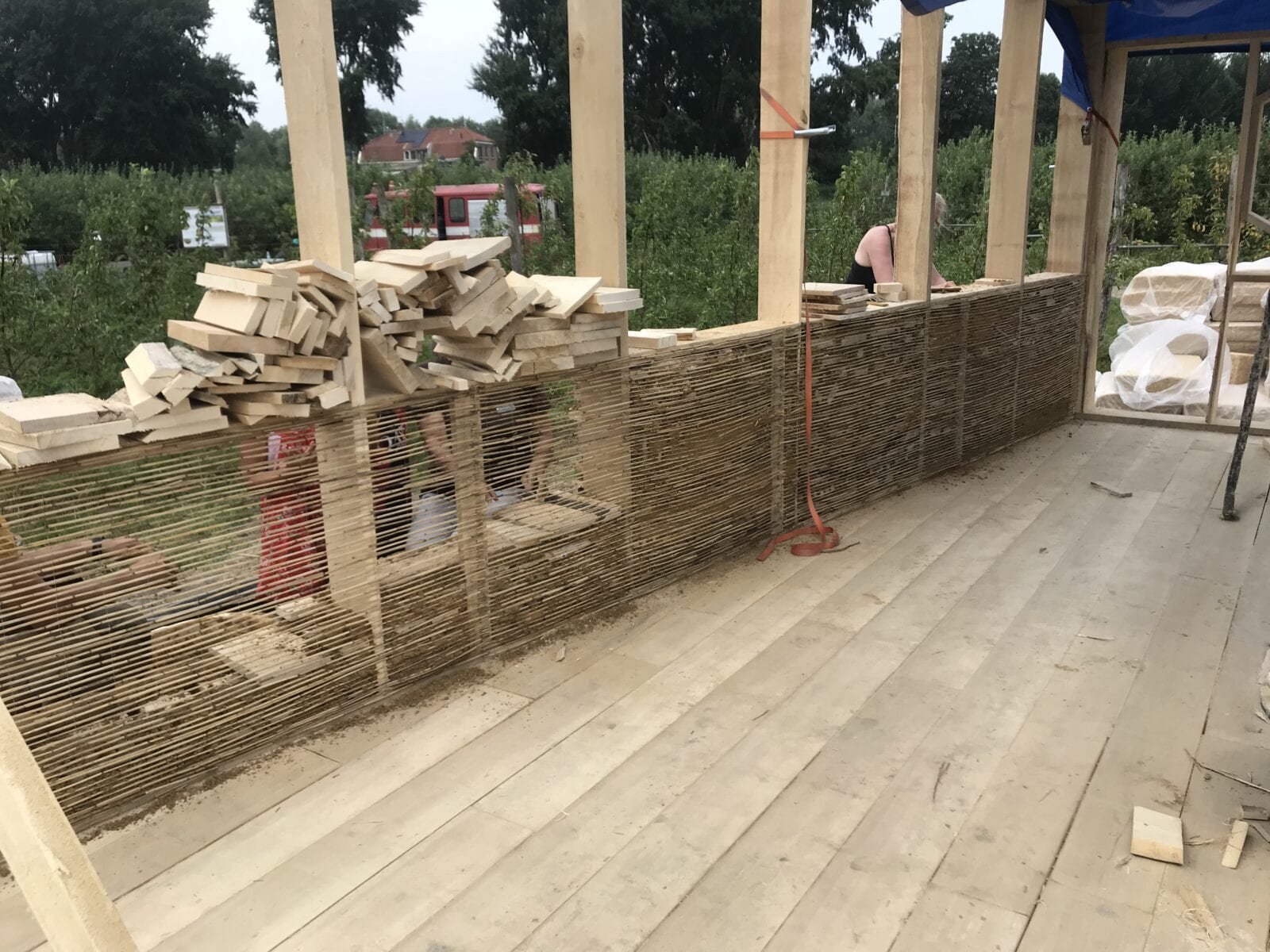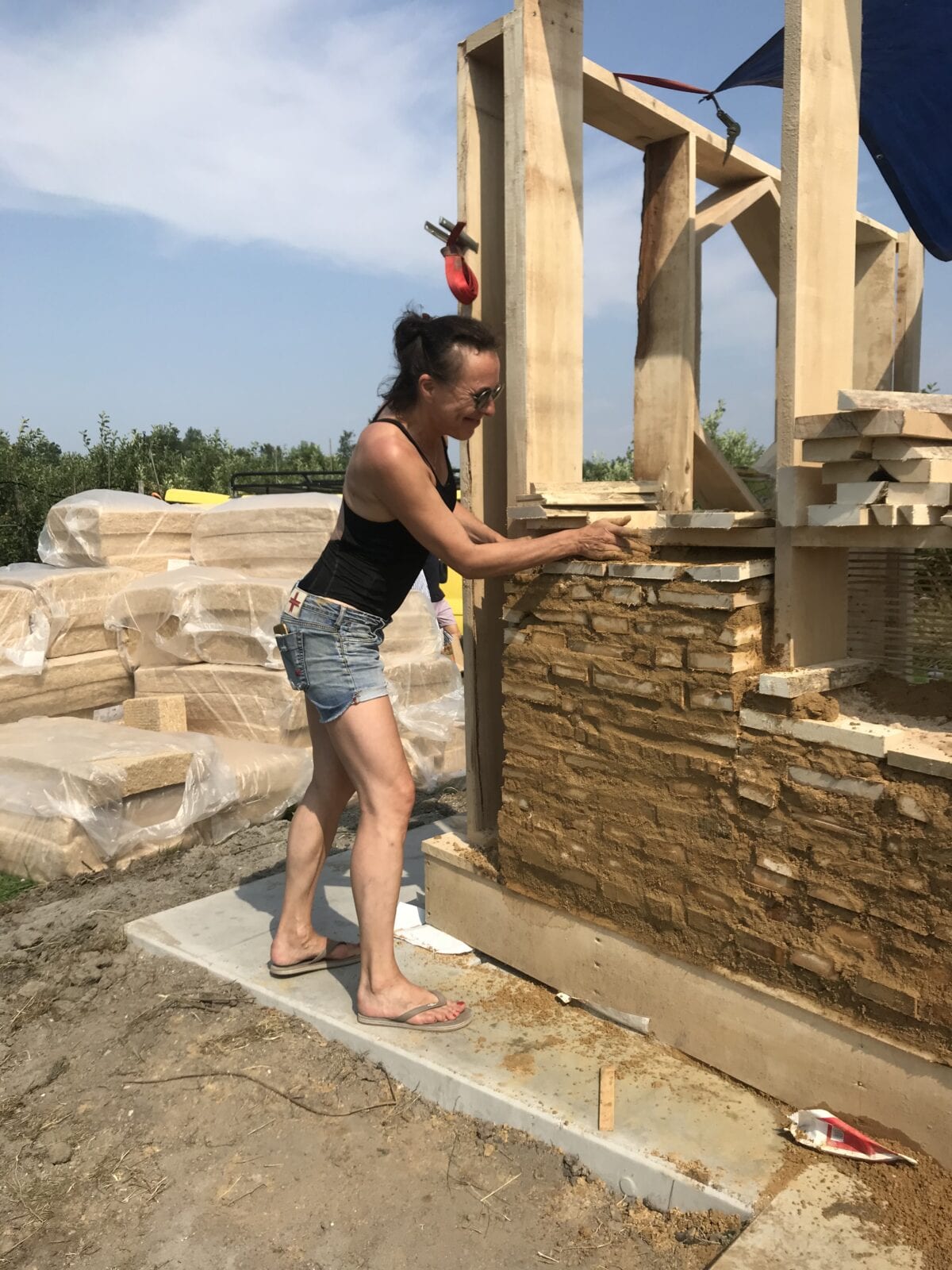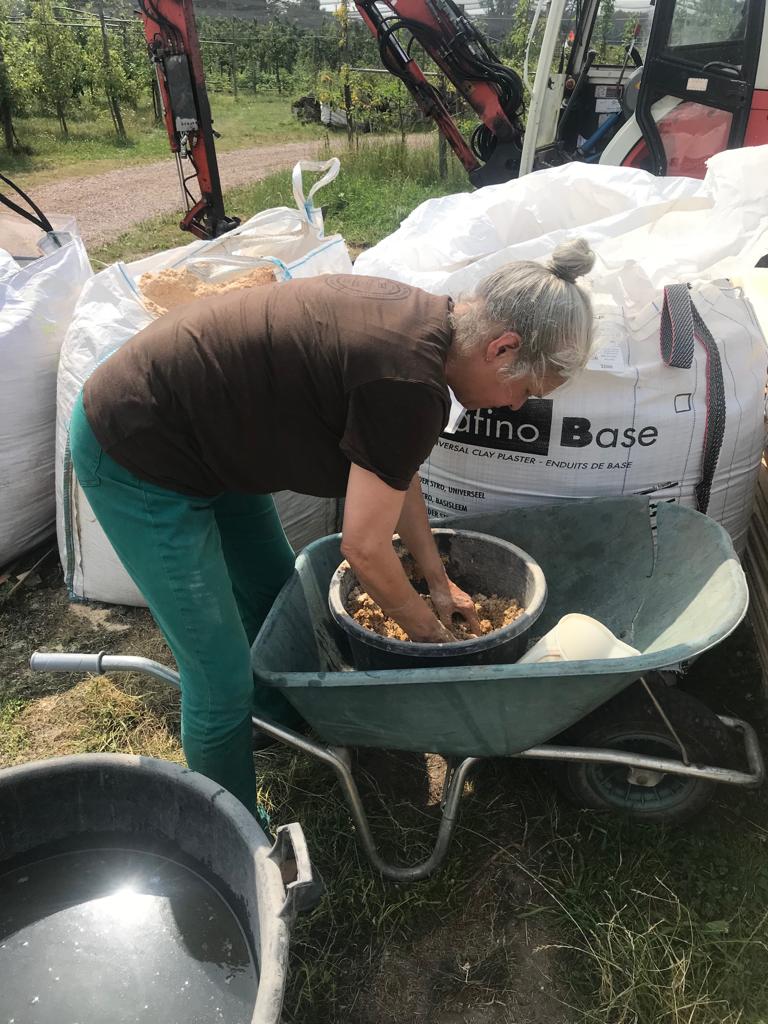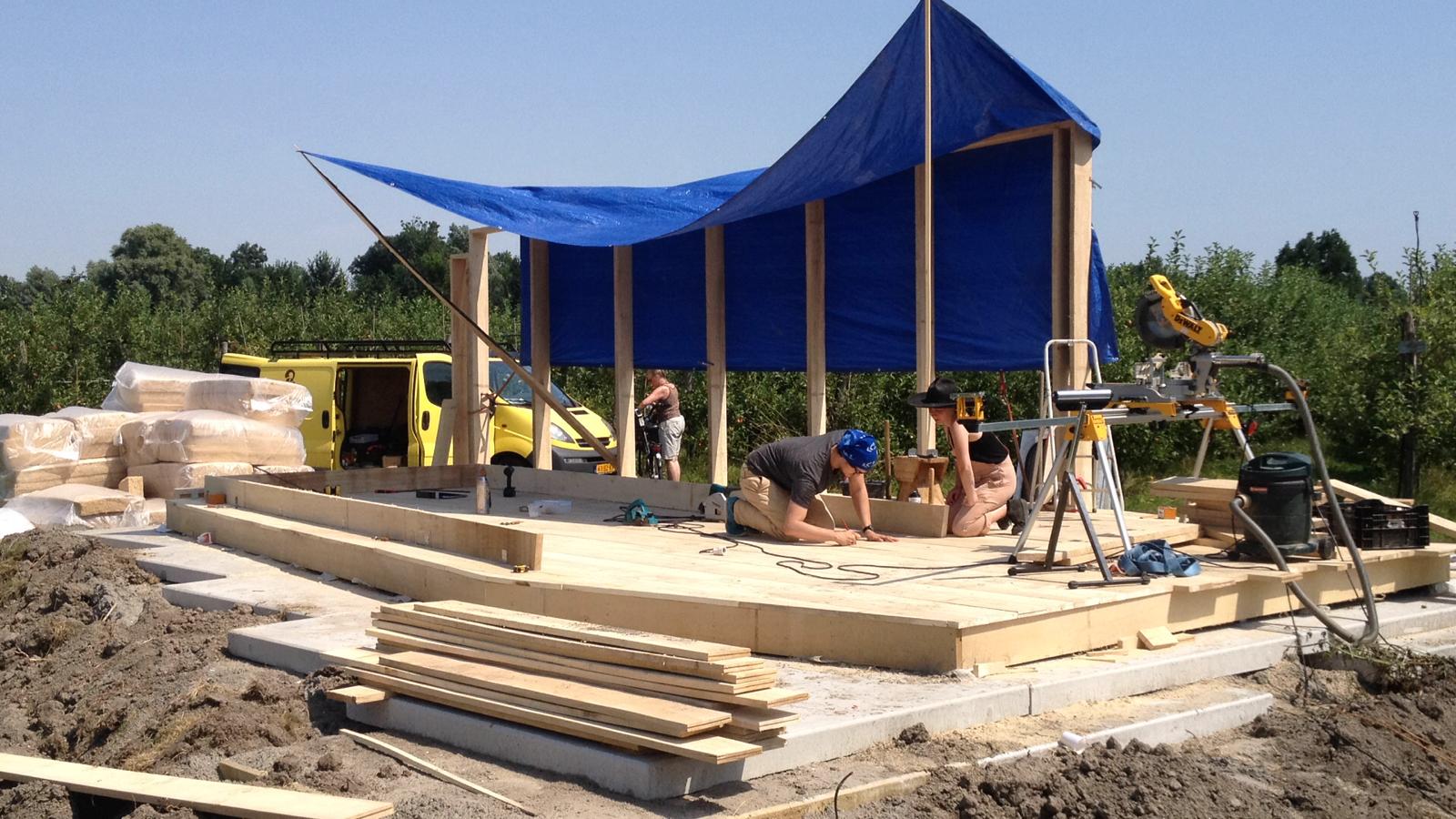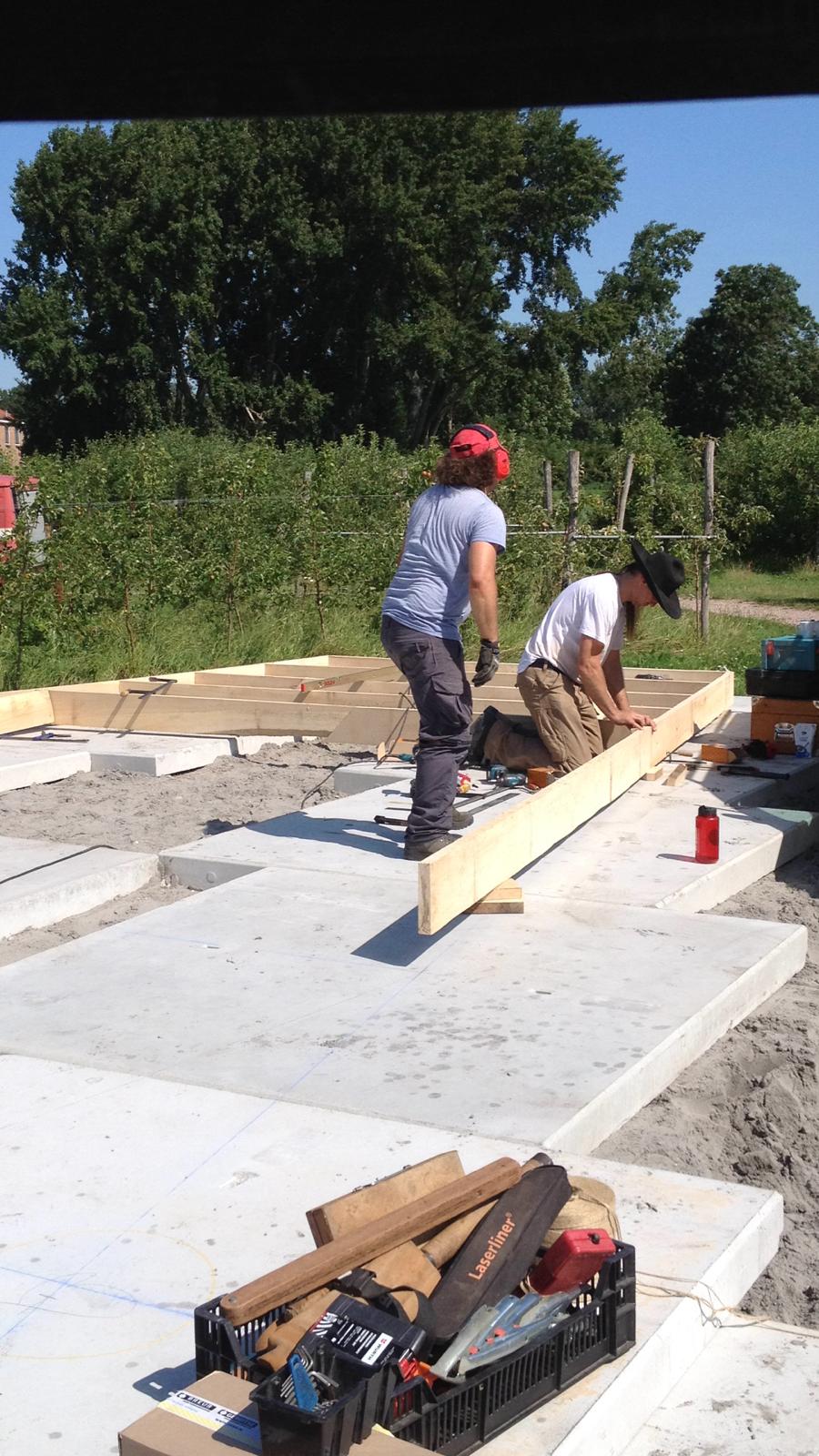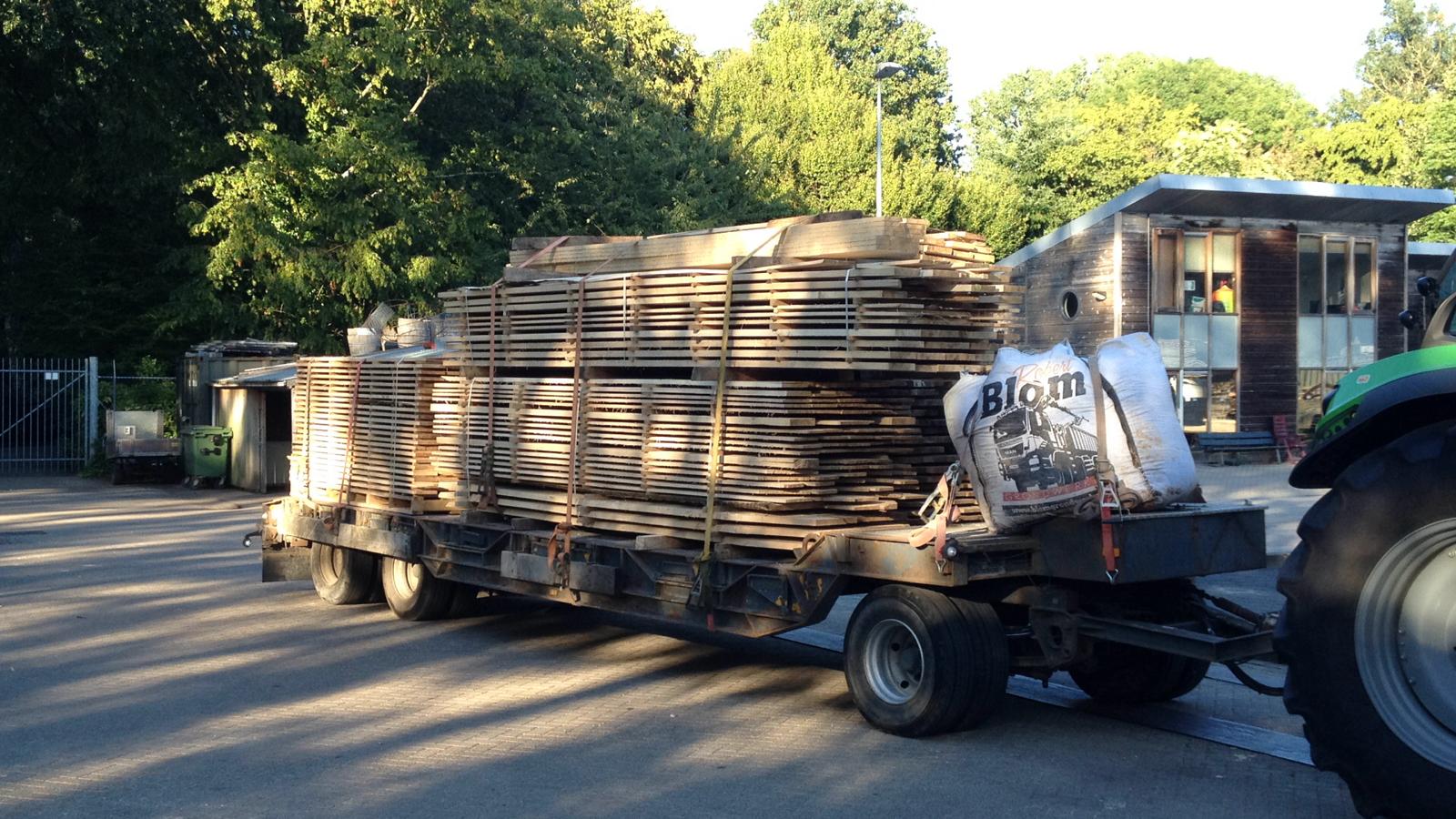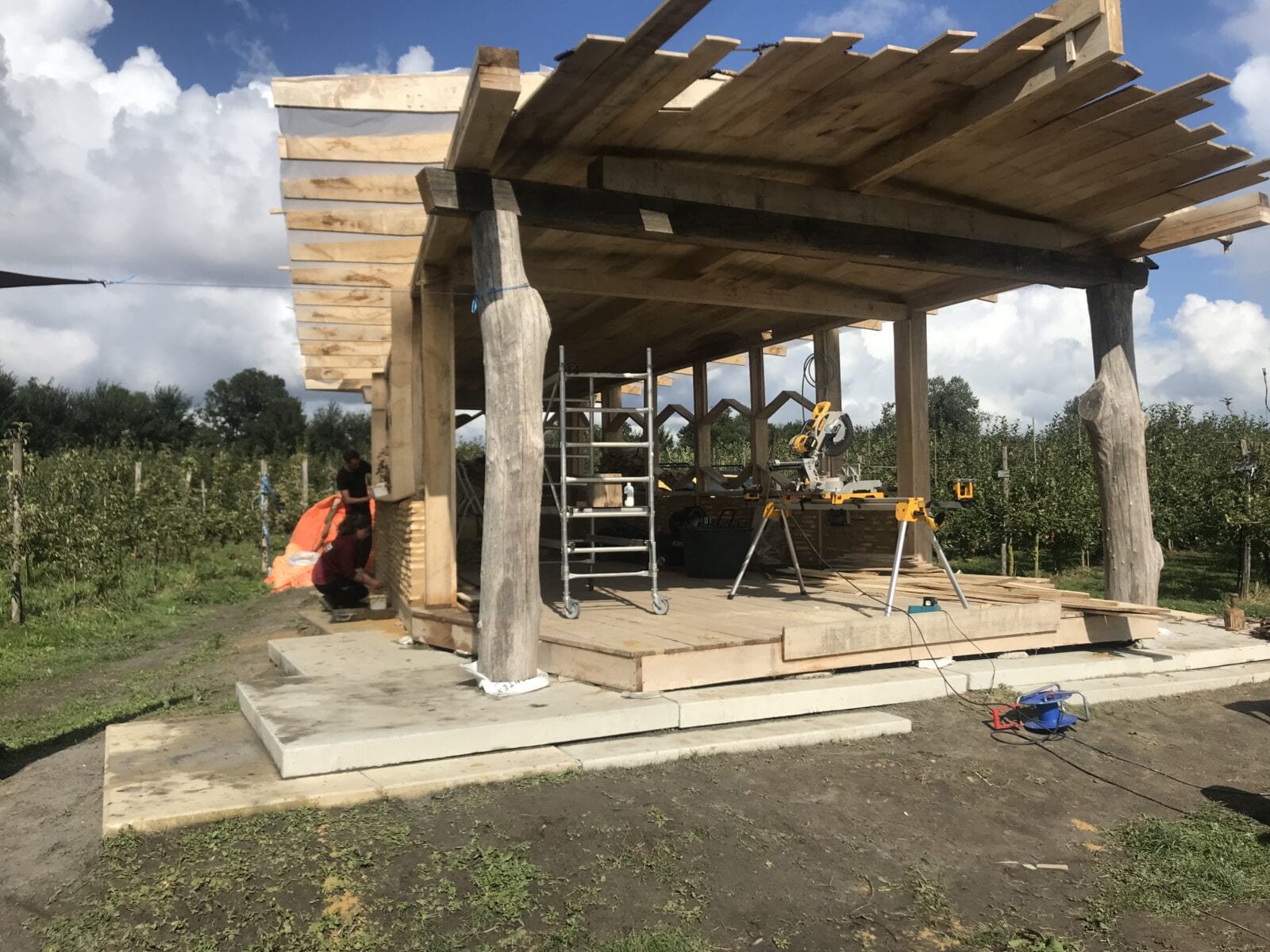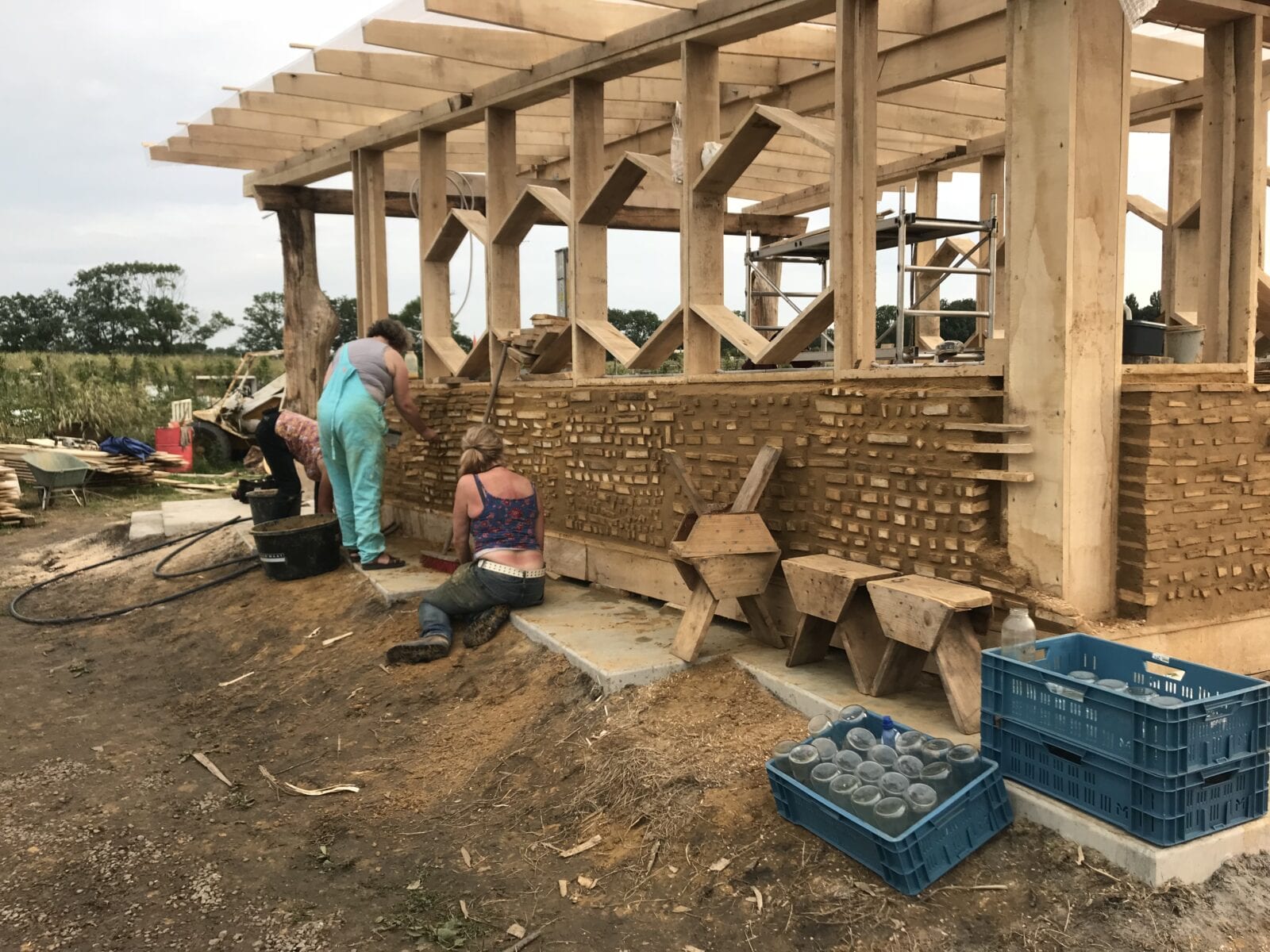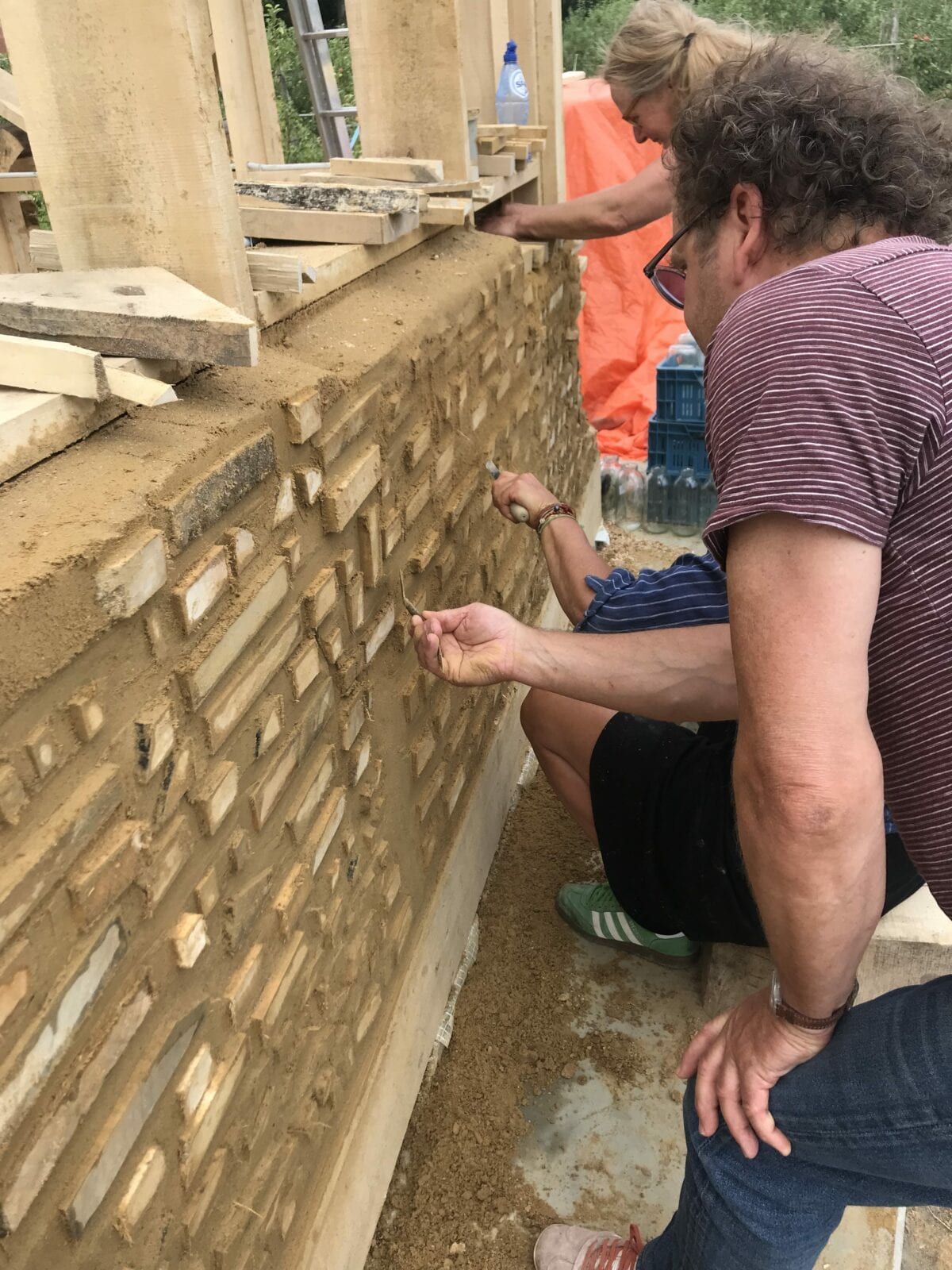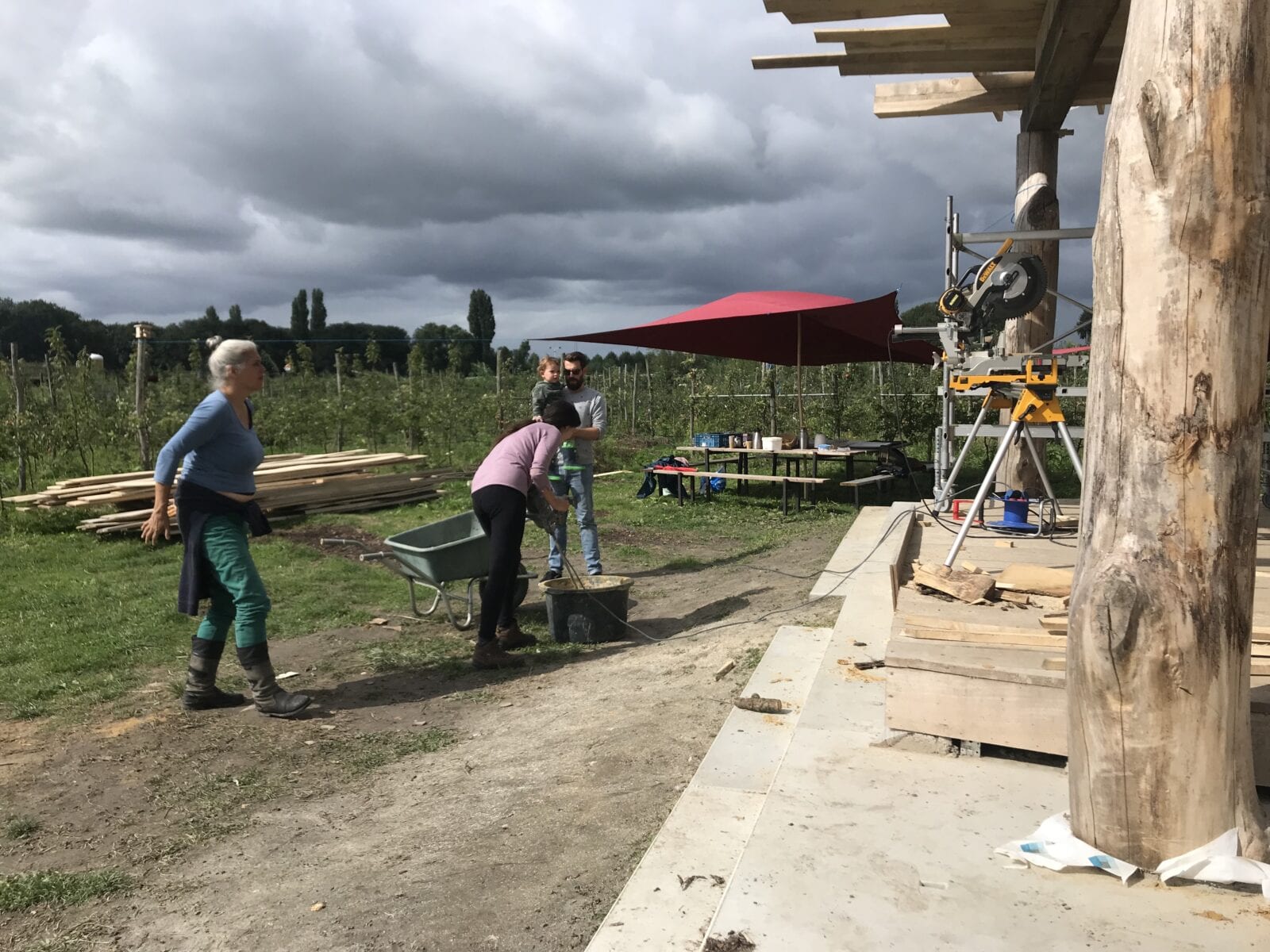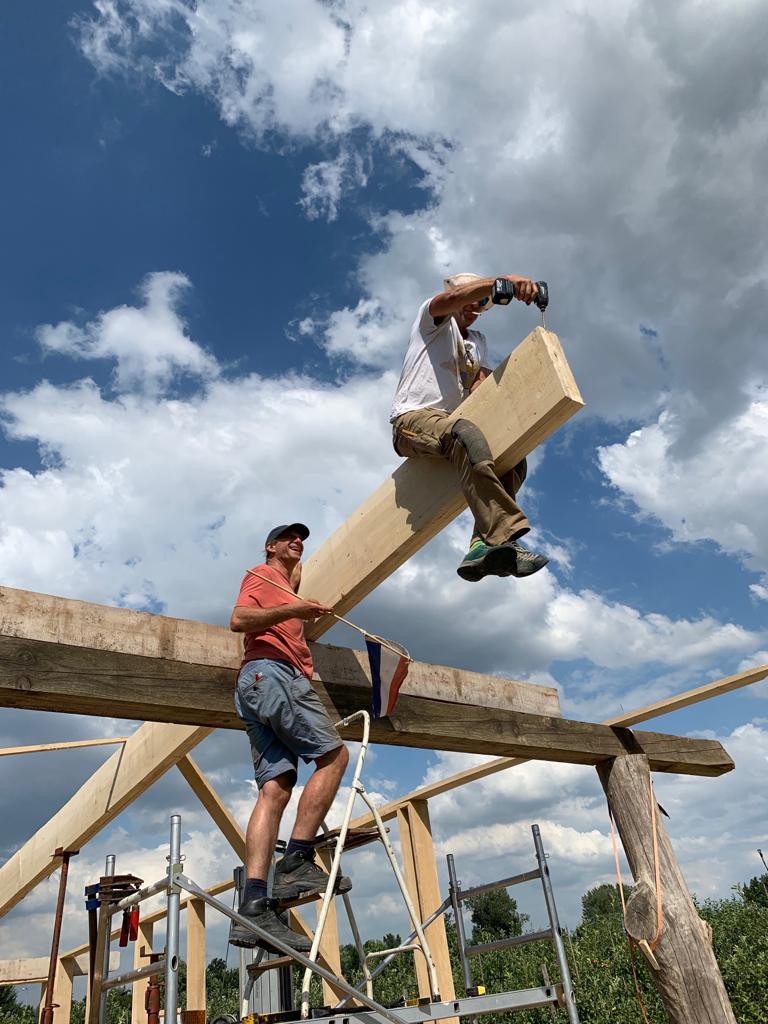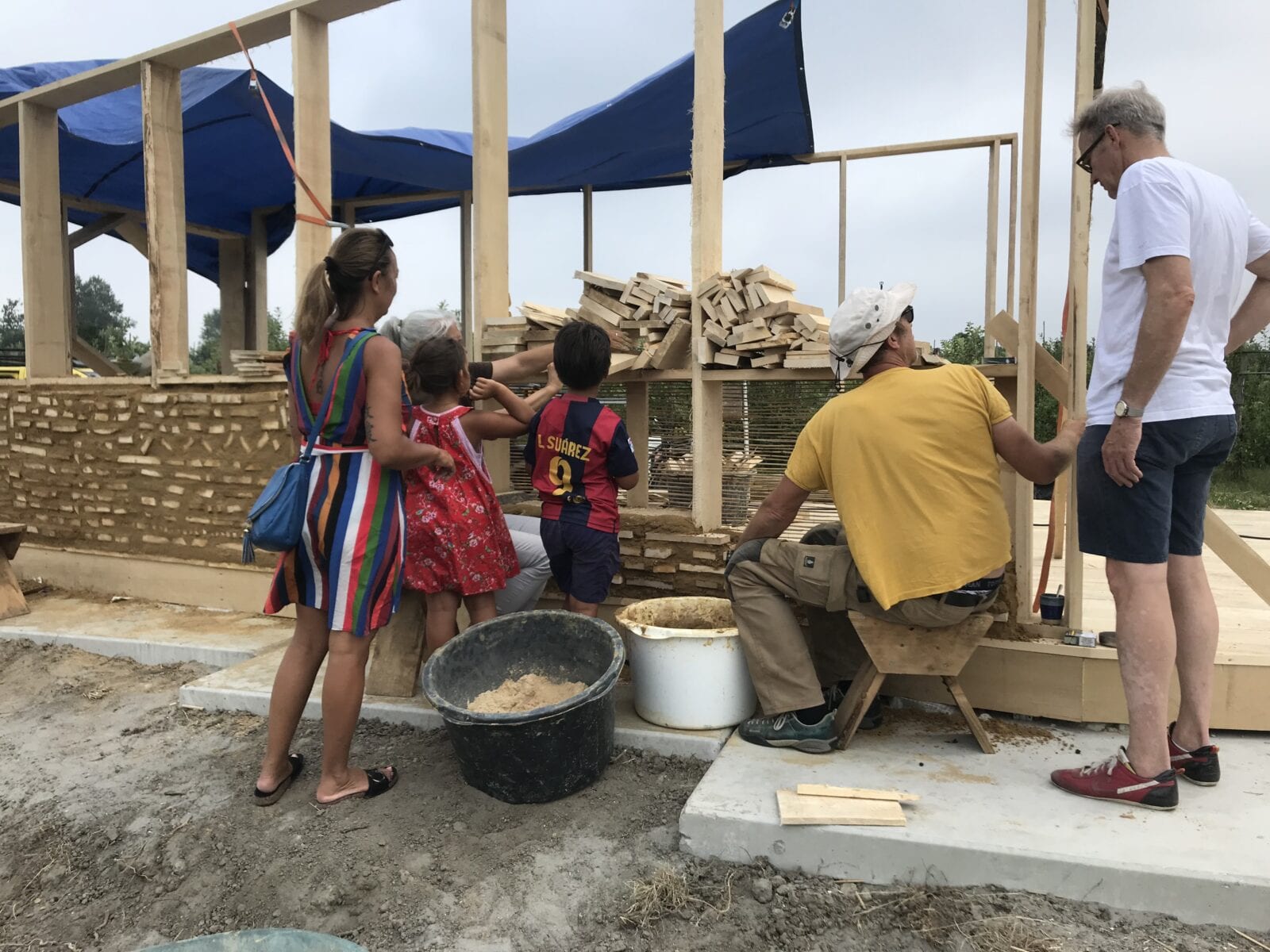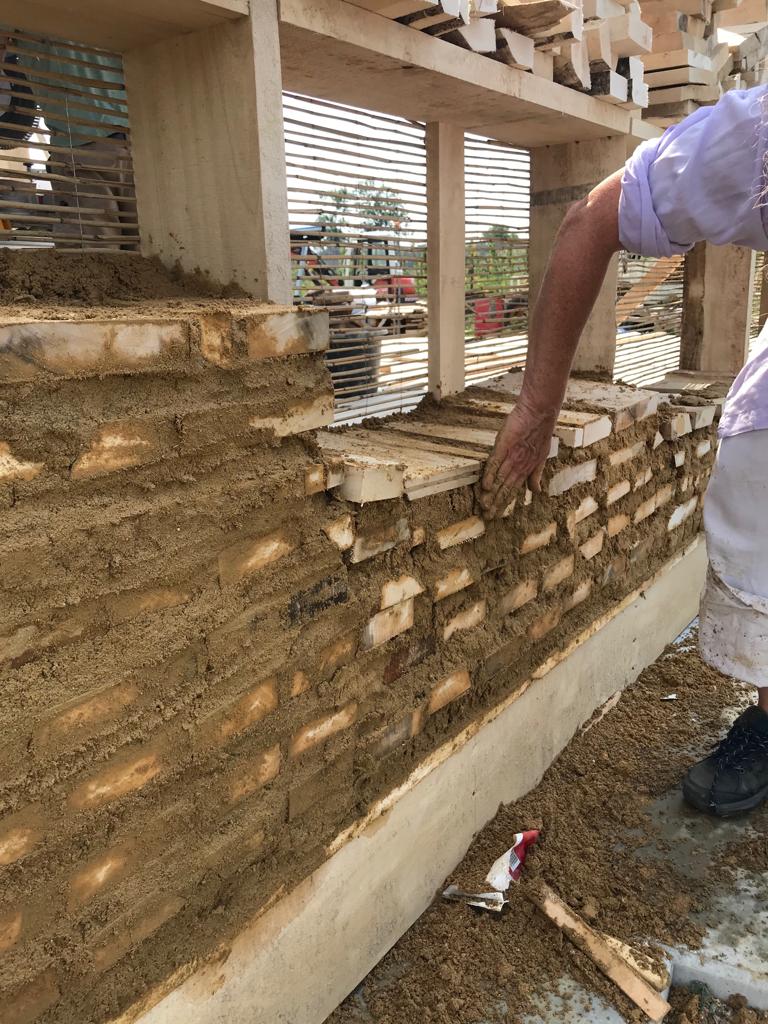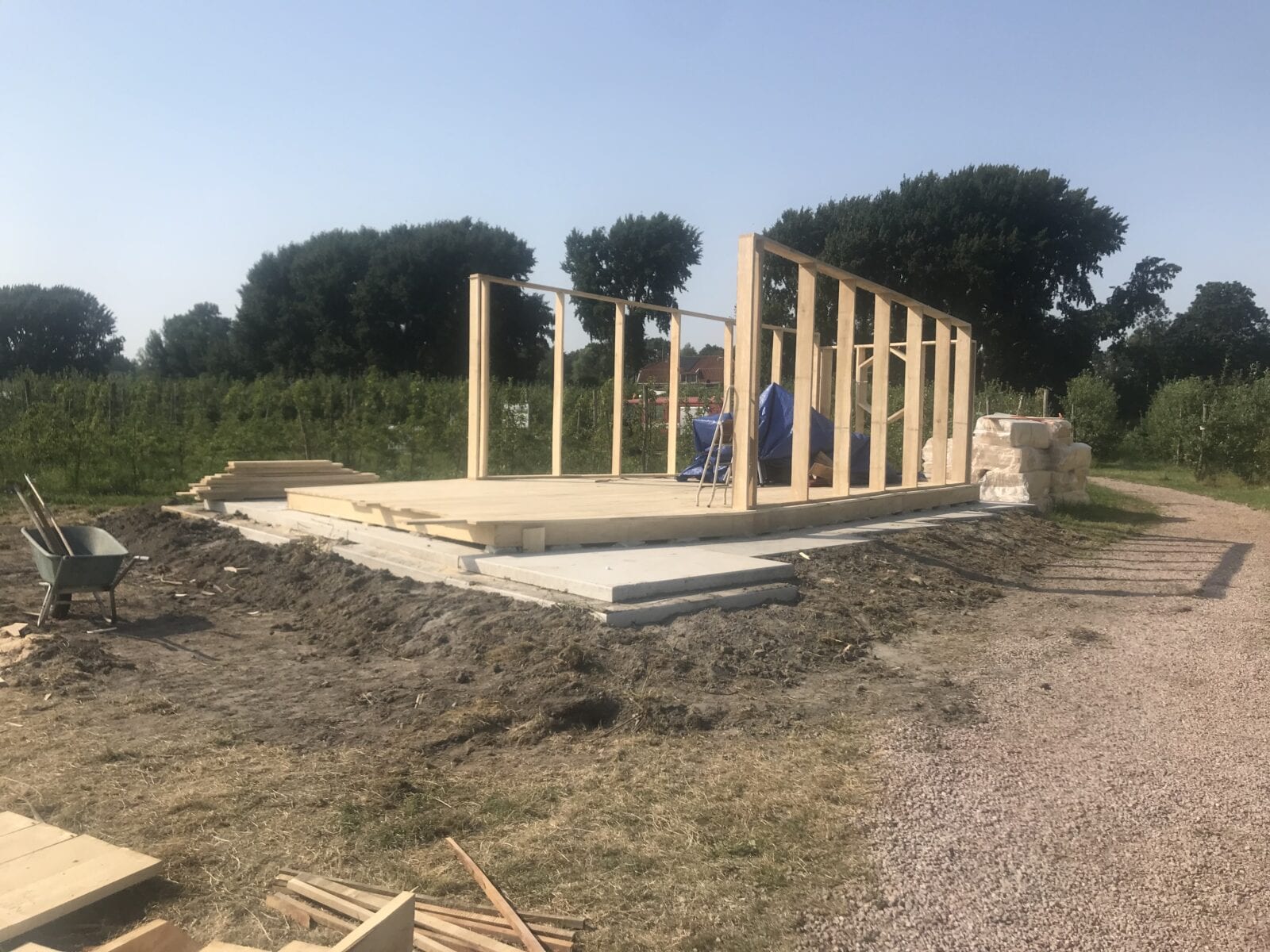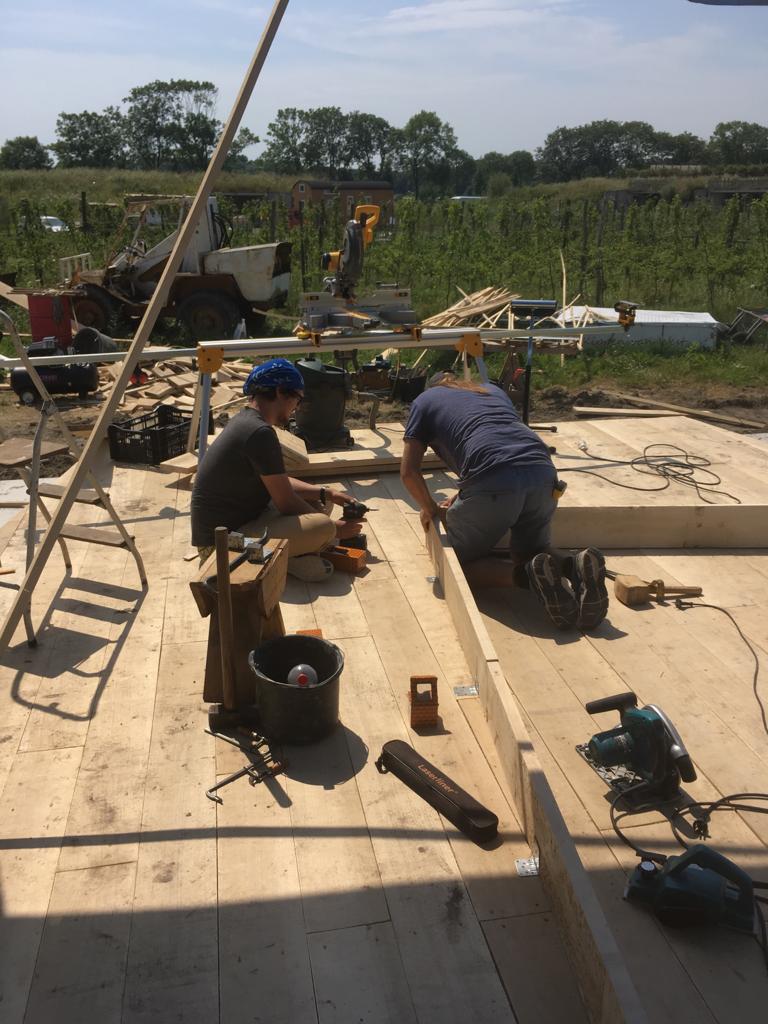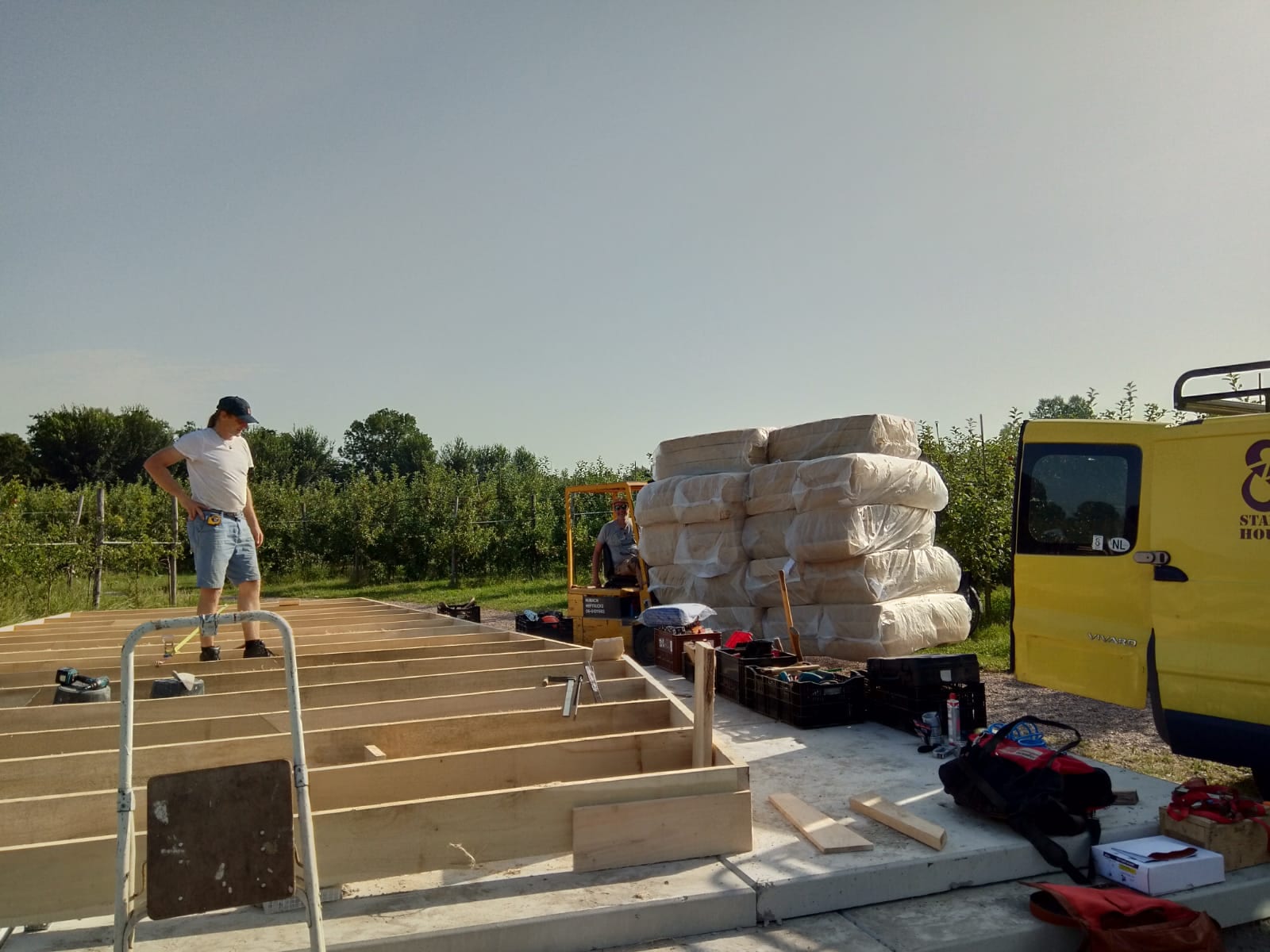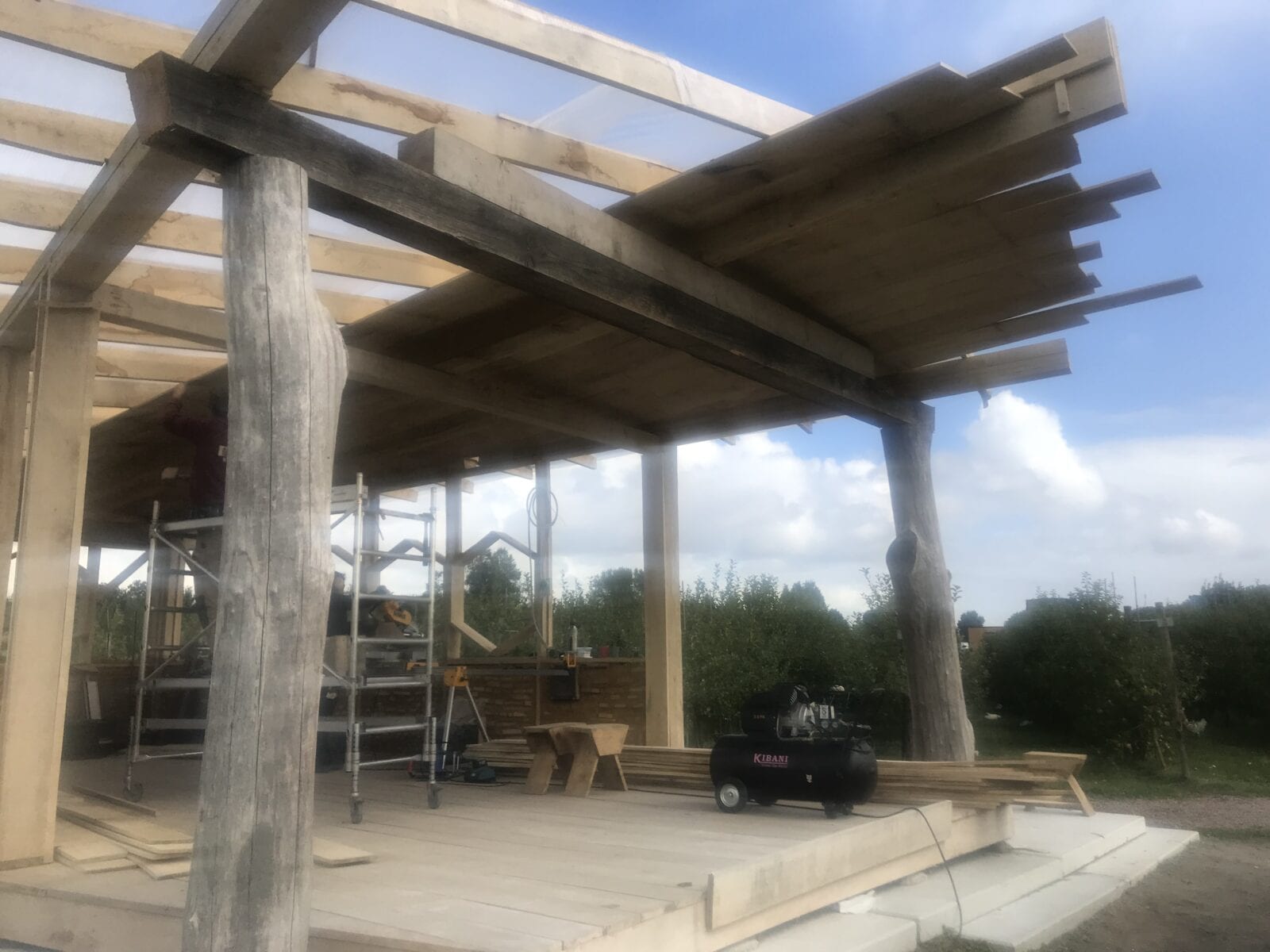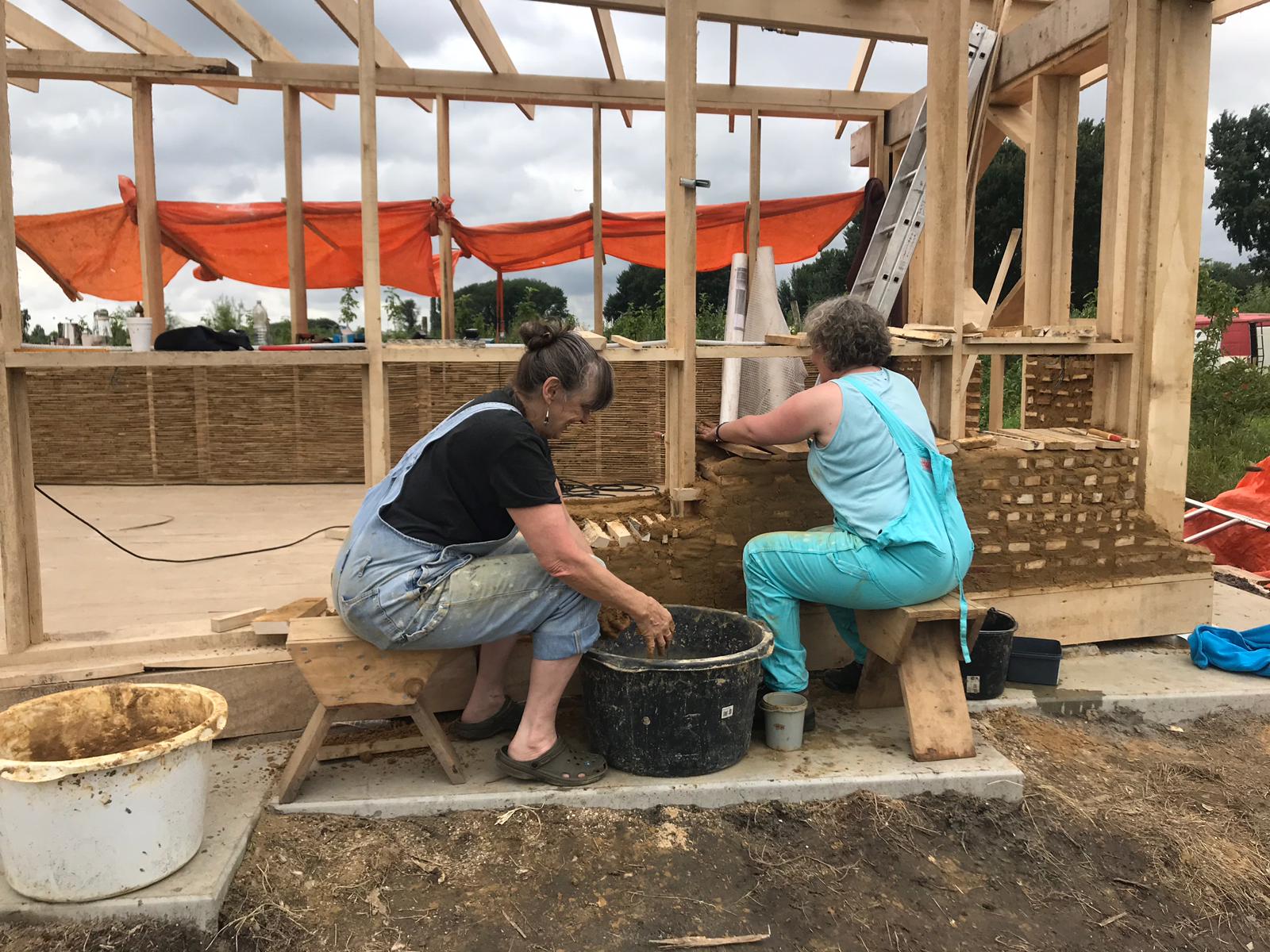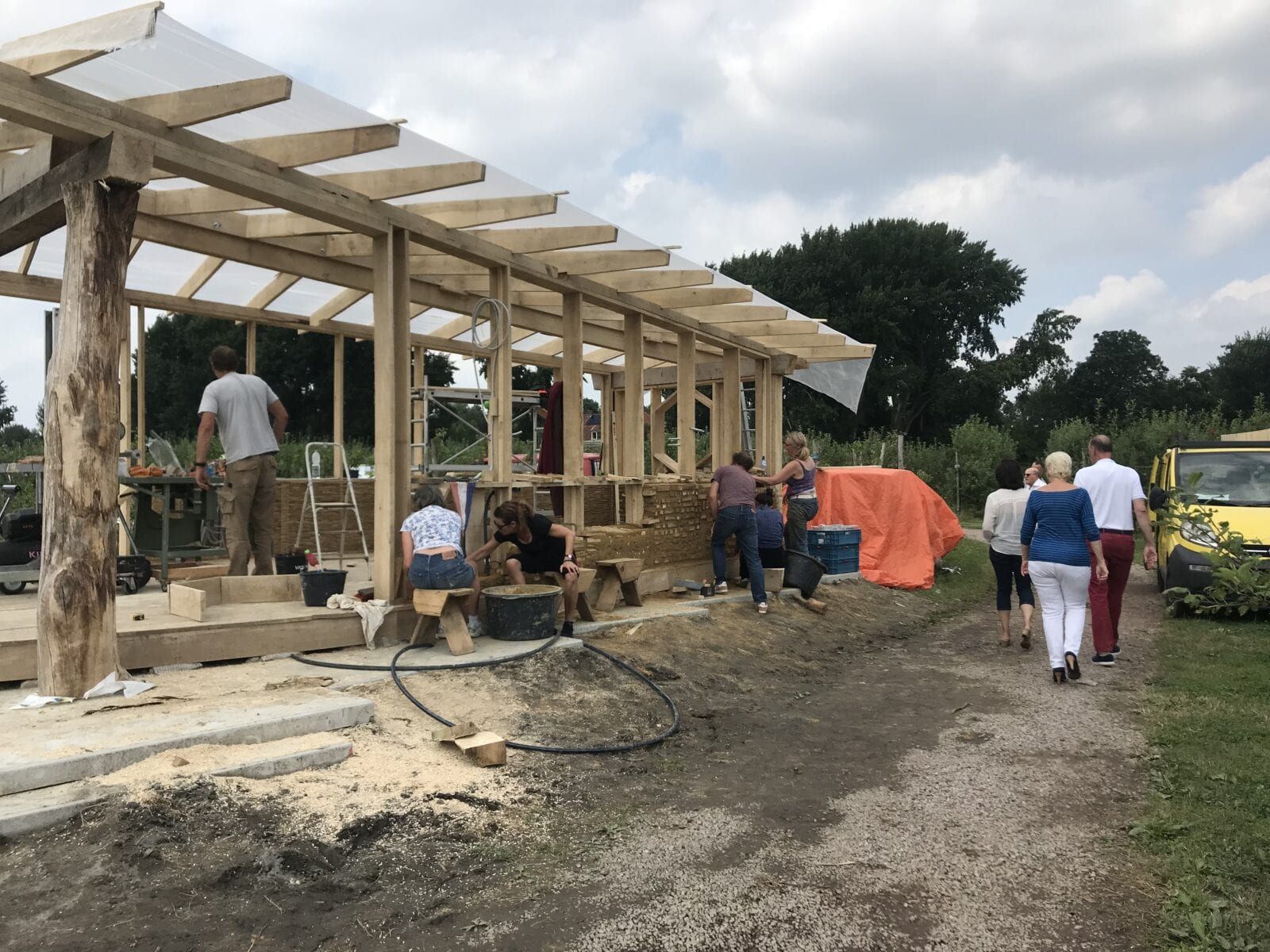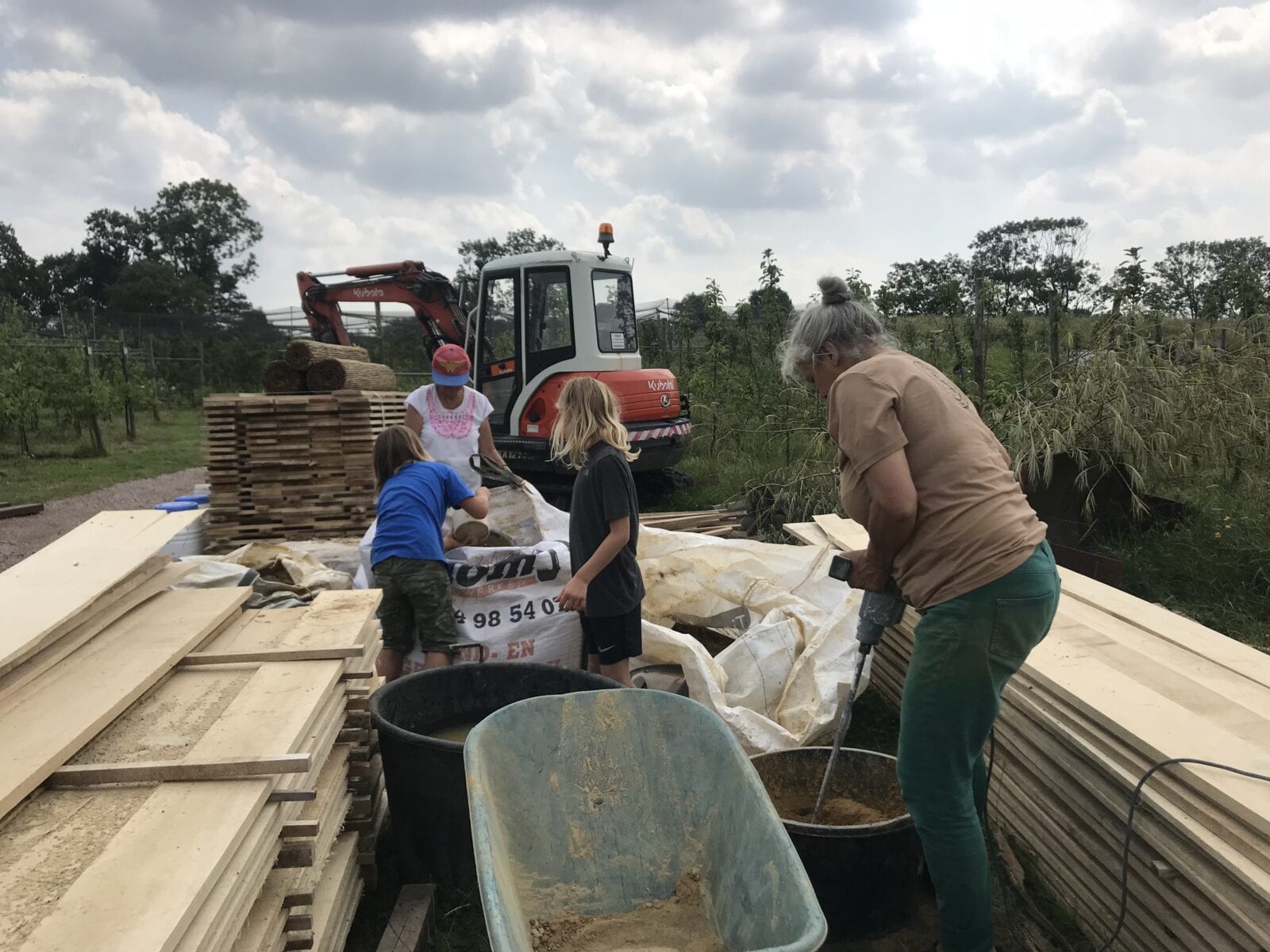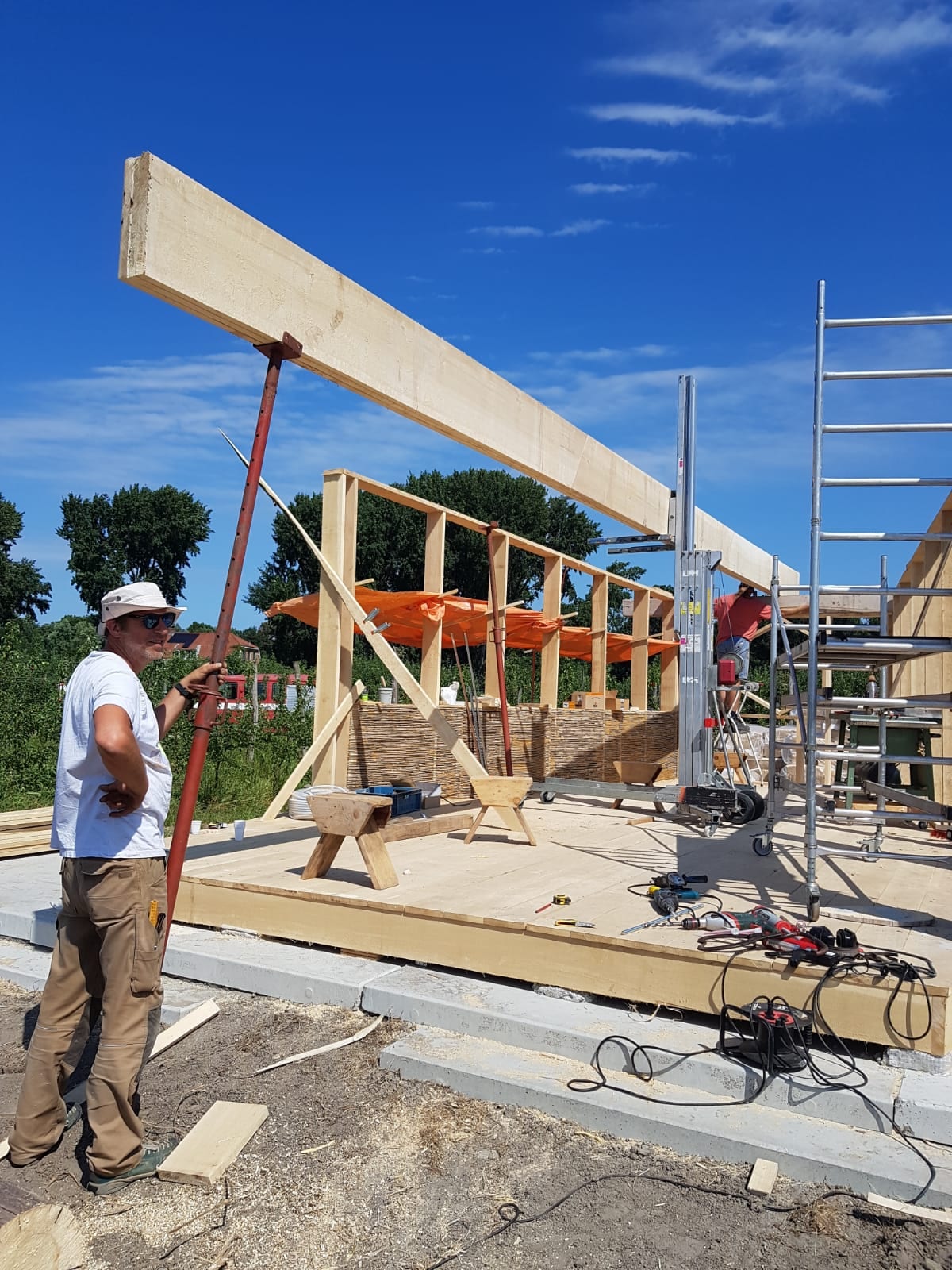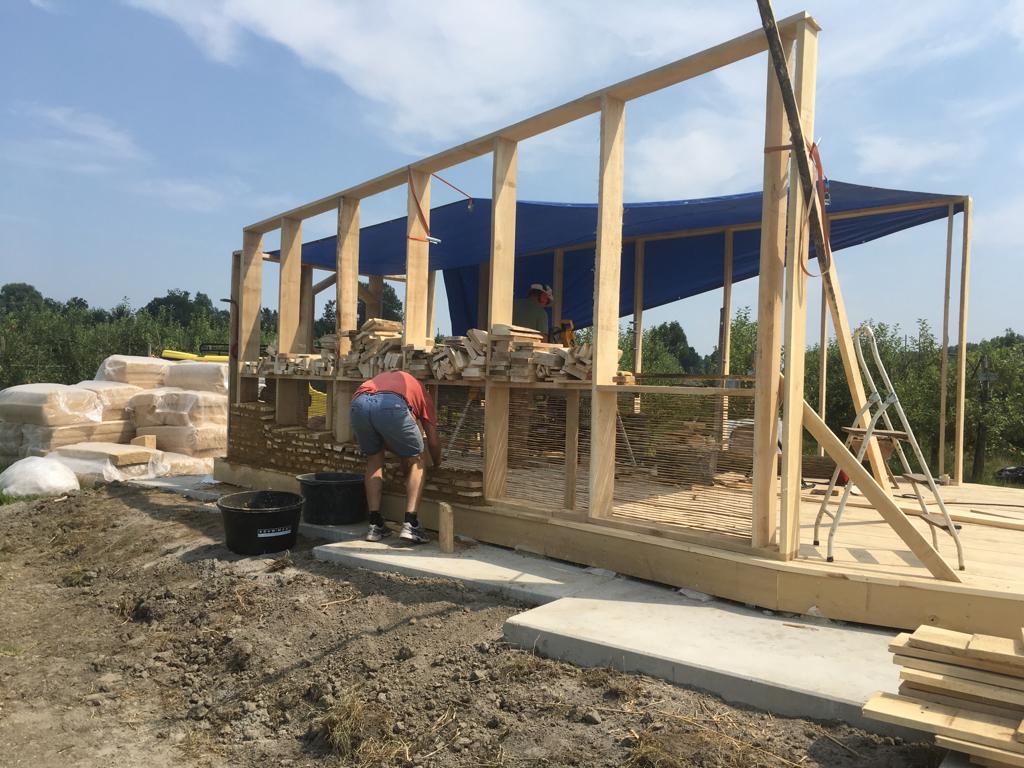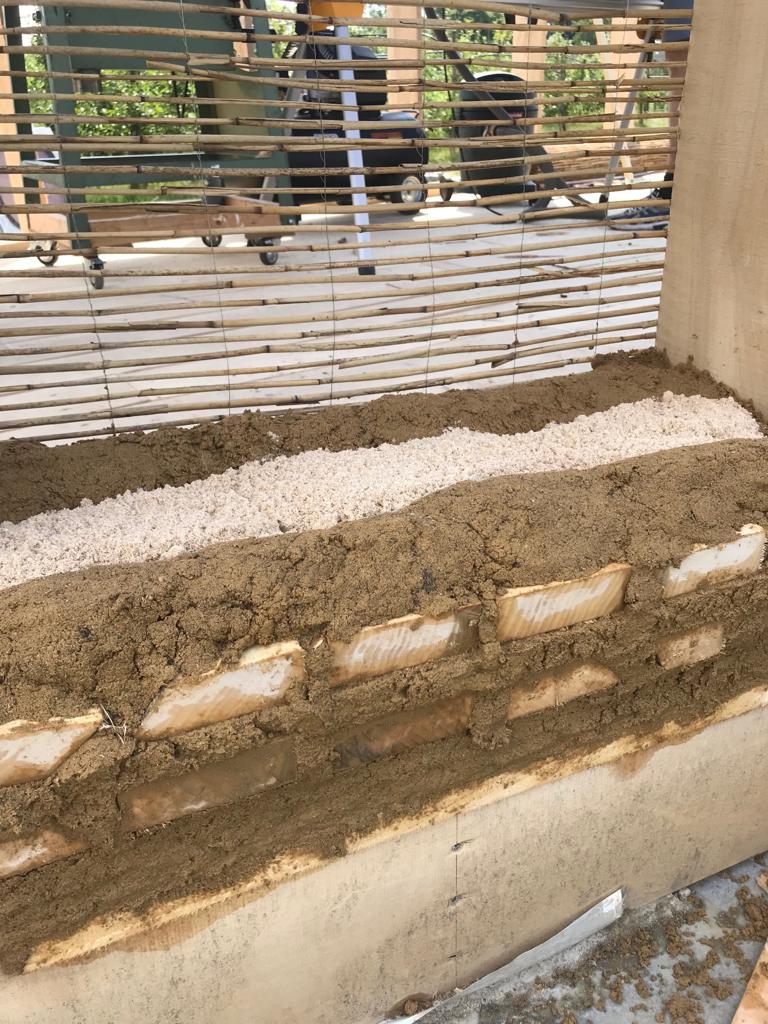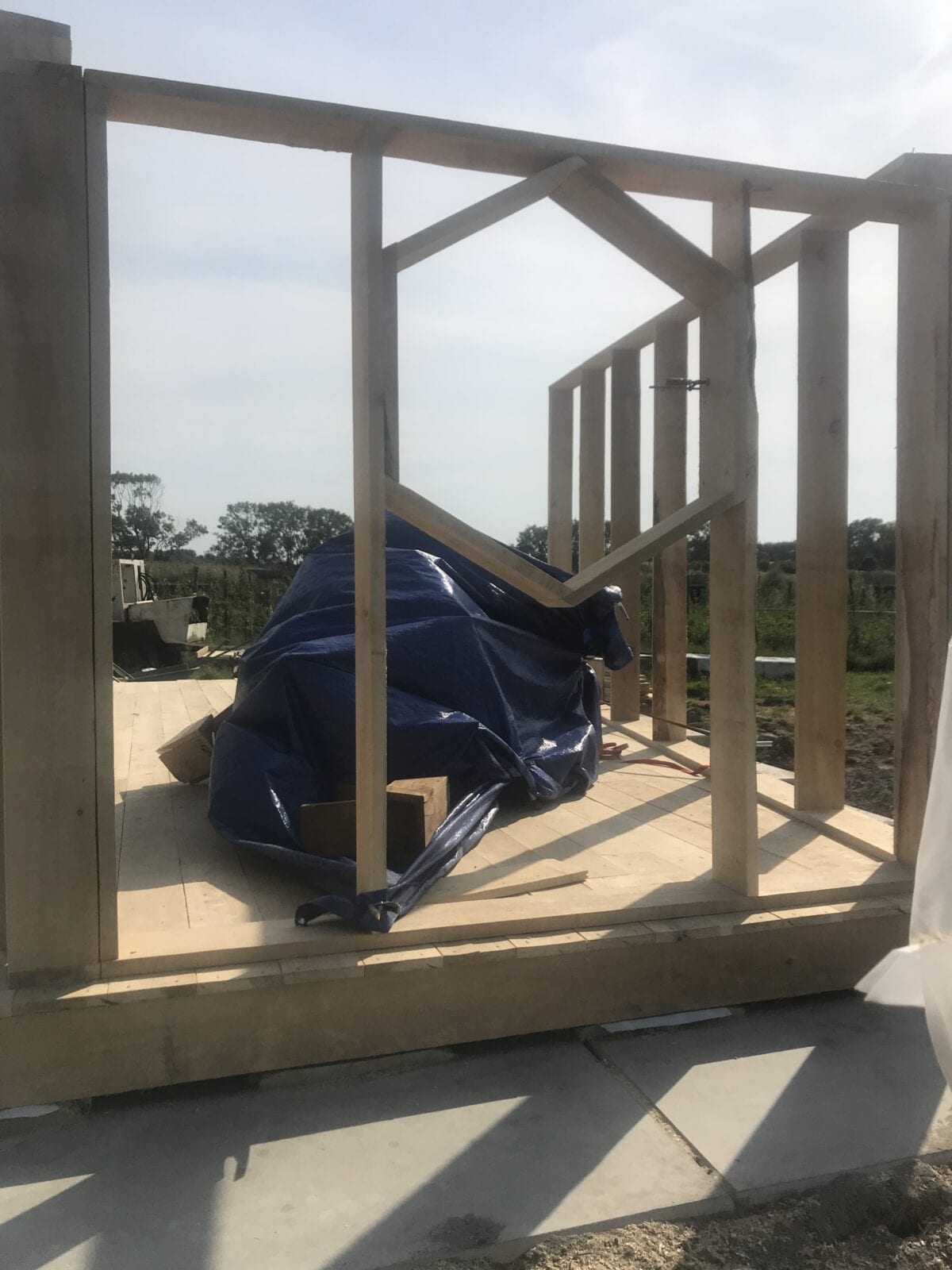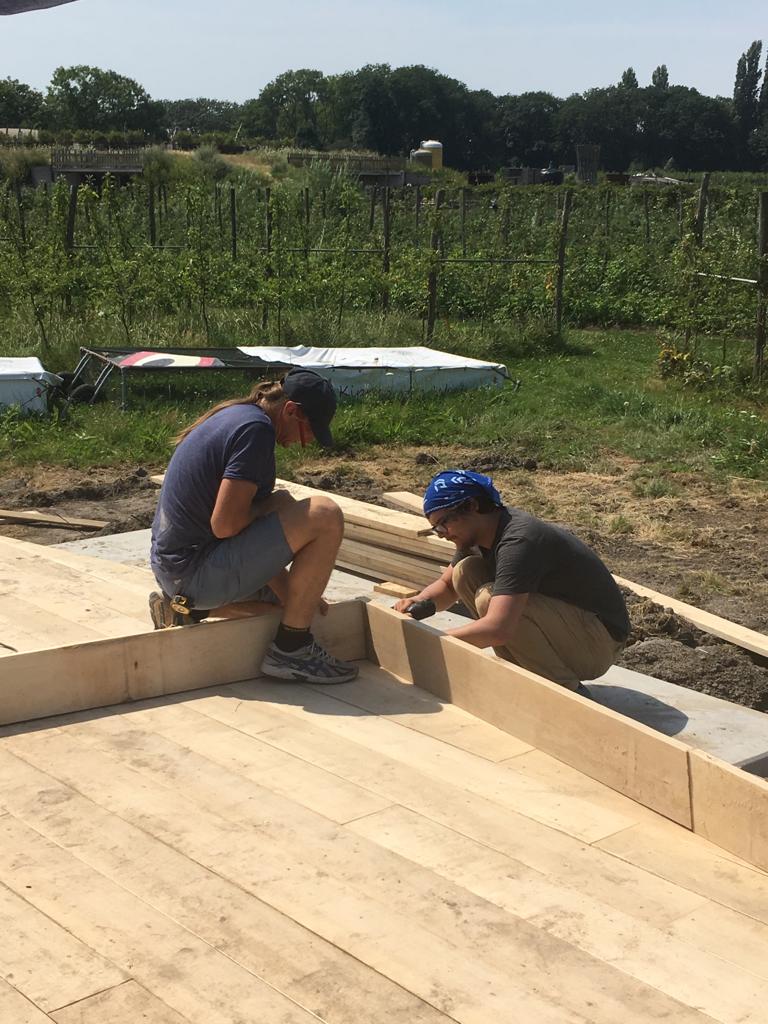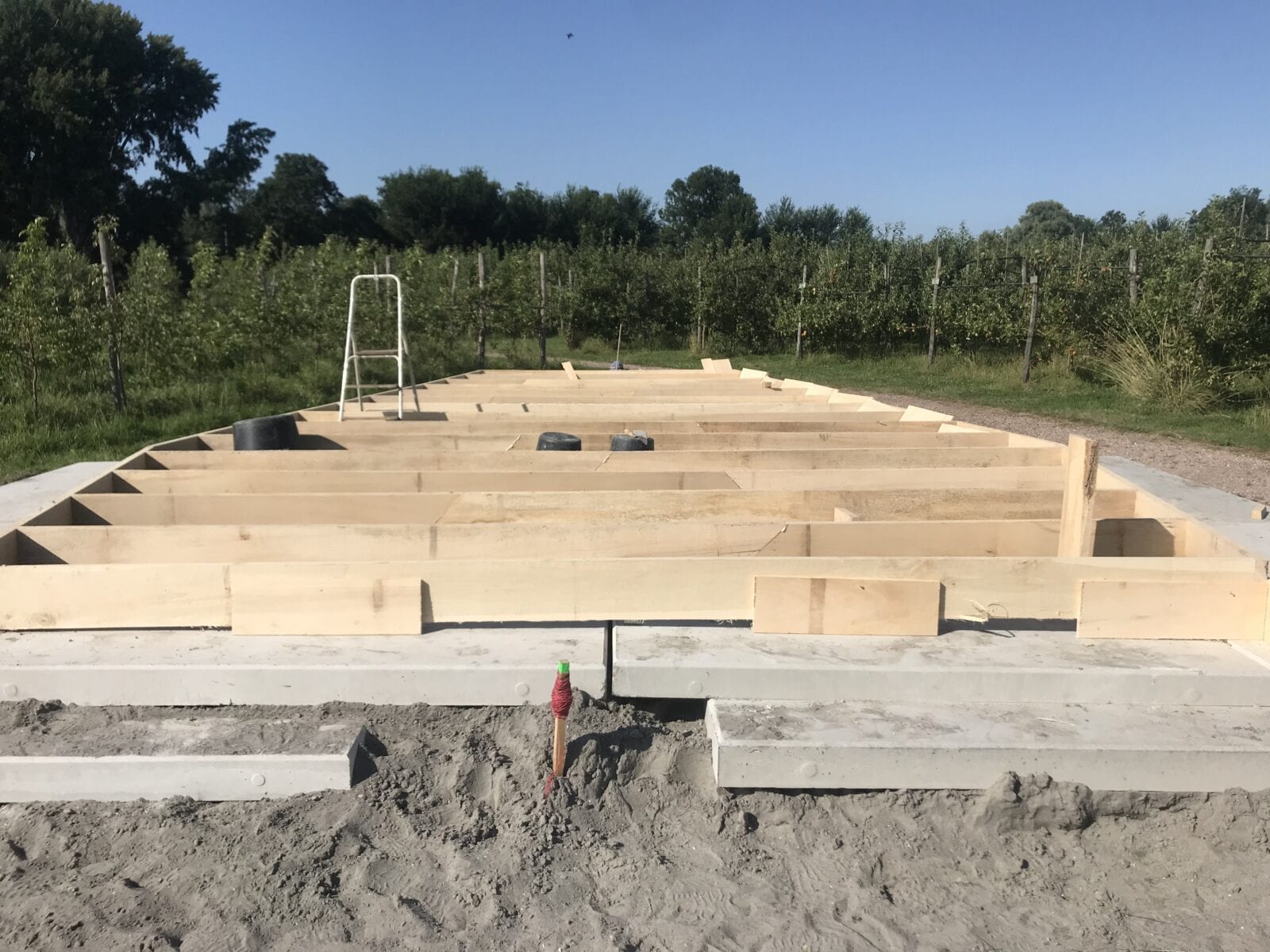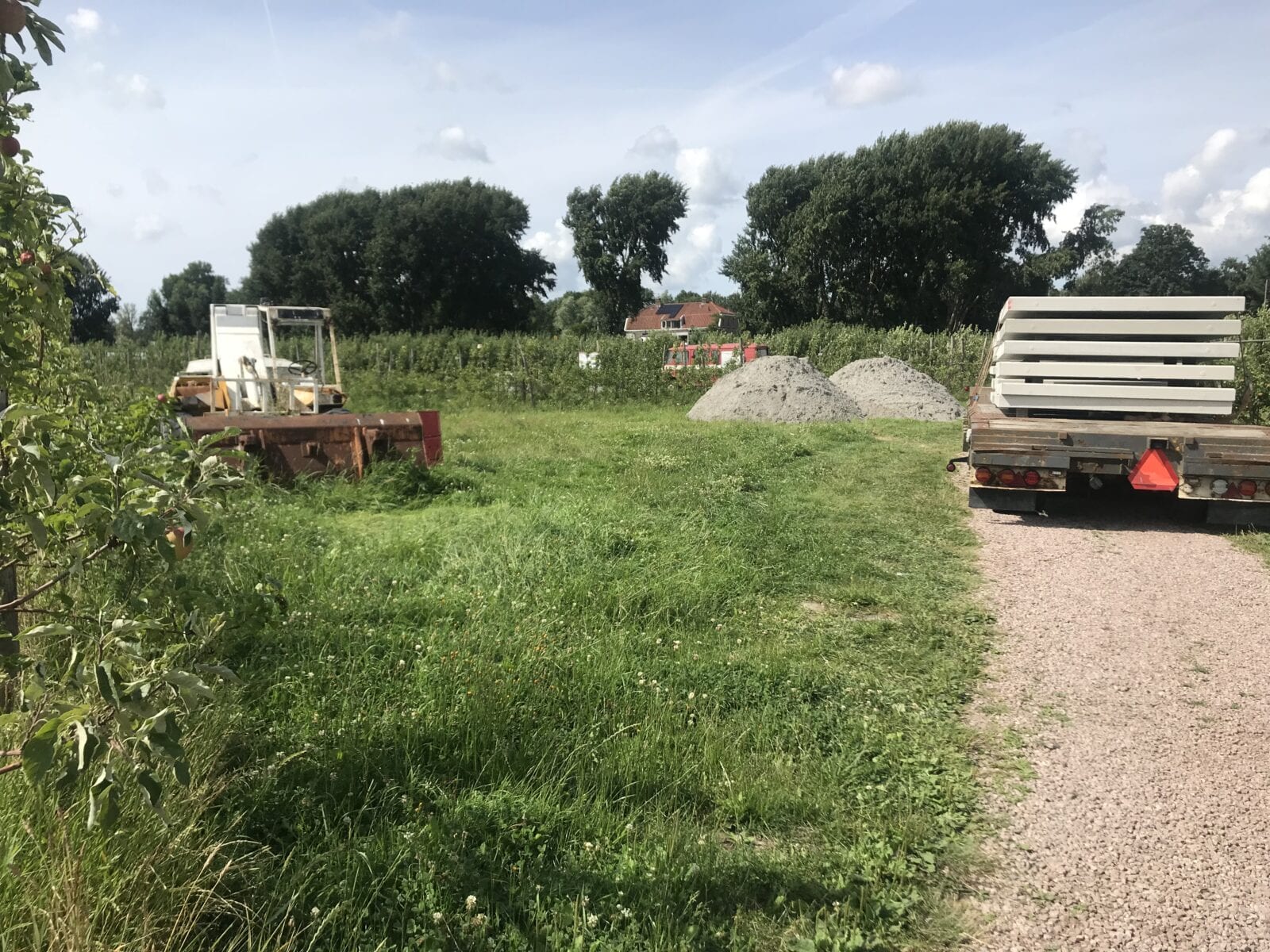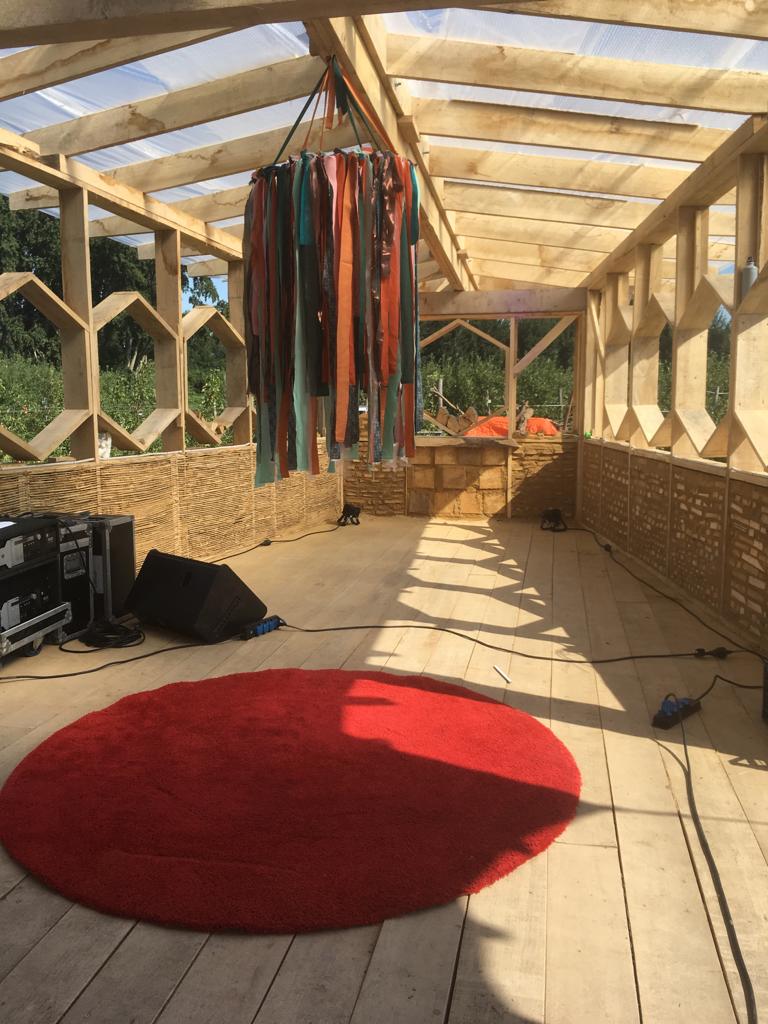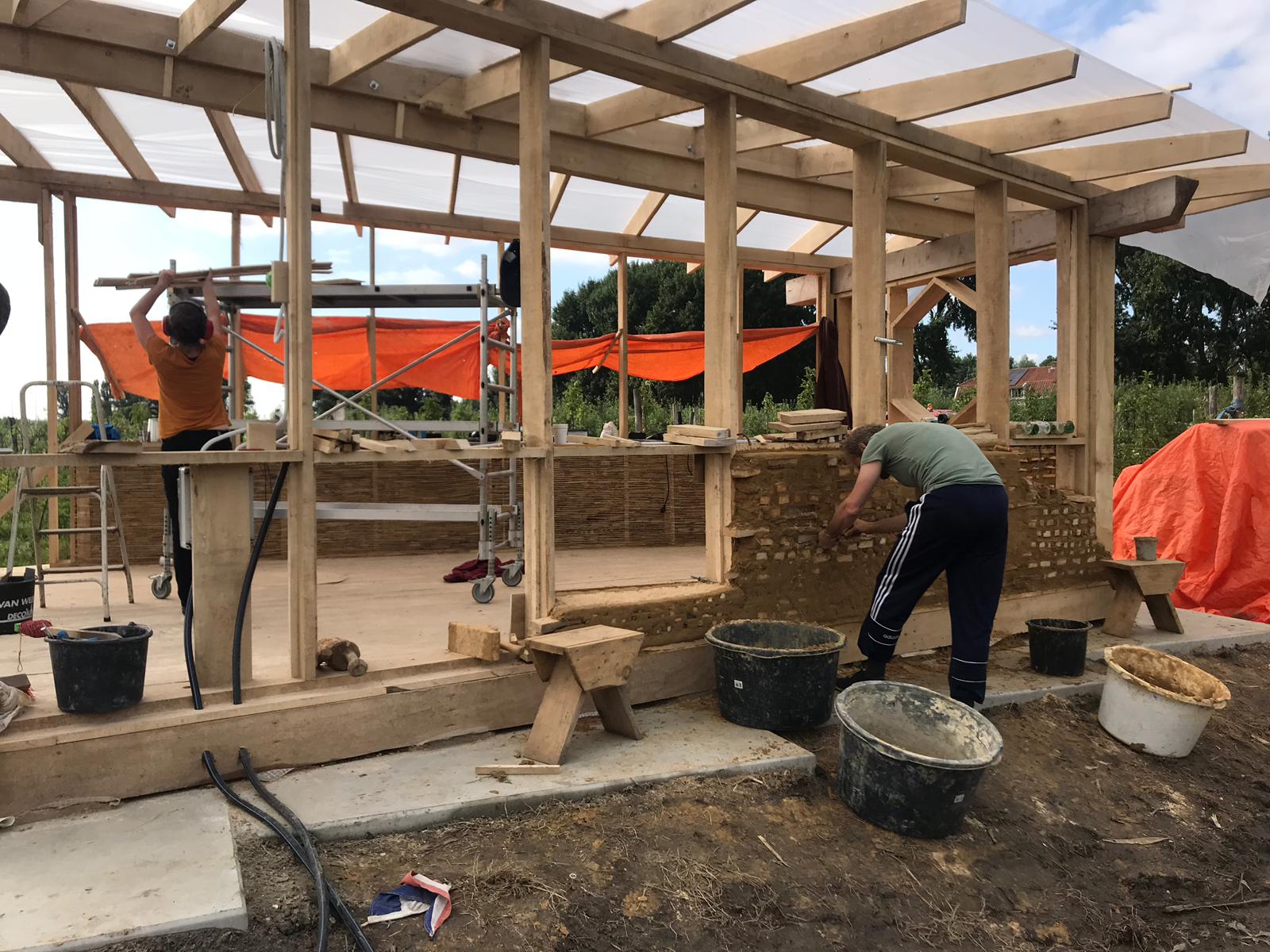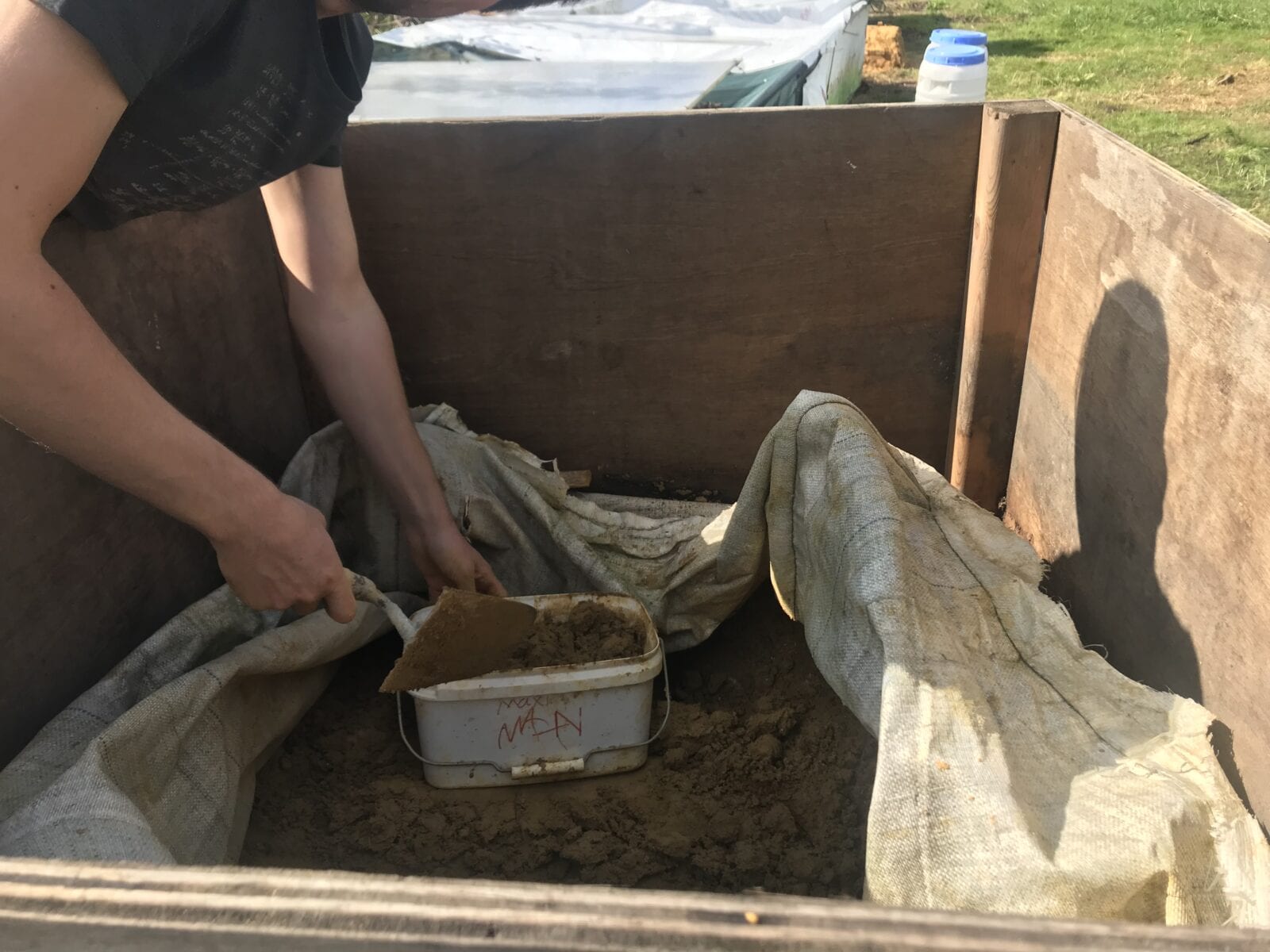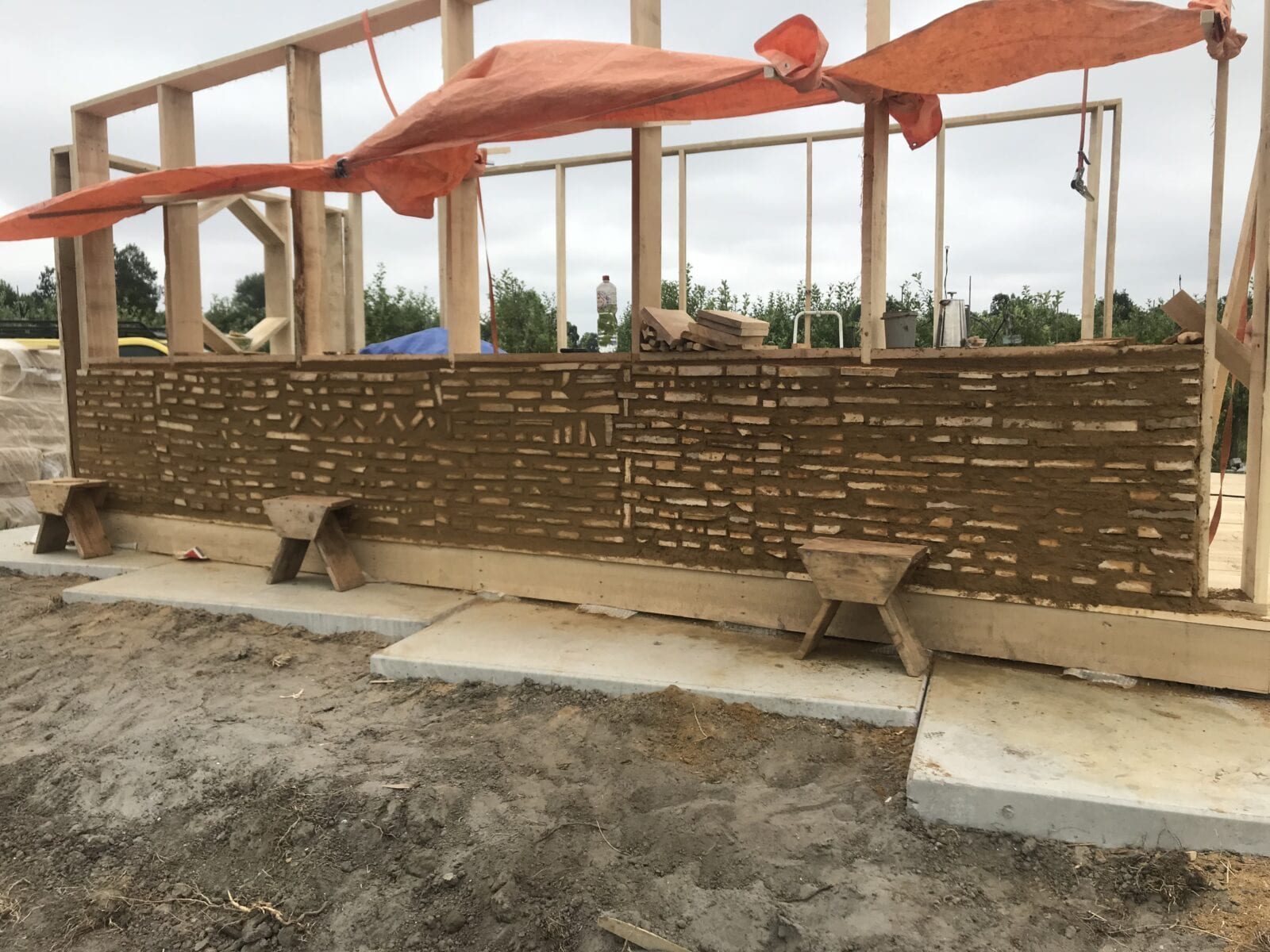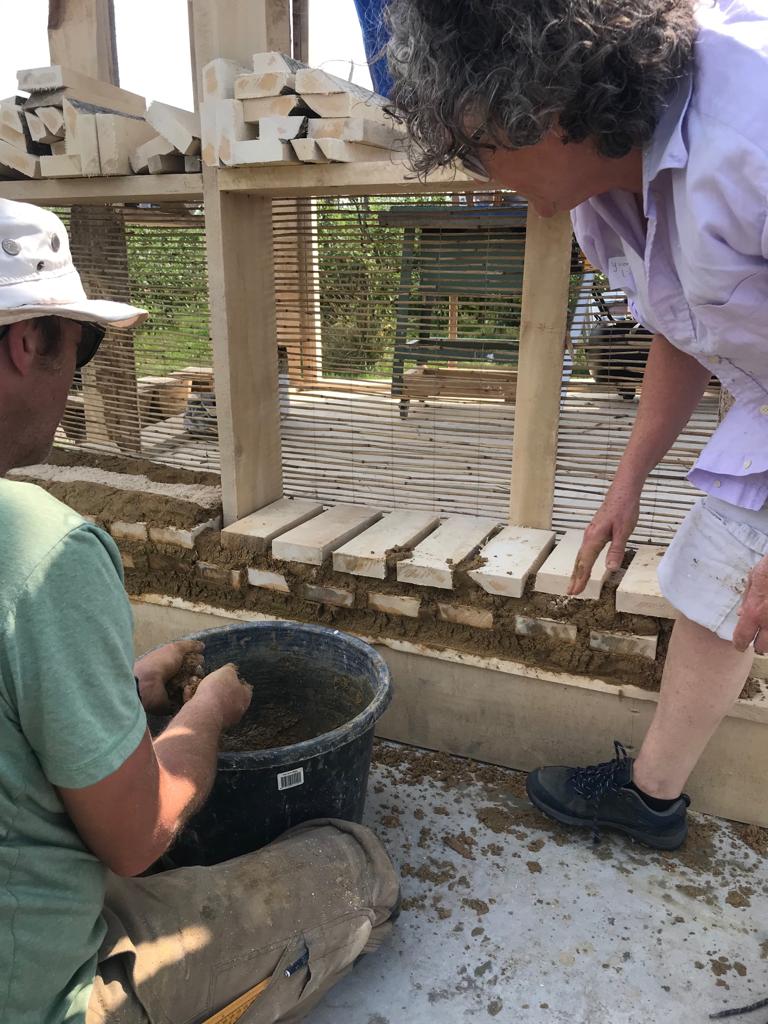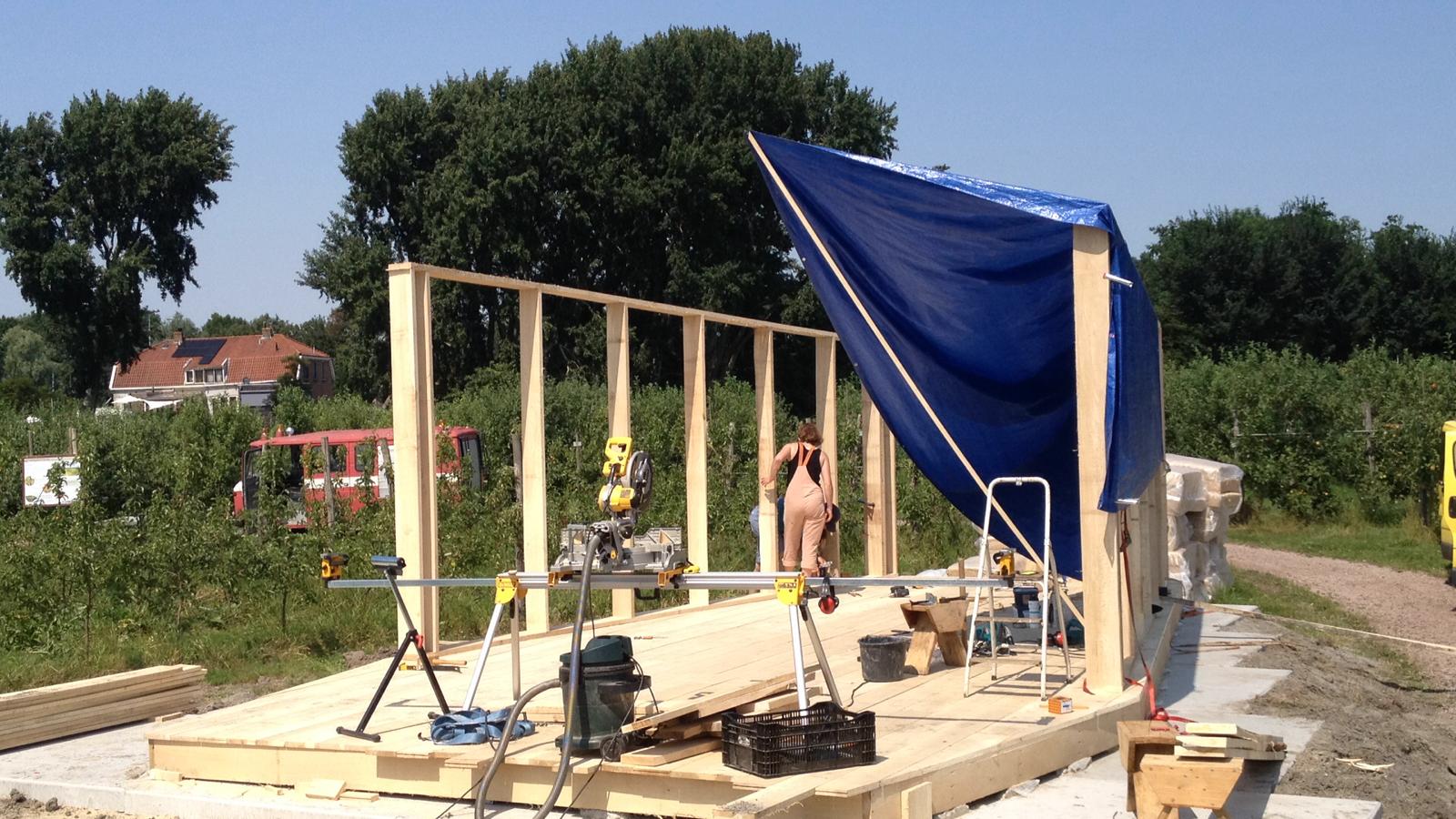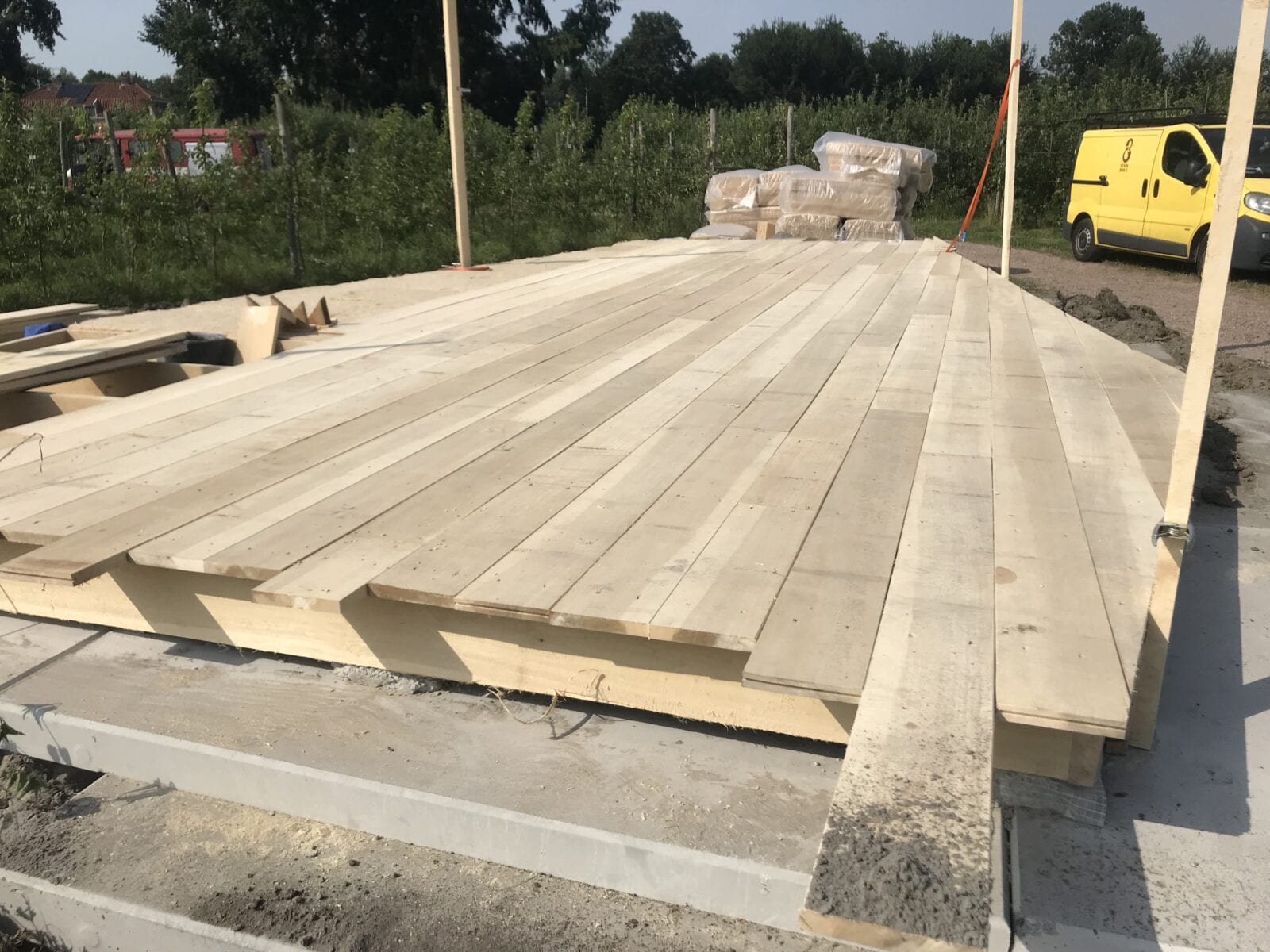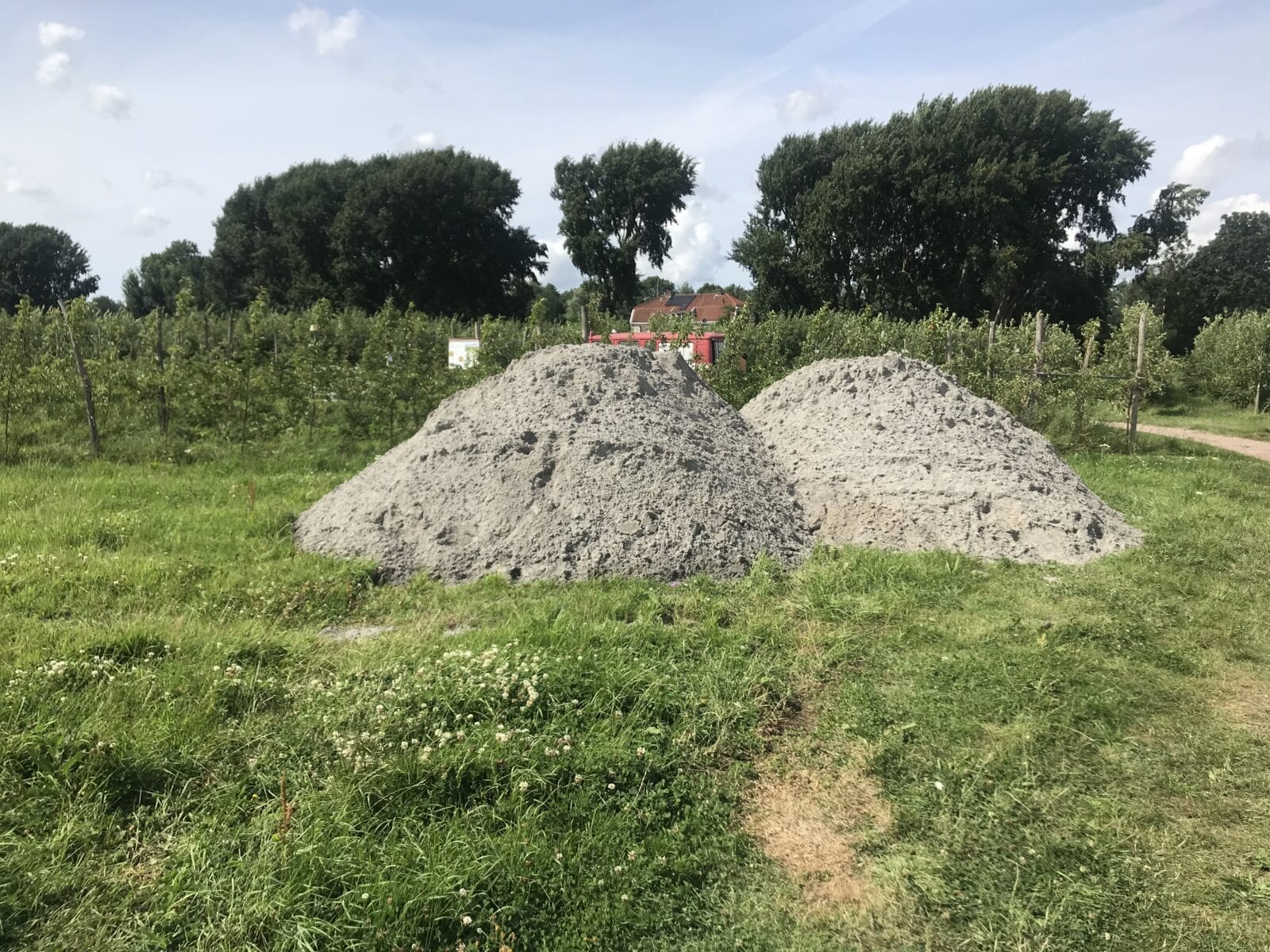Biobased Clay Construction Experience Garden
Fruit Garden of West
Pavilion the ‘Raathuis’
A new, intimate, inspiring, educational location
with the theme “The Bee” in the Fruit Garden of West in Amsterdam.
The ‘Raathuis’ is used – and can be rented from the 1 June 2020 for various small-scale nature experience-related cultural activities. As an “artist in residence” and or as a wedding location
To rent the ‘Raathuis’, please contact the
Biobased Clay Construction Experience Garden
The “Raathuis” was built by order of the Fruittuin van West as a kick-off for the future construction of a number of thematic biobased pavilions within the setting of a Biobased Clay Building Experience Garden. From now one, interested visitors of the Fruittuin van West are able, in addition to gaining theoretical as well as practical information in the field of circular agriculture, to also experience what it is like to build with soil (loam) and crops that grow on the earth through public construction workshops and exhibiting a variety of biobased (loam) construction techniques in several small buildings.
The Cord Wood technique
The pavilion is built with short wood by using the Cord Wood technique and the ZERO WASTE principle.
The Cord Wood technique is originally a natural construction method in which short tree trunks are stacked crosswise in a “natural” mortar mixture to build walls. This technique uses local materials at minimal cost.
The Bee
The Beehive of the ‘Raathuis’ is still in the making (June 1, 2020). The intention is to create a nesting place with a surface of sand (loamy sand) for the solitary bees and wasps, which normally nest underground, and are threatened with extinction,
 Stadshout Amsterdam
Stadshout Amsterdam
Stadshout (Amsterdam) was responsible for the design and execution of the construction, They supplied wood for the skeleton, residual wood for the construction of the walls, plus the wood sawdust for the composition of the mortar mixture, as additional insulation for the clay walls. Wood shavings were used as intermediate wall insulation.
The Stadshout Amsterdam Foundation processes felled trees from our city in a sustainable and ecological way, and gives the trees a new destination in their own city.
sketchup-model van Willem van Oostveen Stadshout
Ode to the Poplar
The wood that has been used mainly comes from the Poplar tree. The Poplar is one of the most common tree species that grows in the Netherlands. In earlier days it was widely used as lumber. The Poplar wood, although it grows fast, is extremely strong and resistant to weather influences due to its cross-fiber structure. Besides used as lumber, Poplar has been widely used to make clogs that are therefore almost unbreakable..
The Poplar trees are a defining element in the Dutch landscape. They are planted along roads, dikes and windbreaks. The tree usually produces beautiful straight trunks that only branch out after 5-6 meters, so they yield a lot of “error-free” wood.
This pavilion is certainly an ode to the Poplar!
The origin of most trees is engraved in the wood of the ‘Raathuis’.
‘

Tierrafino (Amsterdam Clay Factory) supplied clay for the construction of the walls . Took care of the execution of the outer walls and the plaster of the inner walls with adhesive clay and “Base”, white and ocher-colored basic clay with straw.
Loam one of the oldest building materials in human history optimizes air and moisture, saves energy and CO2, is fully circular, antistatic, mold-resistant and sound-absorbing. Warm in the winter and cool in the summer it creates a healthy and balanced indoor climate that perfectly matches modern sustainable building needs and climate goals.
The bottle window / ornament n the Pavilion is set in with “Base”, white basic loam with straw.The recycled apple juice bottles from the Fruit Garden, which are incorporated in the back wall, were collected during the construction process to create a unique pattern with a special incidence of light in the pavilion.
Bioseal
Impershield impregnated the outer walls of the ‘Raathuis’ with Bioseal to make them water resistant. This company develops natural products that are basically conceived and applied by the Maya.impershield.eu
Insulation material
The roof and foundation of the ‘Raathuis’ are insulated with HempFlax and sponsored by Eco-logisch, the (online) department store for ecological life & living in Amsterdam. eco-logisch.nl
Printing
The printing company that thinks green, acts sustainably and breathes printing sponsored the printed matter. debij.nl
Audiovisual Design
Mirjam Brunke hydrologist, photographer and filmmaker filmed the construction process as part of her latest documentary on sustainable city projects in Amsterdam.miriambrunke.com
Community Building / Workshops
Stadshout (Amsterdam) and Tierrafino Clay supported the participants during the public workshops in learning the Cord Wood technique for building the wood loam walls of the ‘Raathuis’.
Thanks to all participants for their energetic efforts and results!
Thanks also to our inspiration mascots the Masonry / Earth Bees!
Sponsors
Biobased Clay Construction Experience Garden Fruittuin van West
Stadshout Amsterdam, Tierrafino Clay and the sponsors who contributed to this project have a mission to make an essential contribution to a beautiful, healthy and environmentally friendly living environment. This mission is in line with the ideological character of the Fruittuin van West.t.
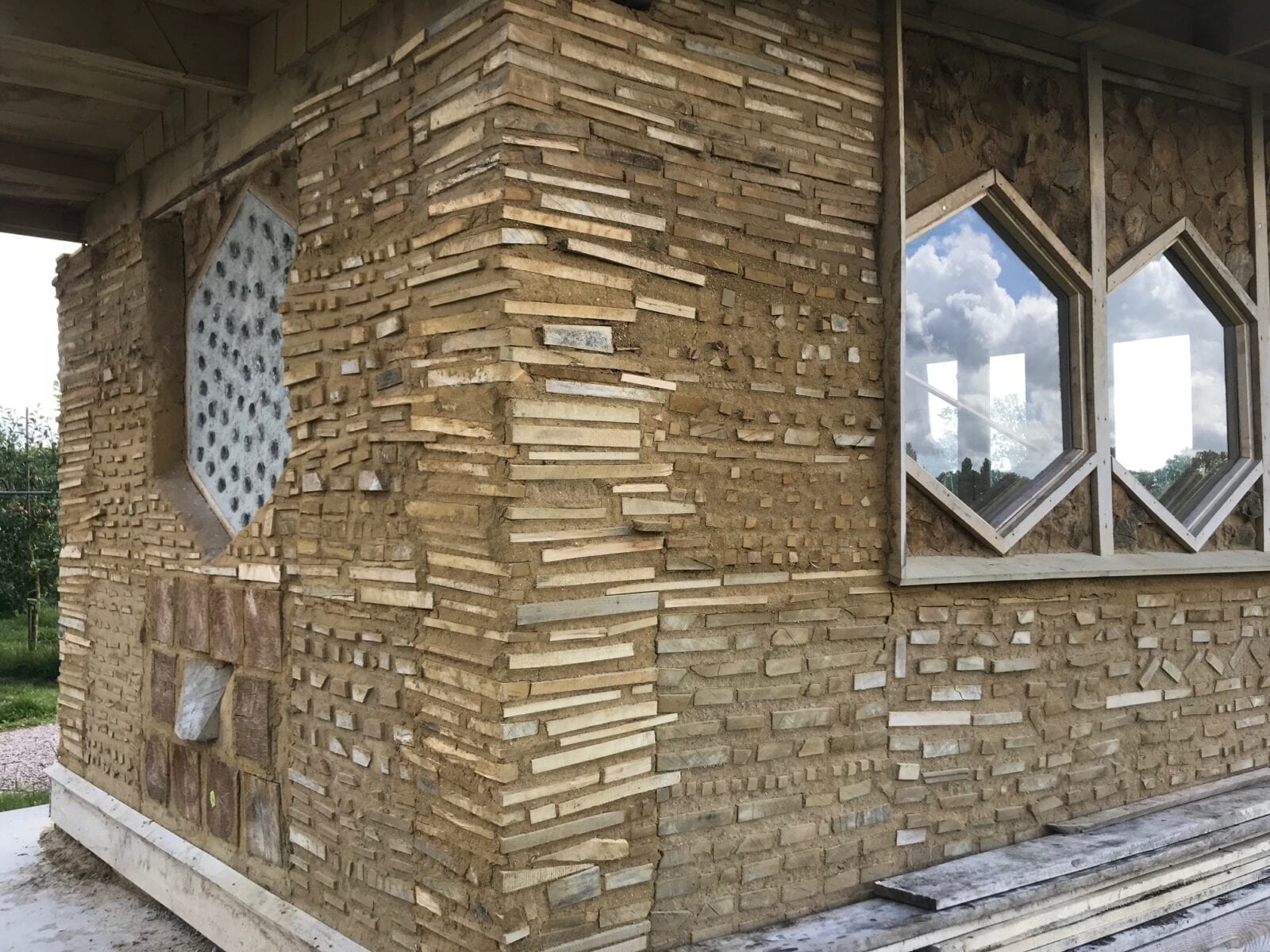

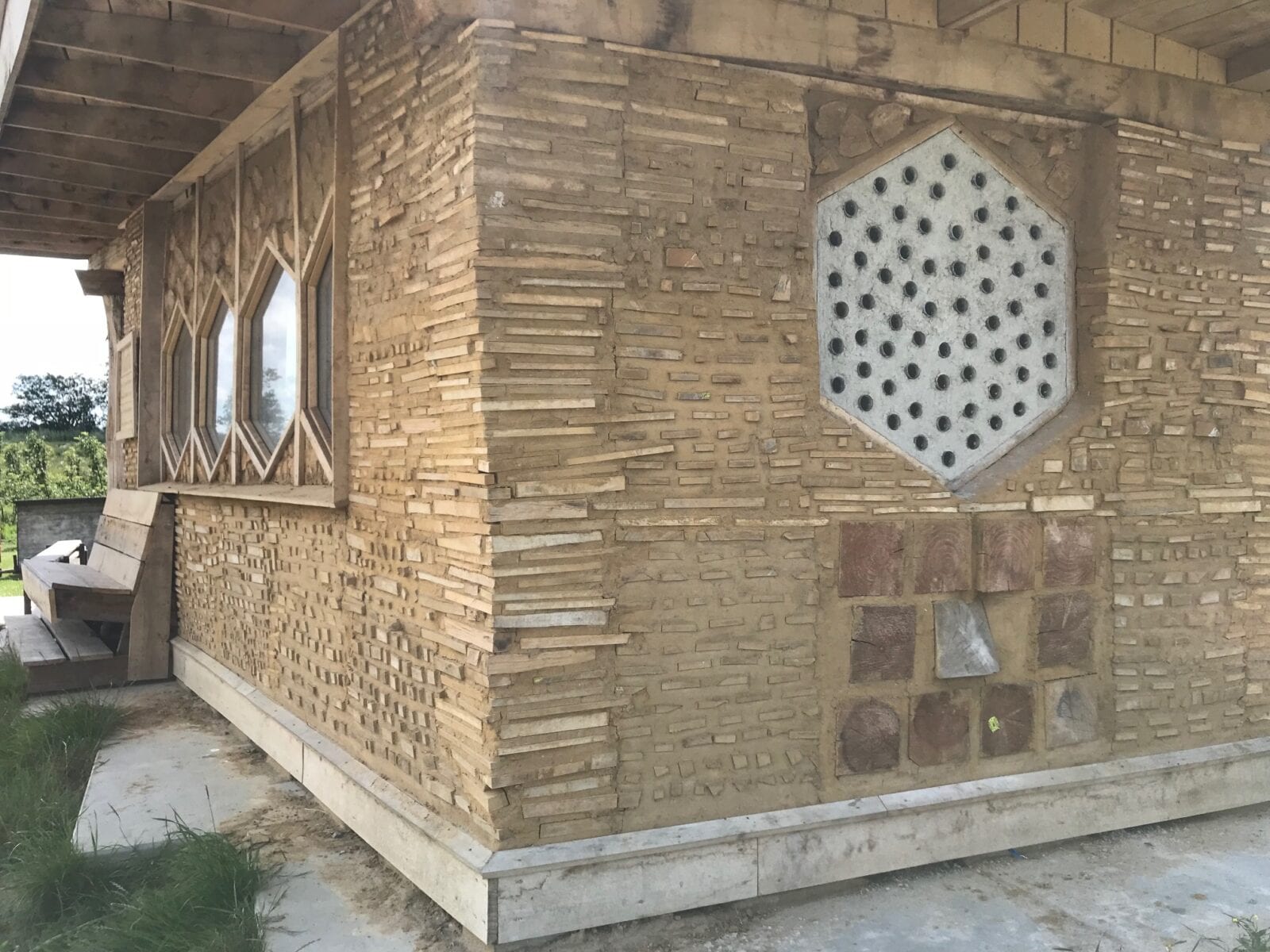

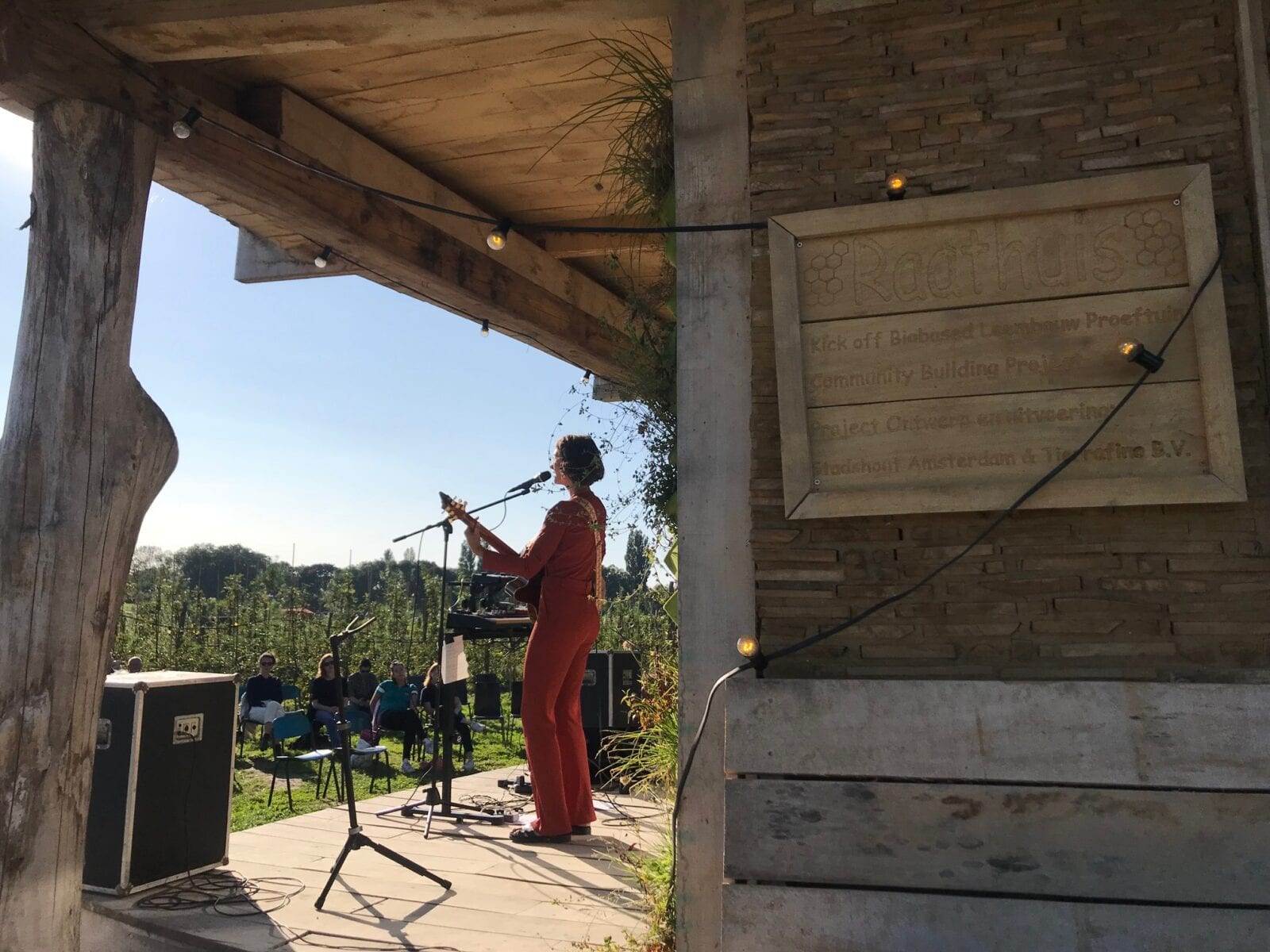



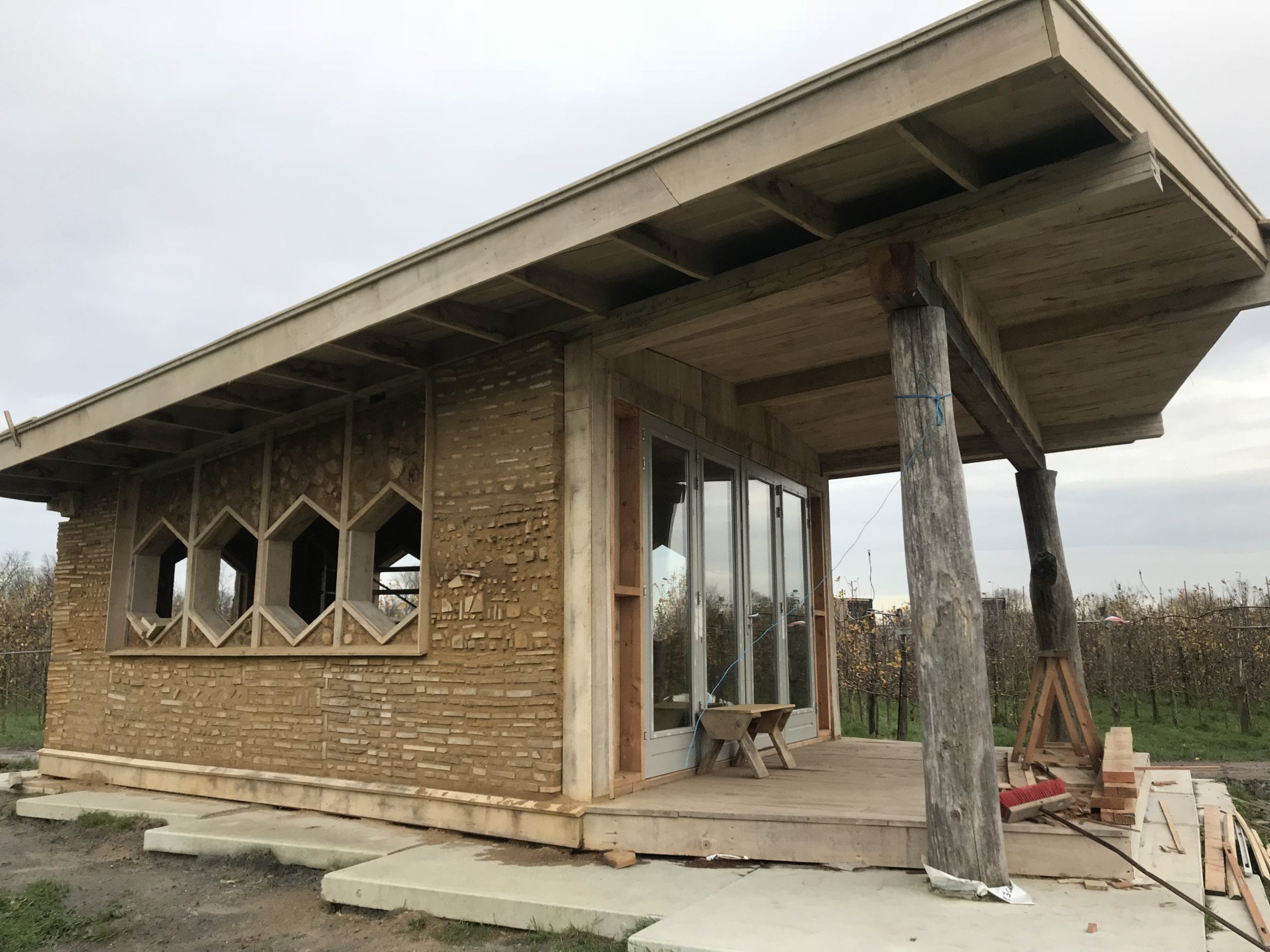
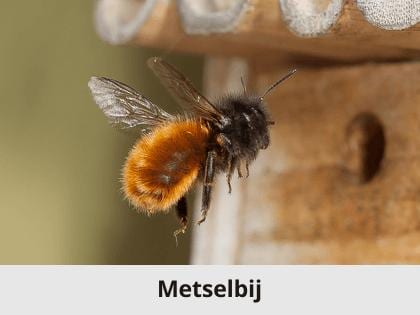
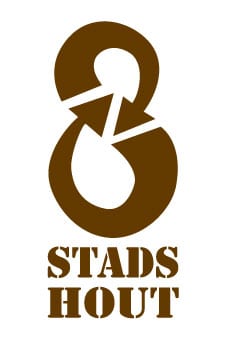 Stadshout Amsterdam
Stadshout Amsterdam